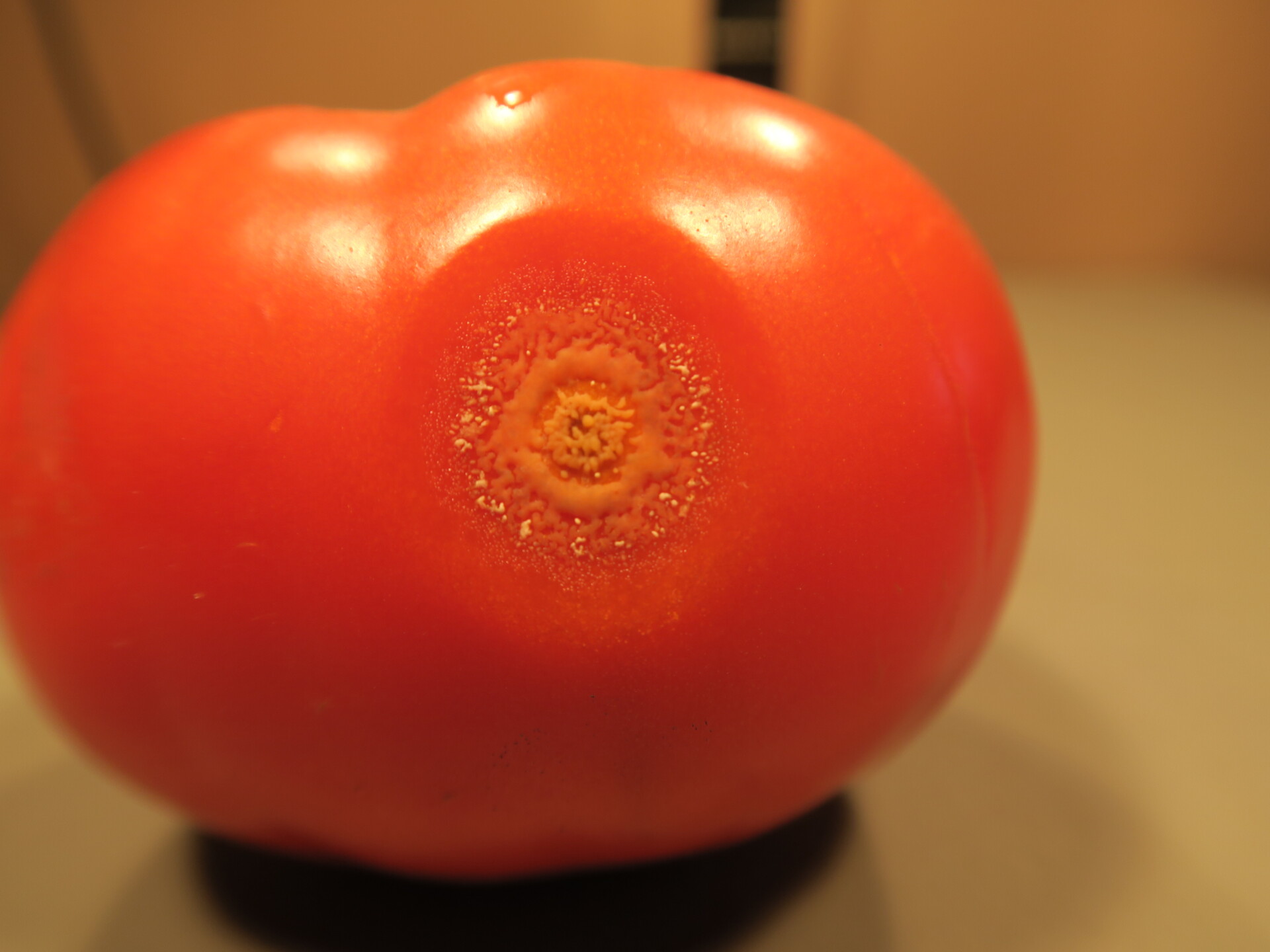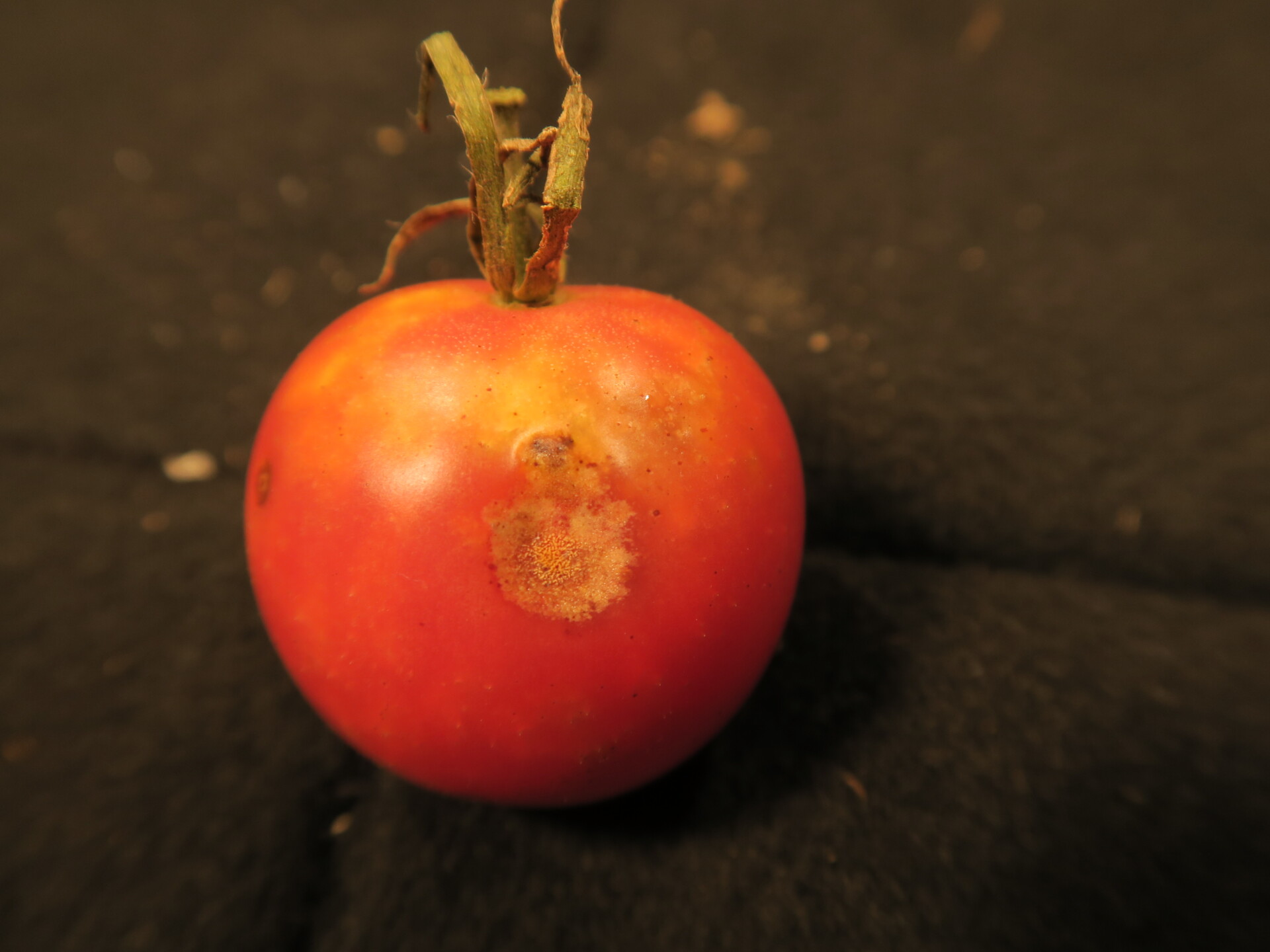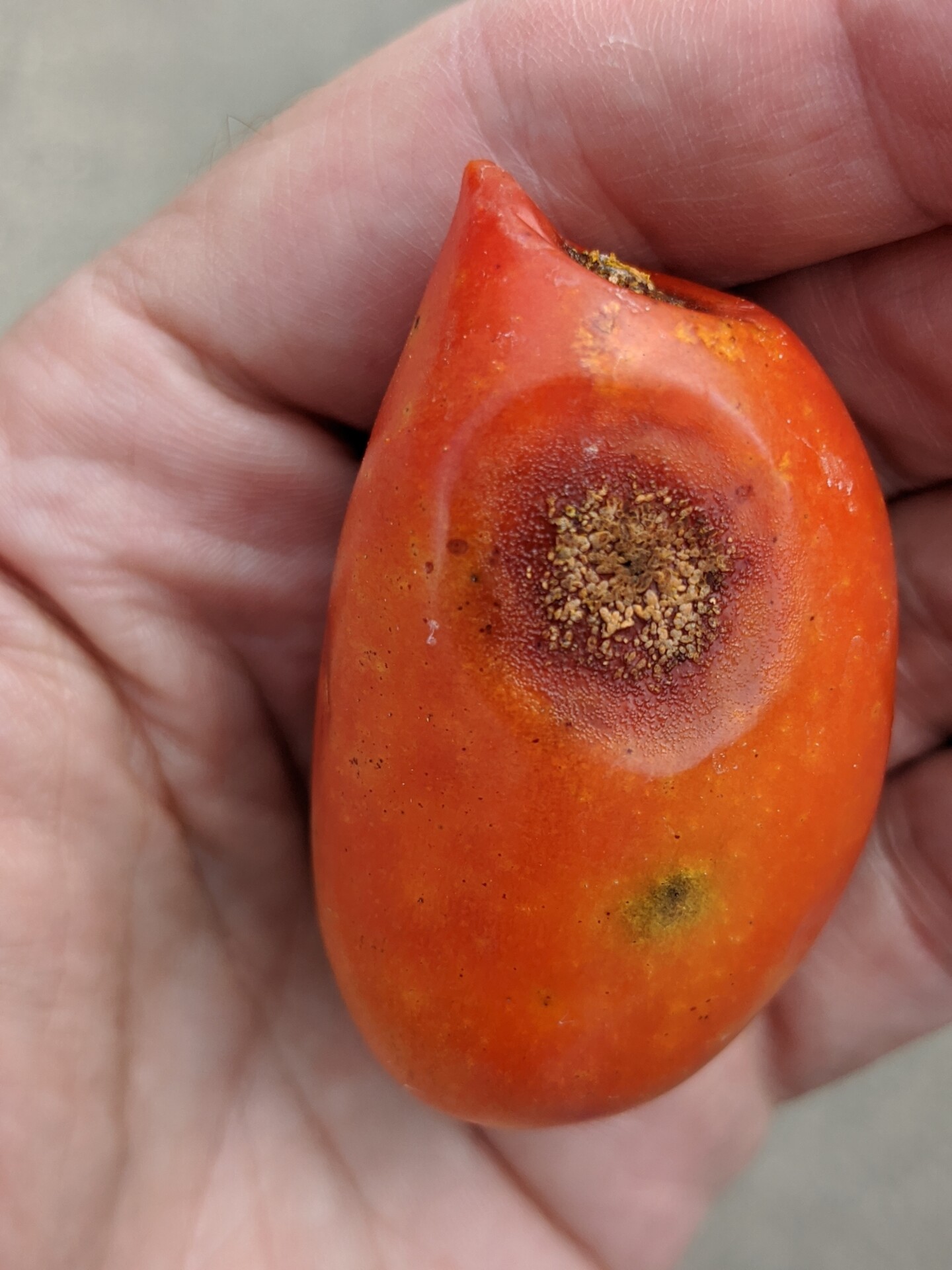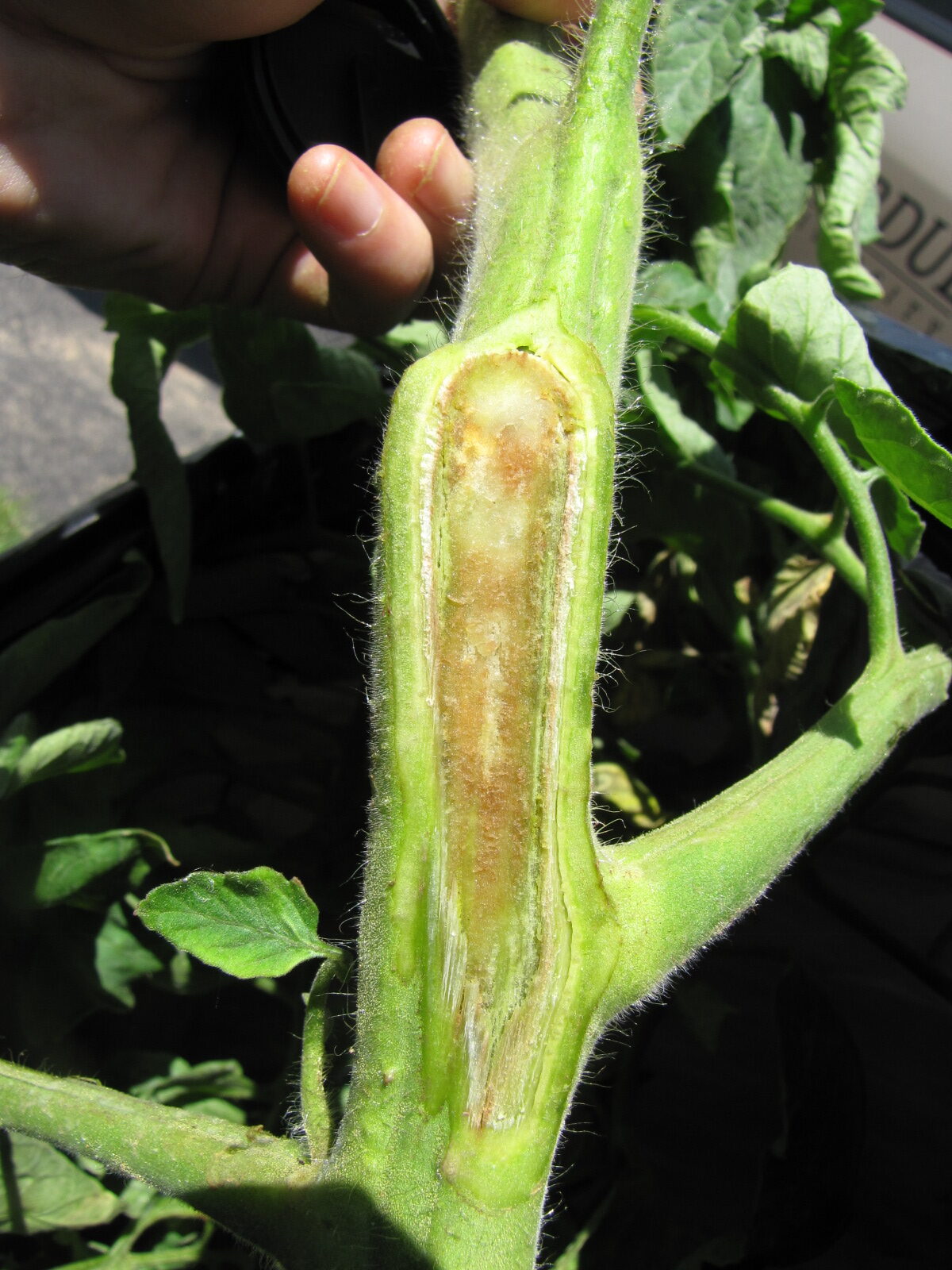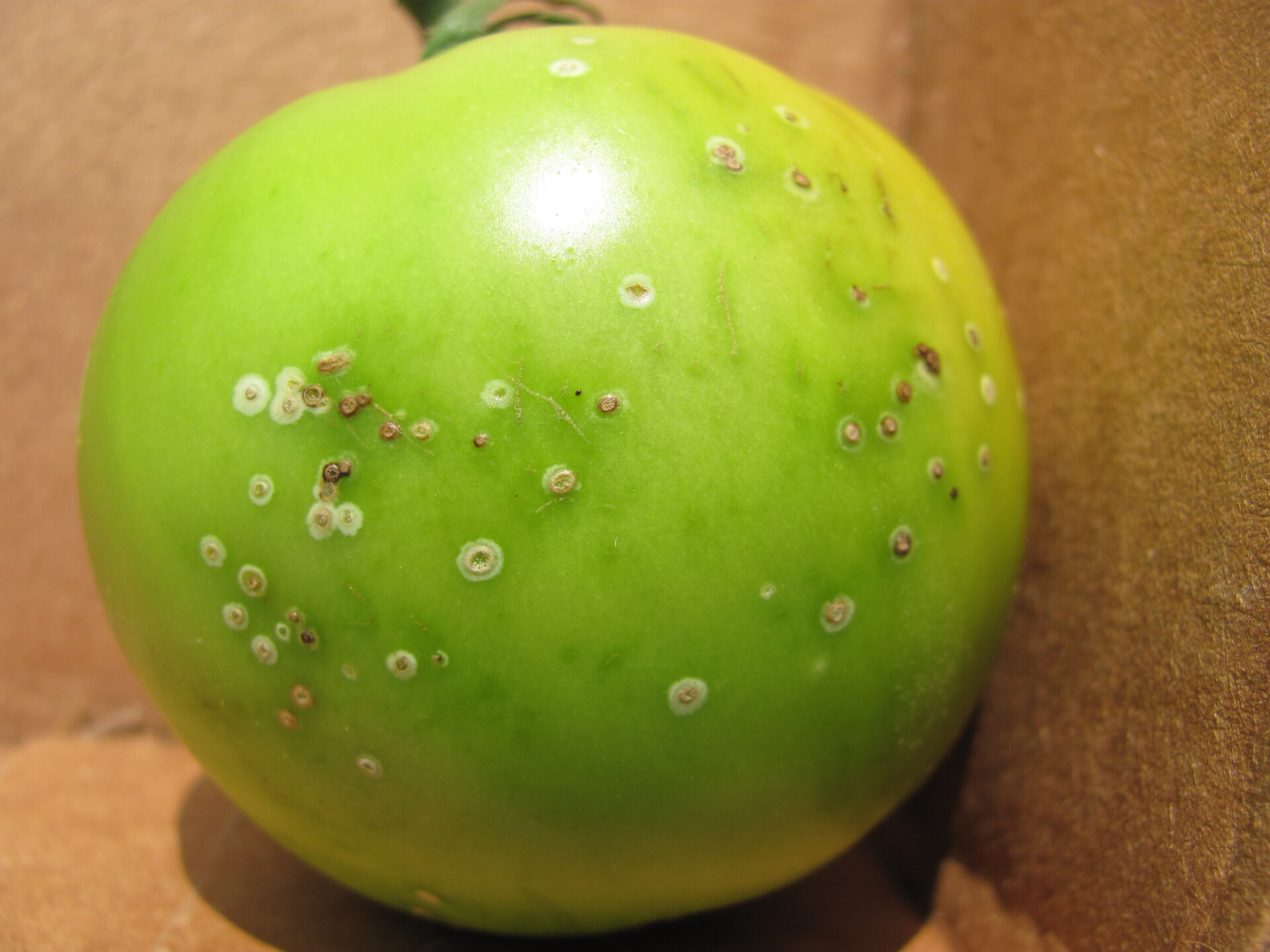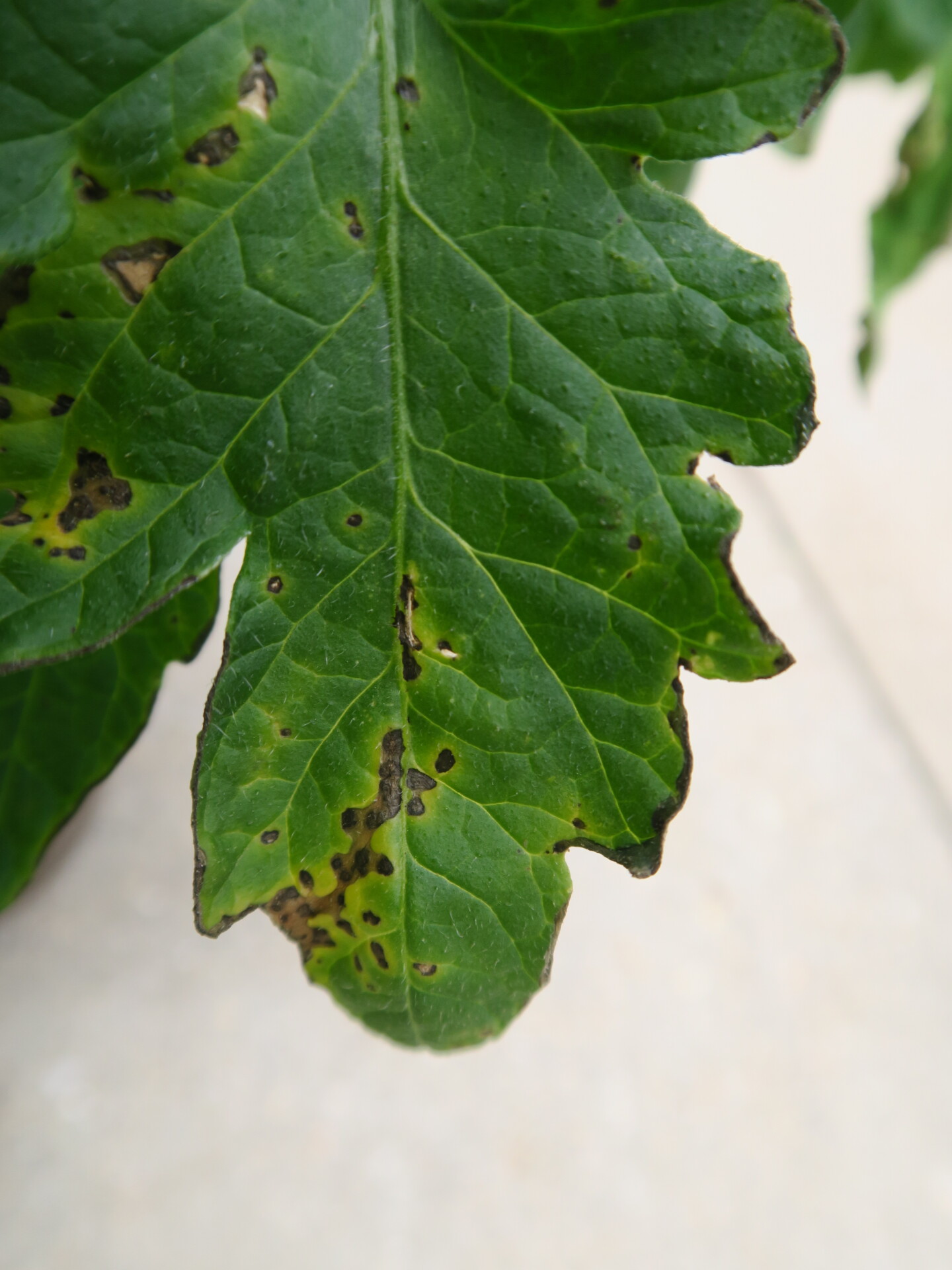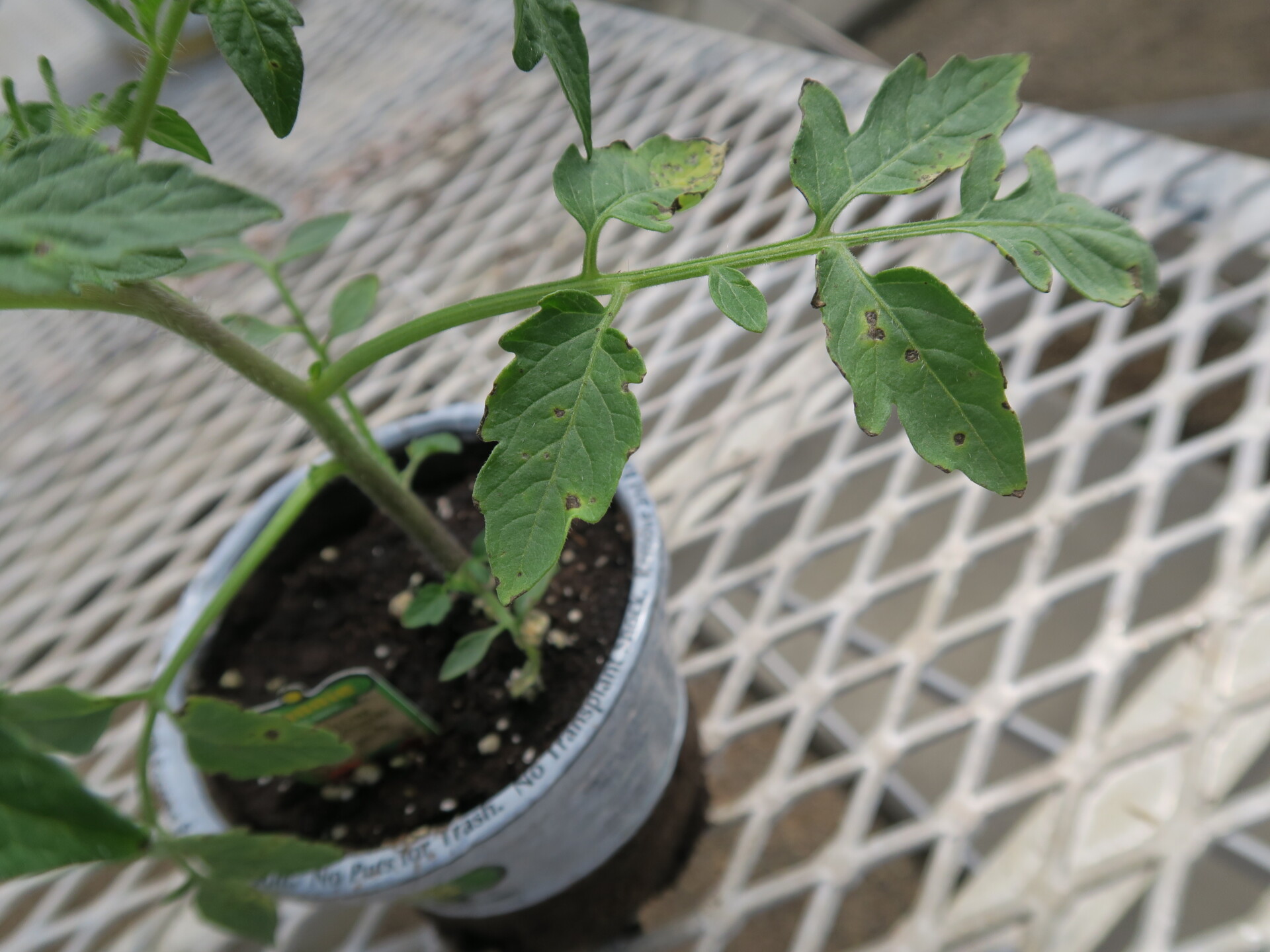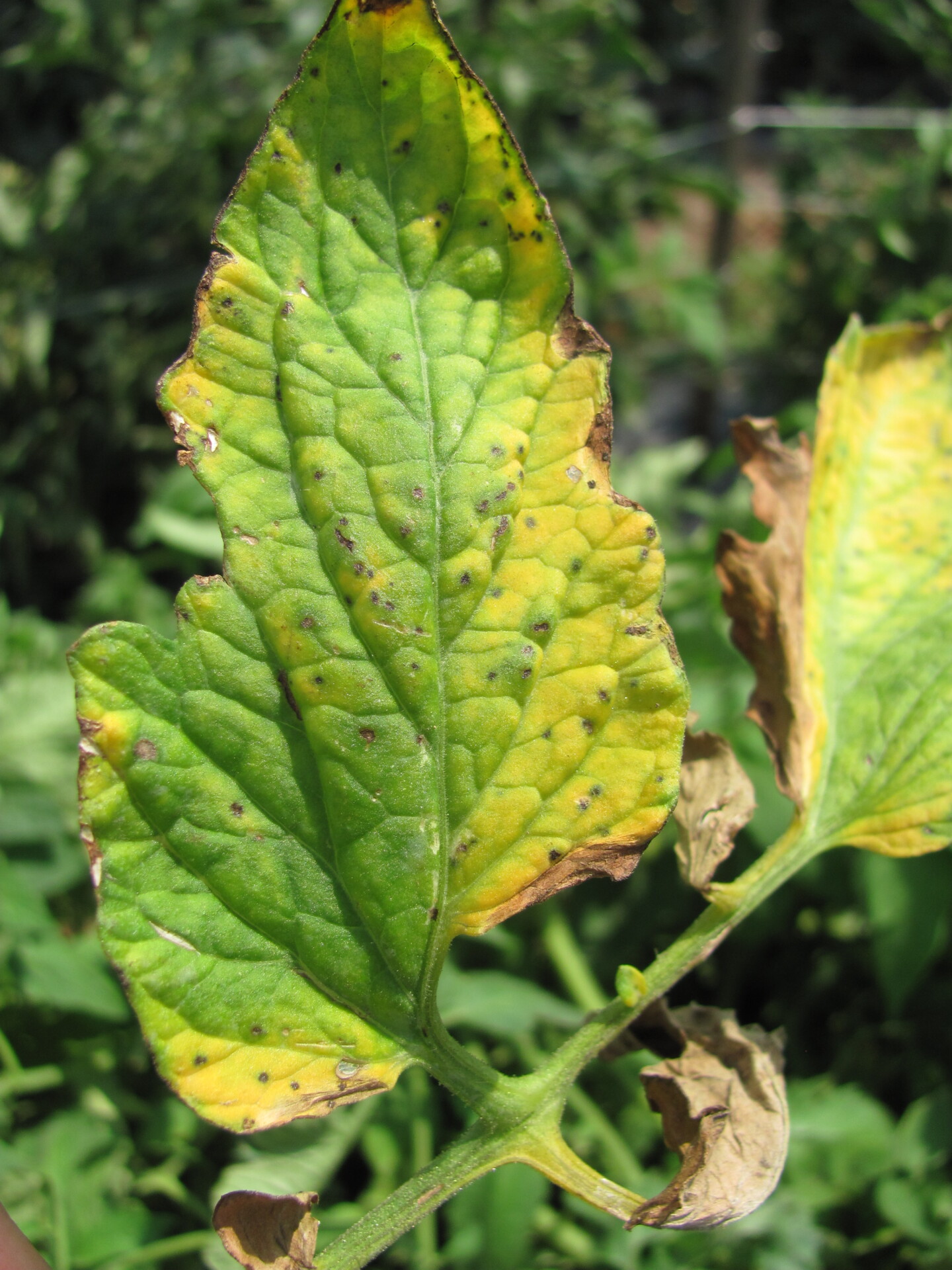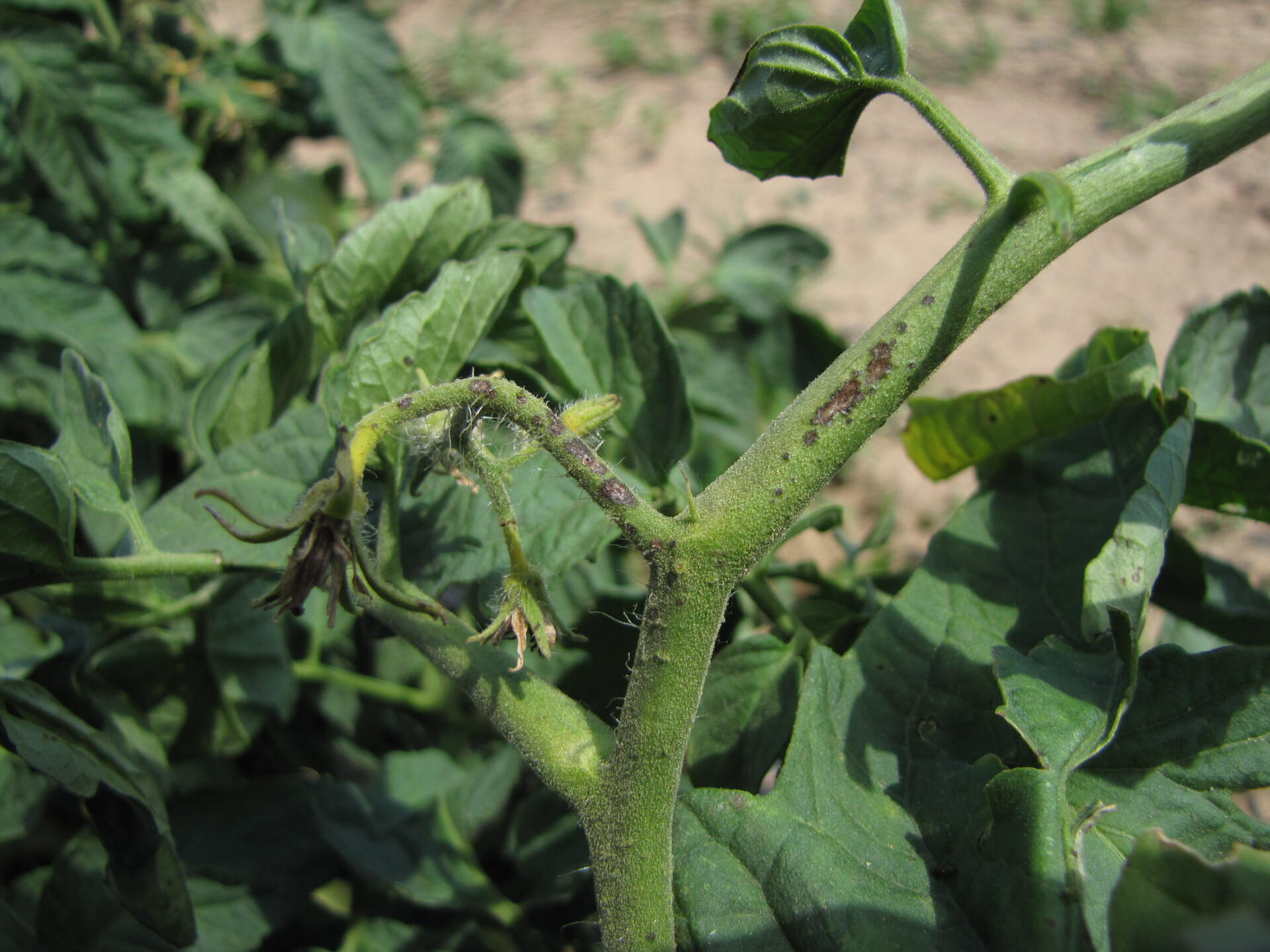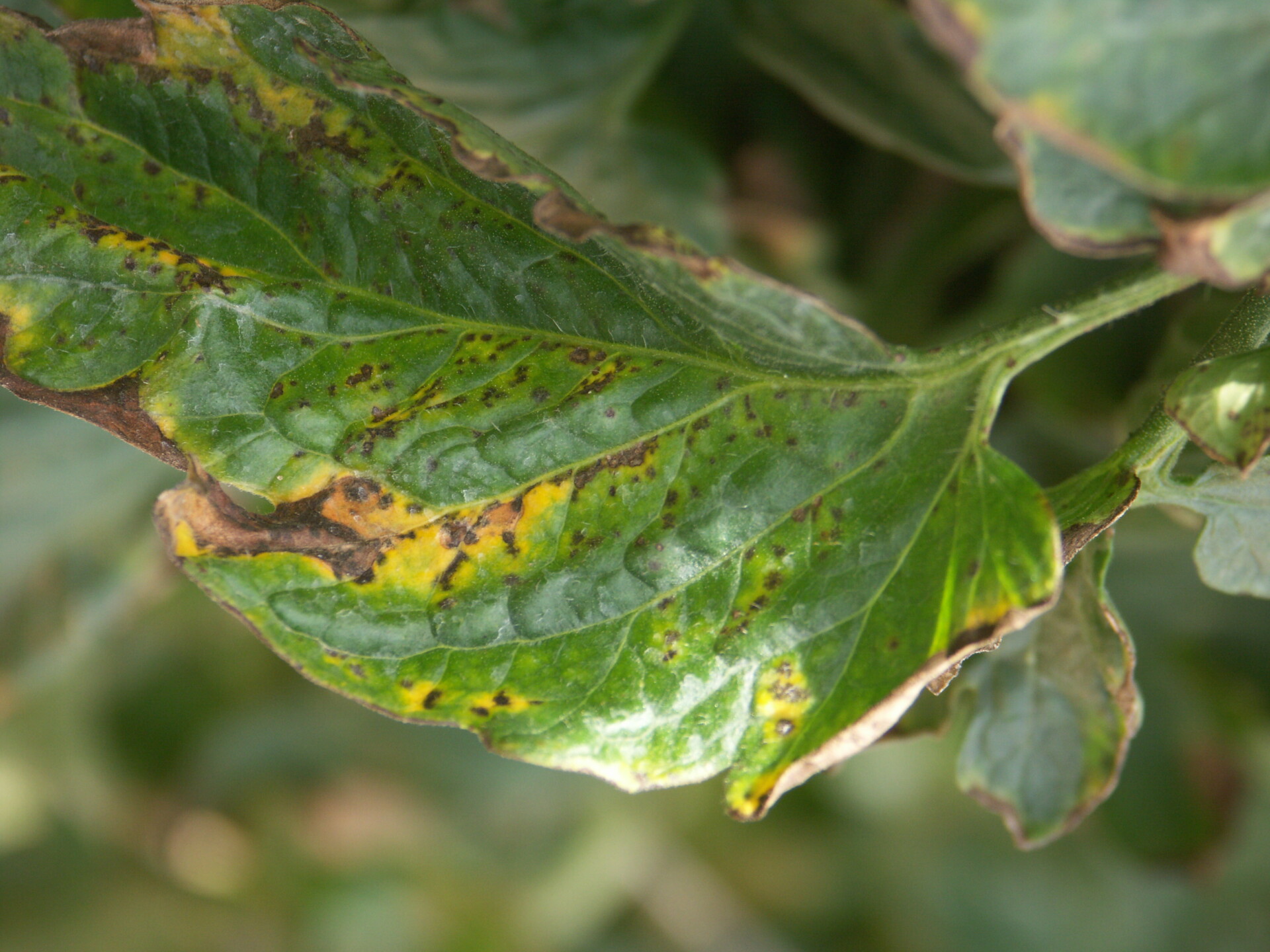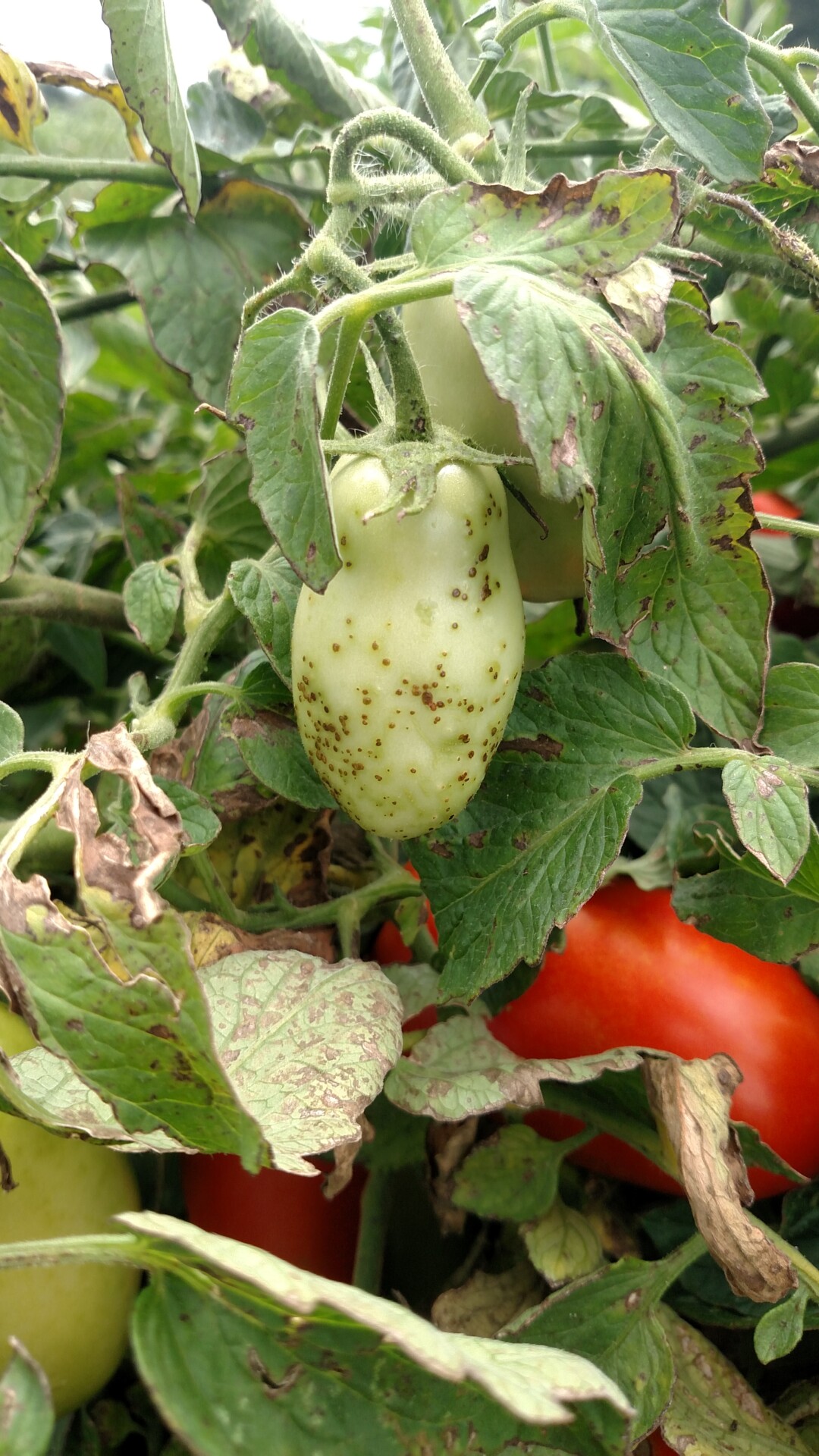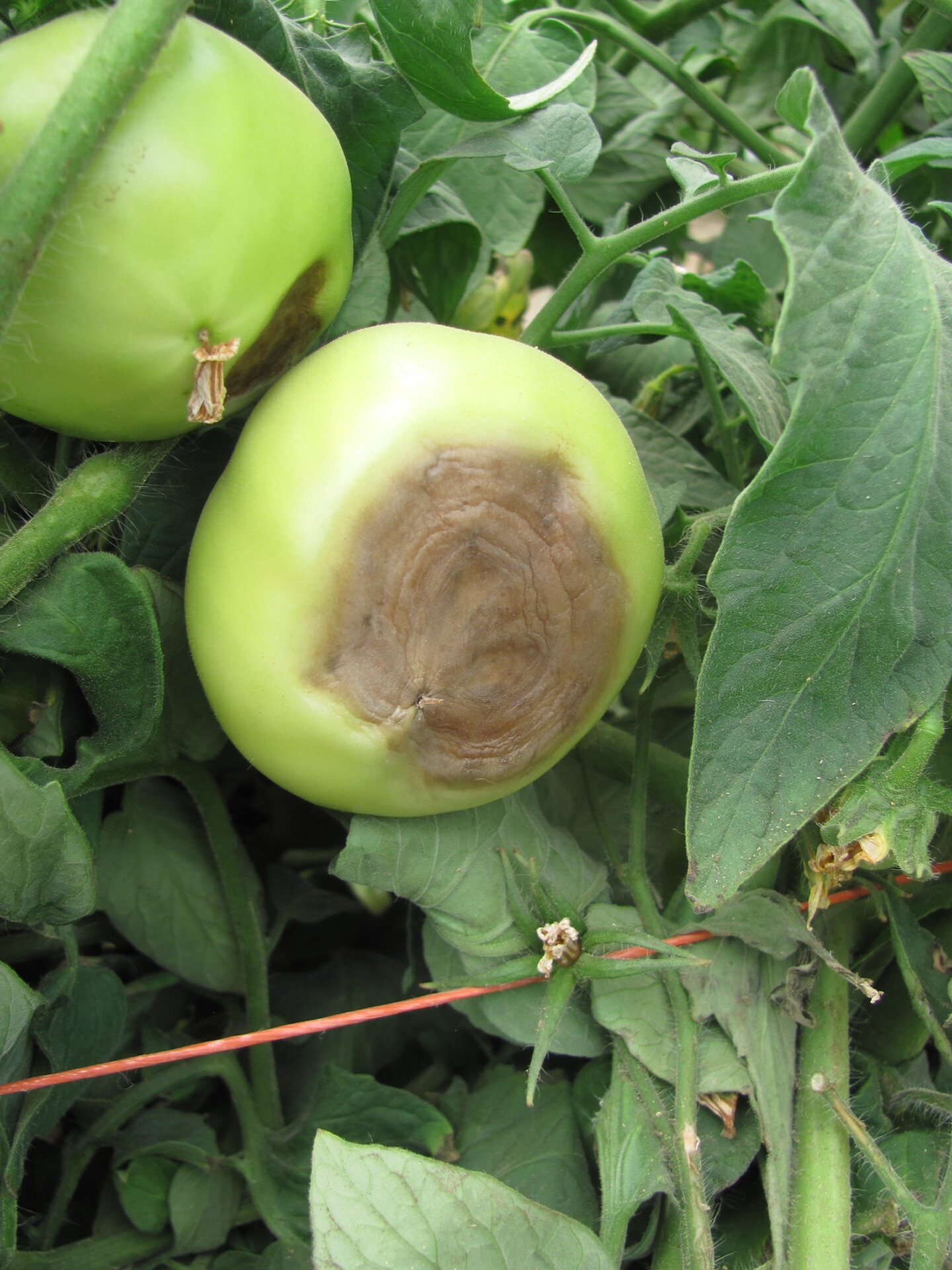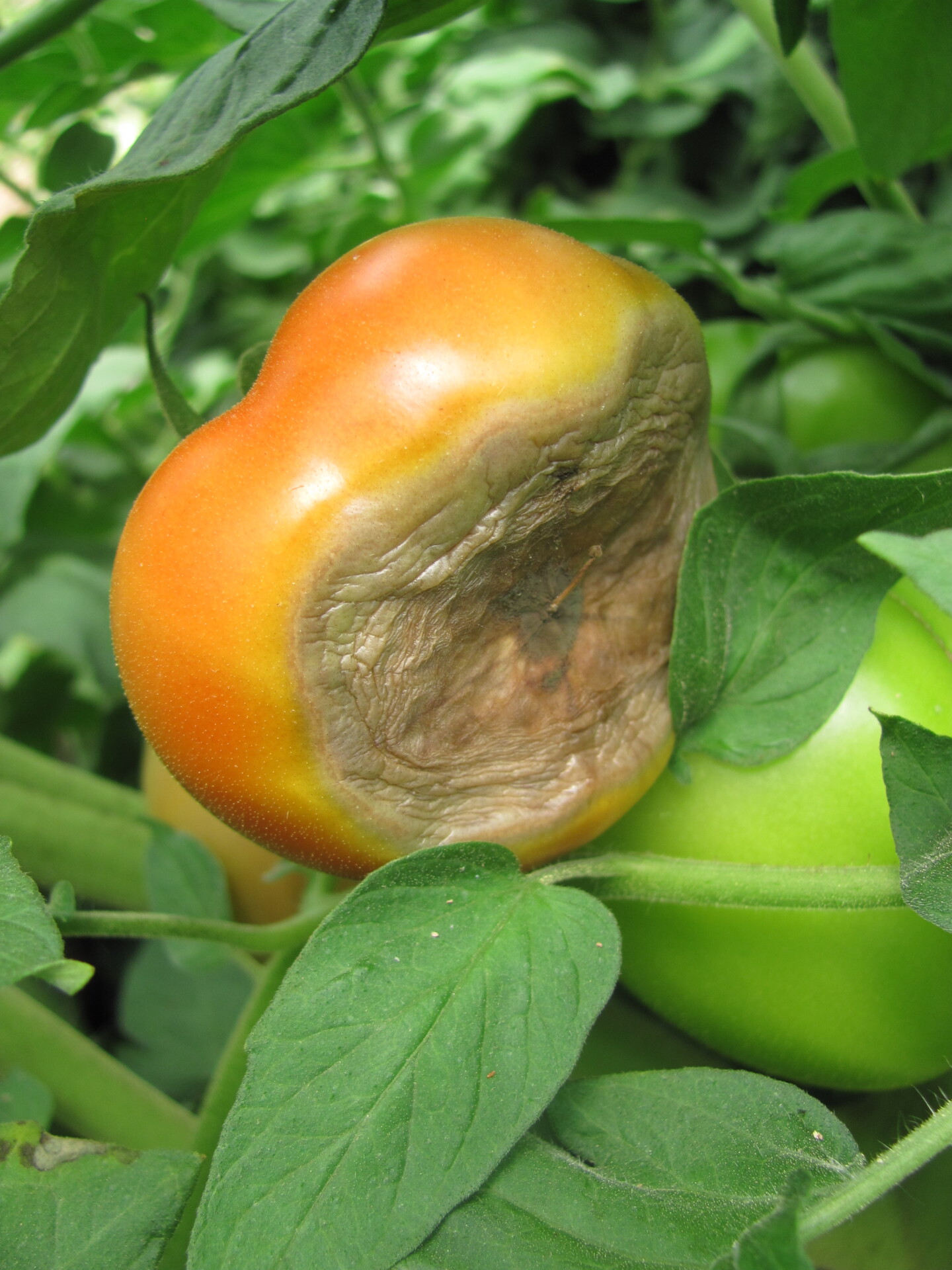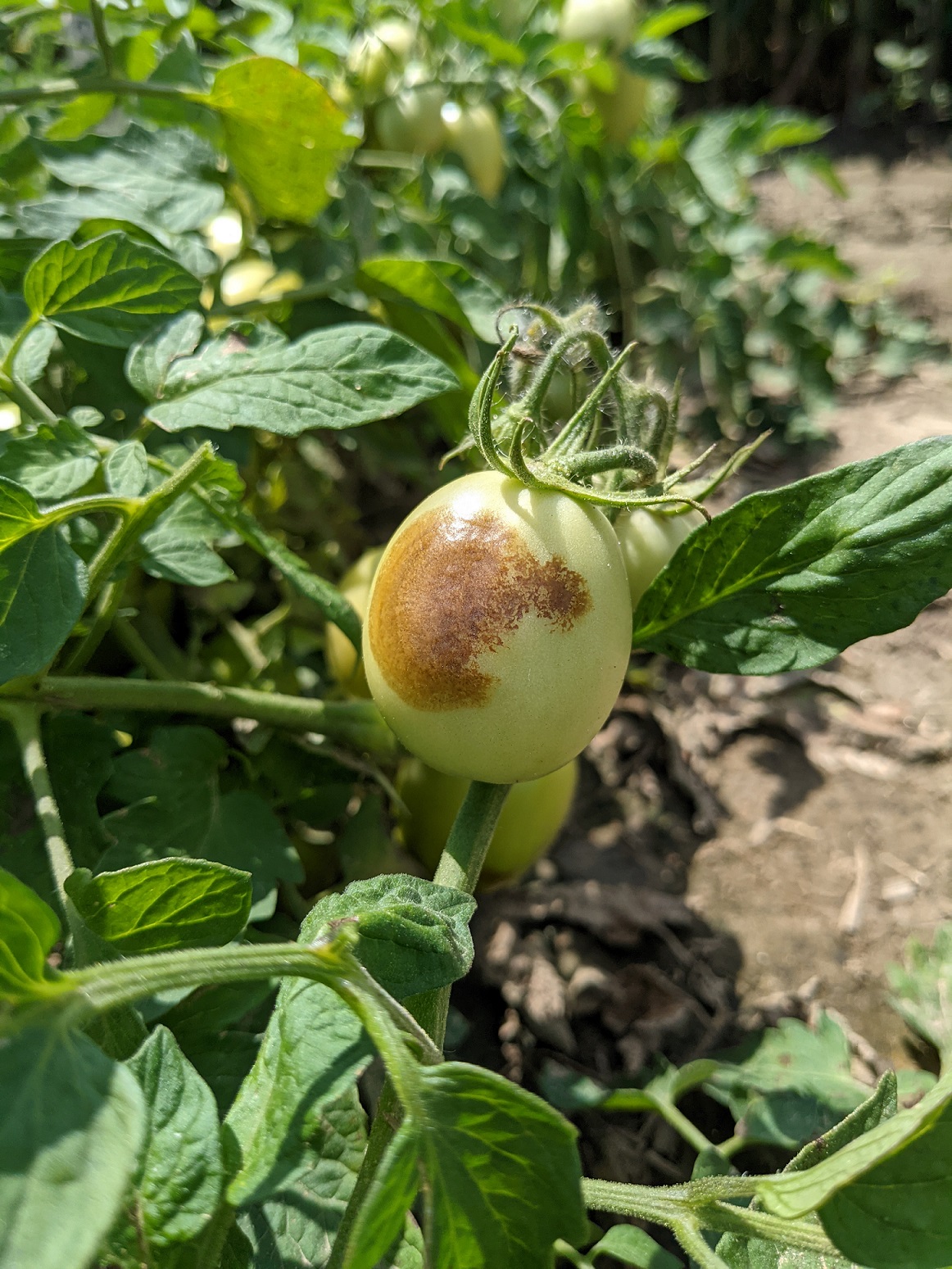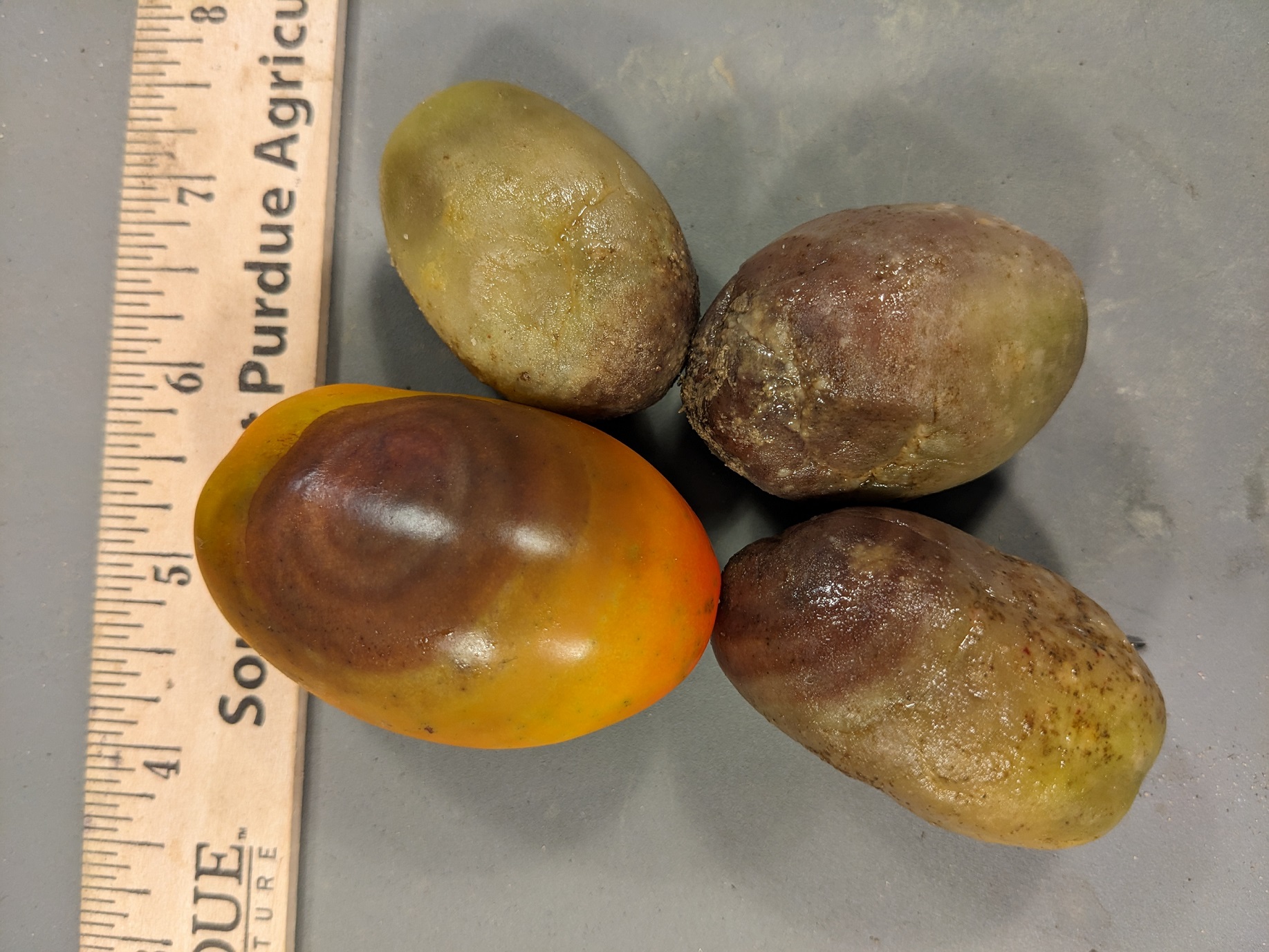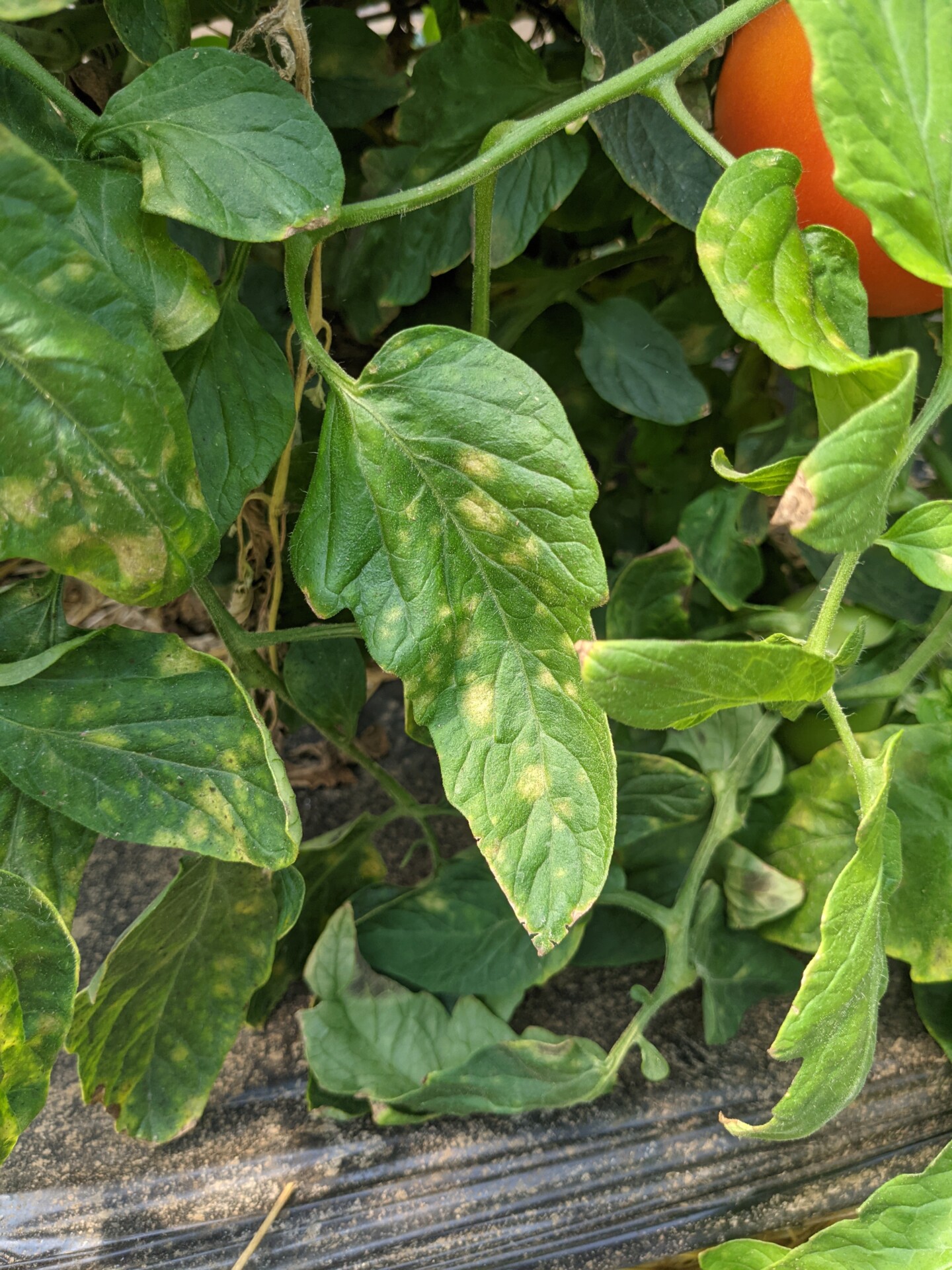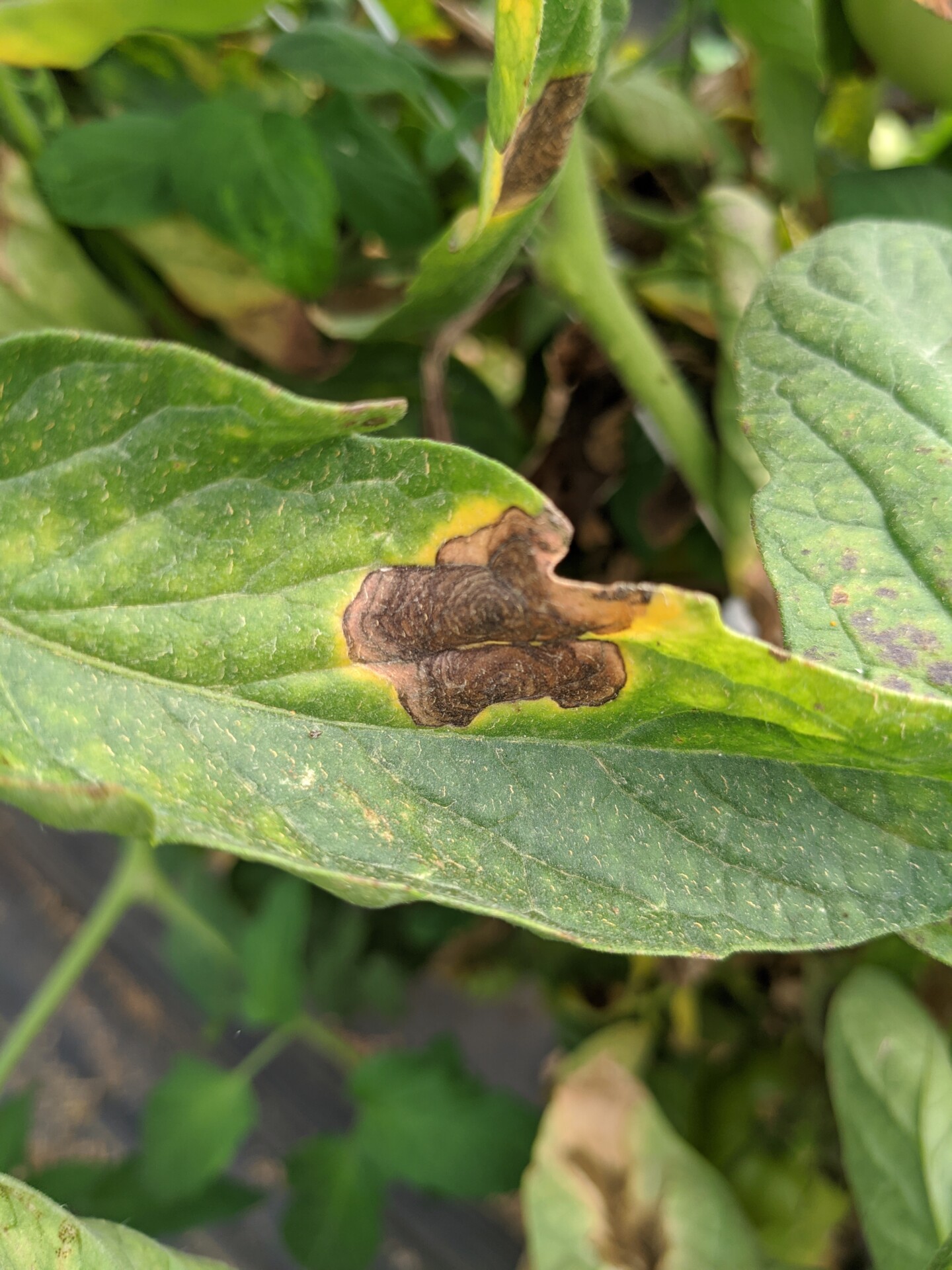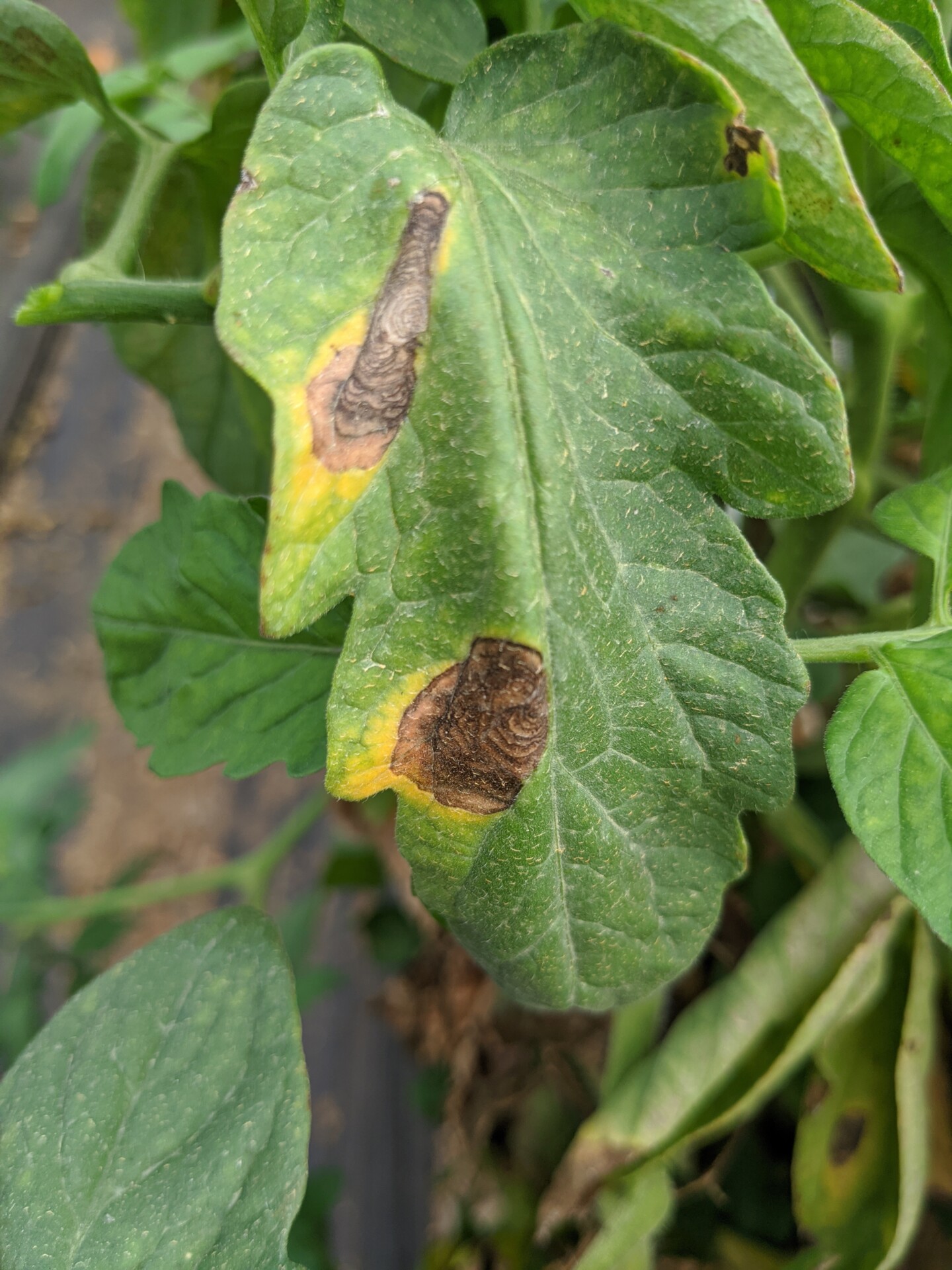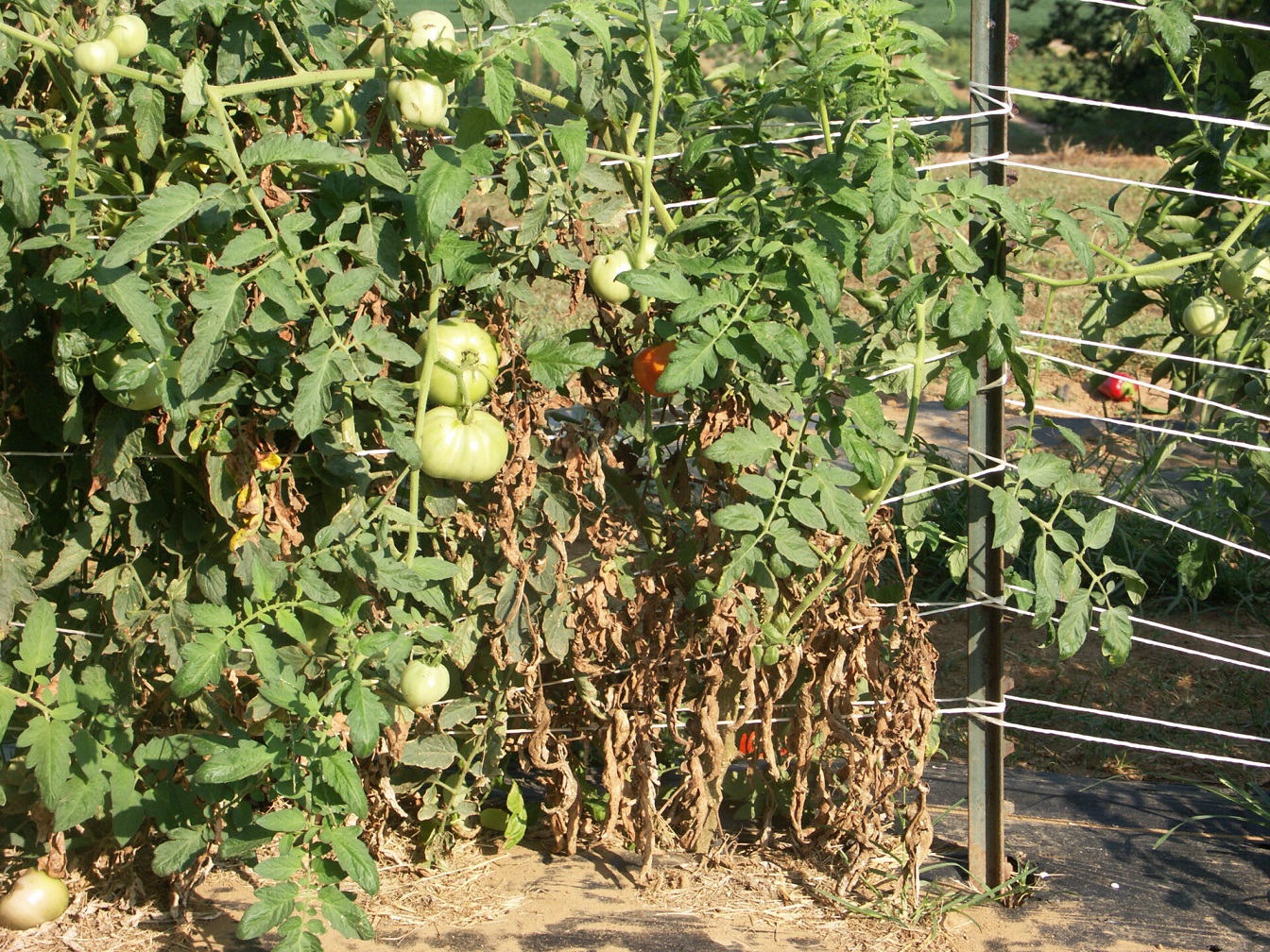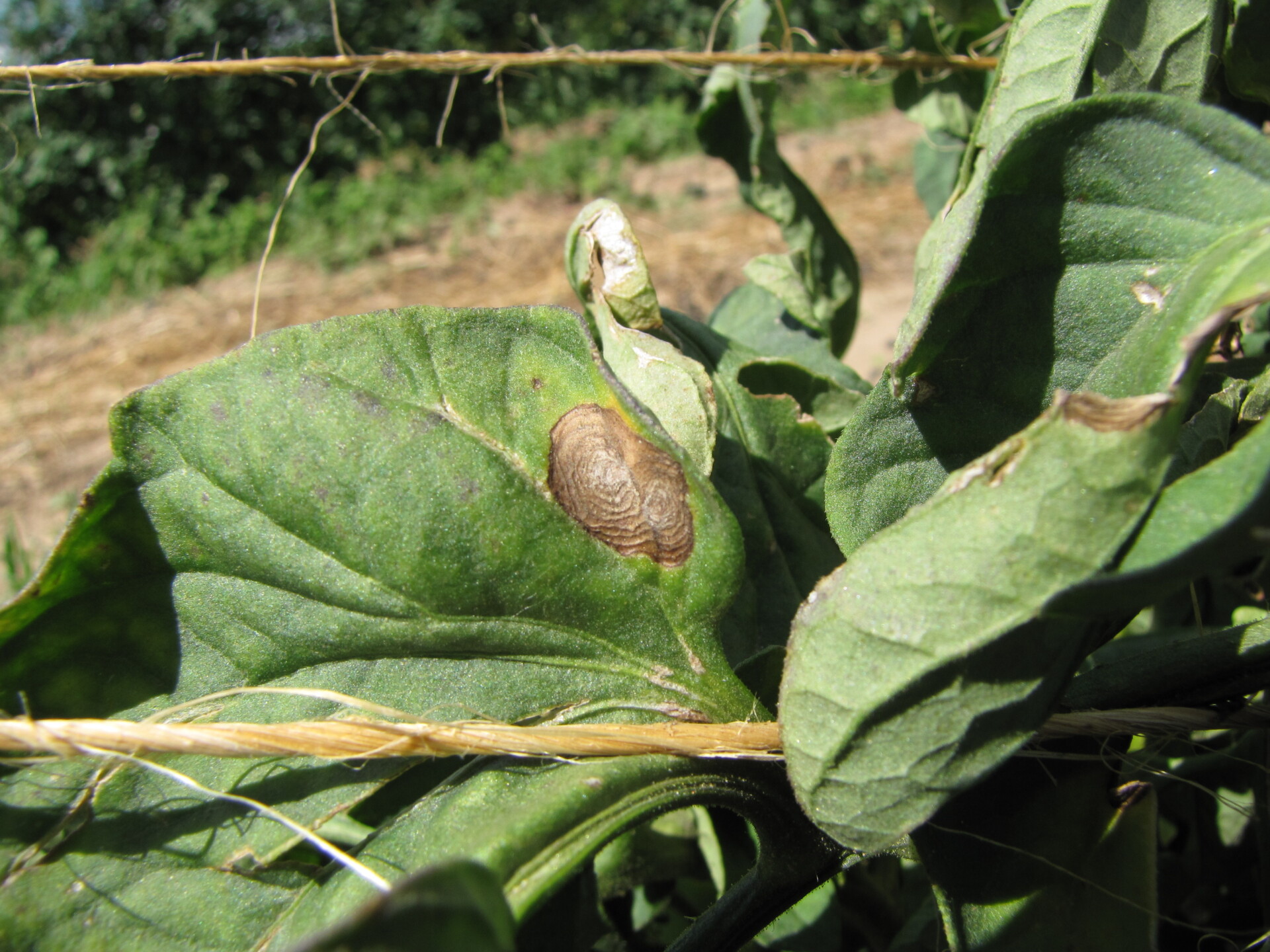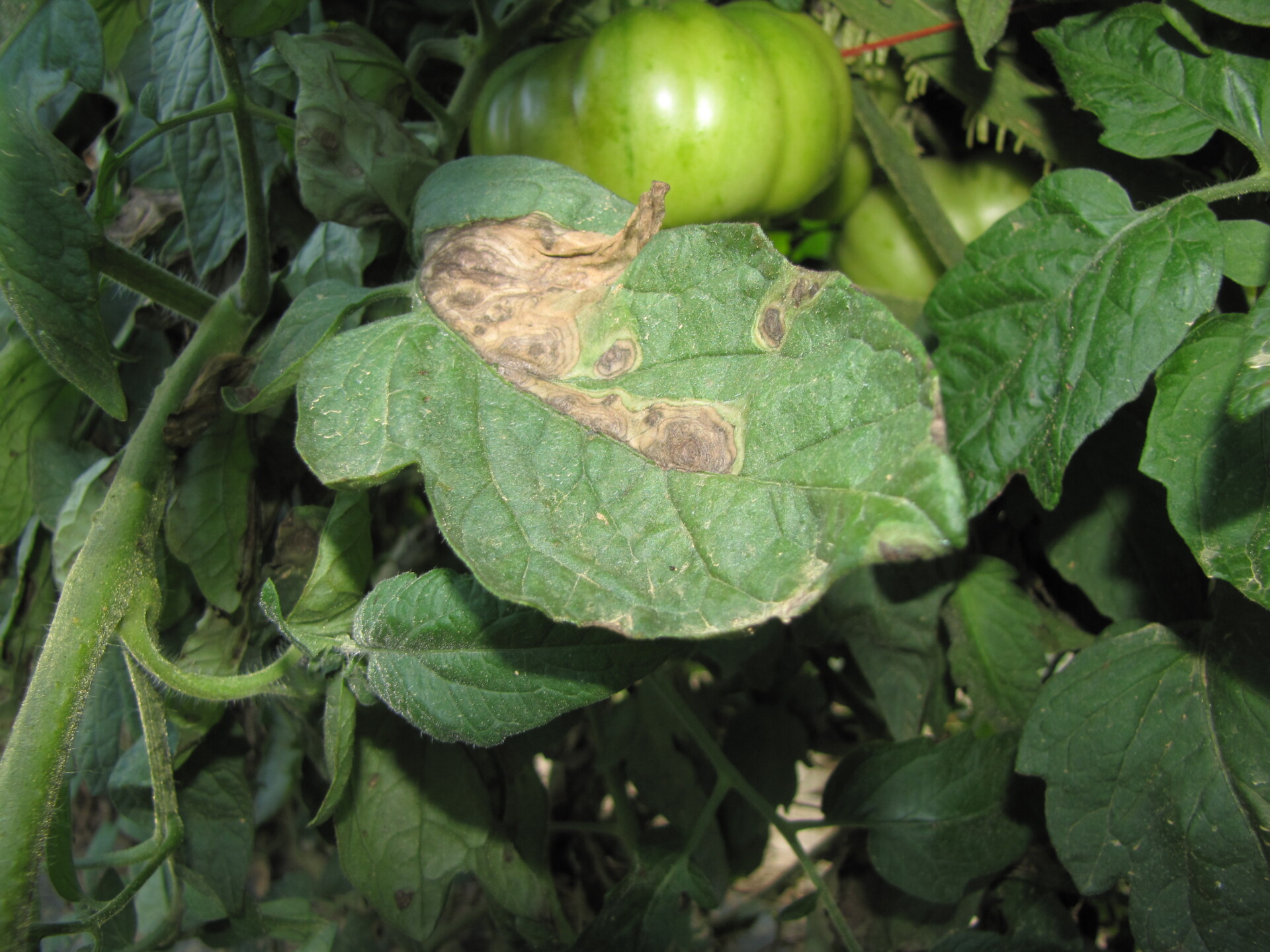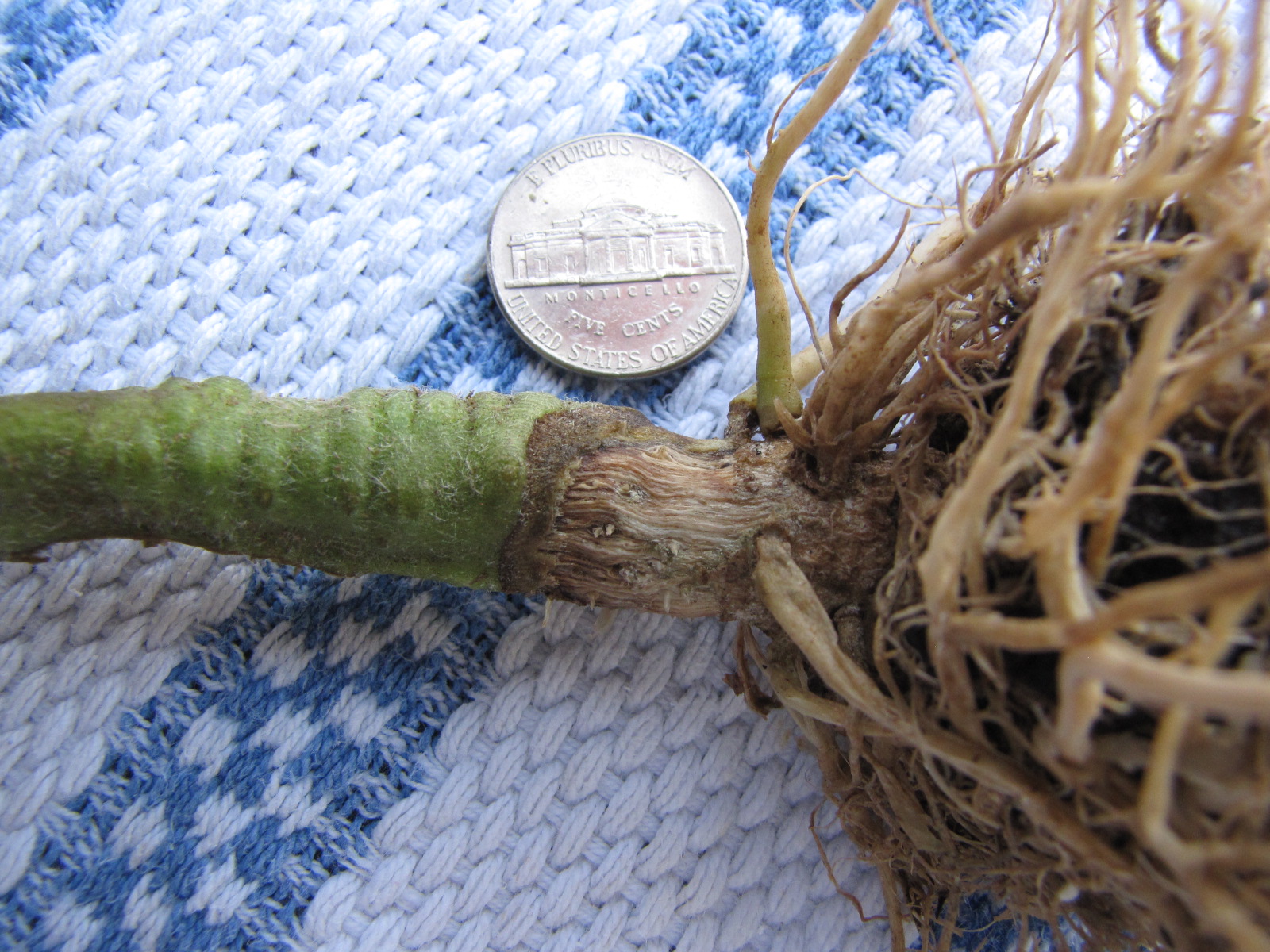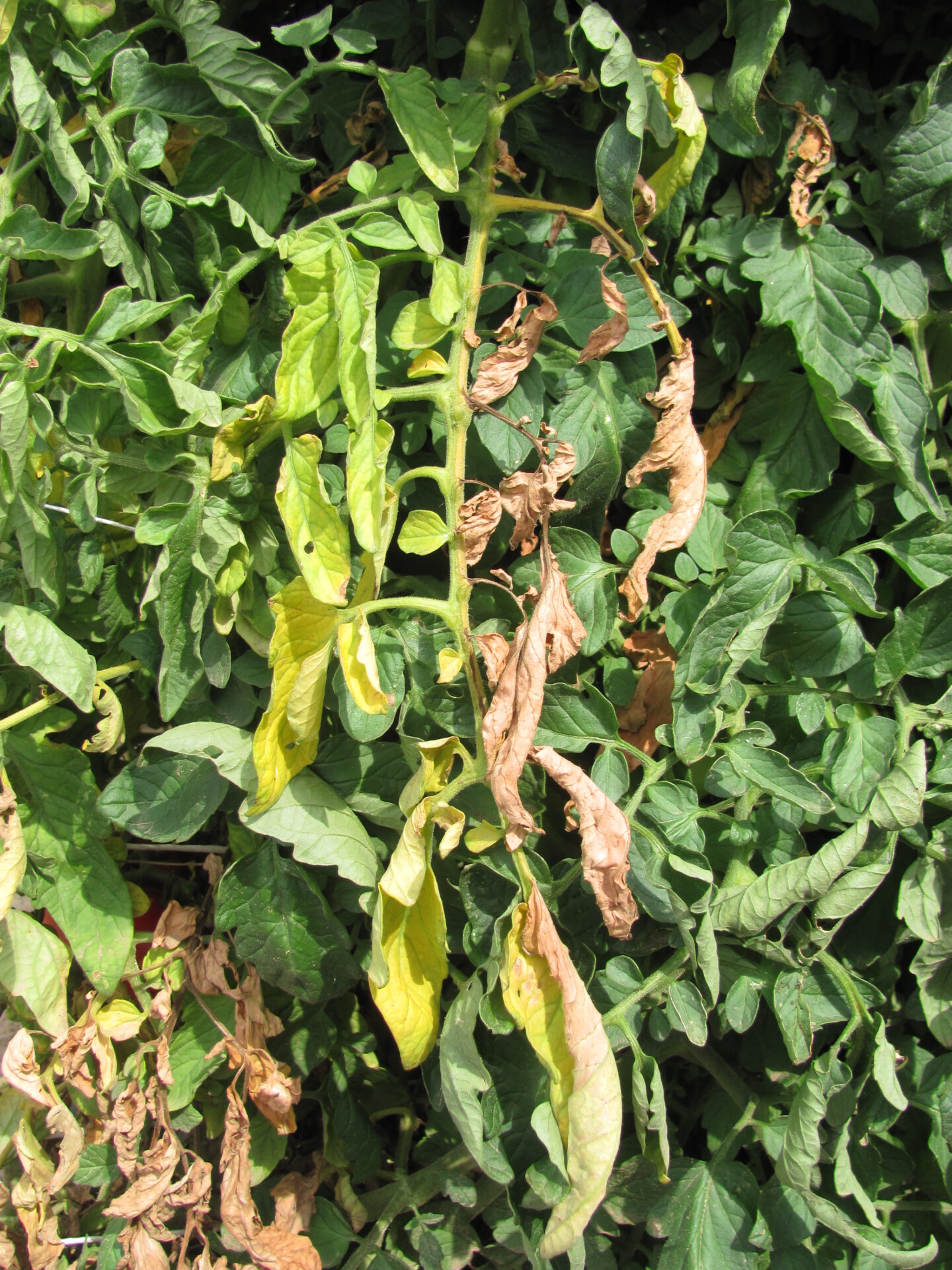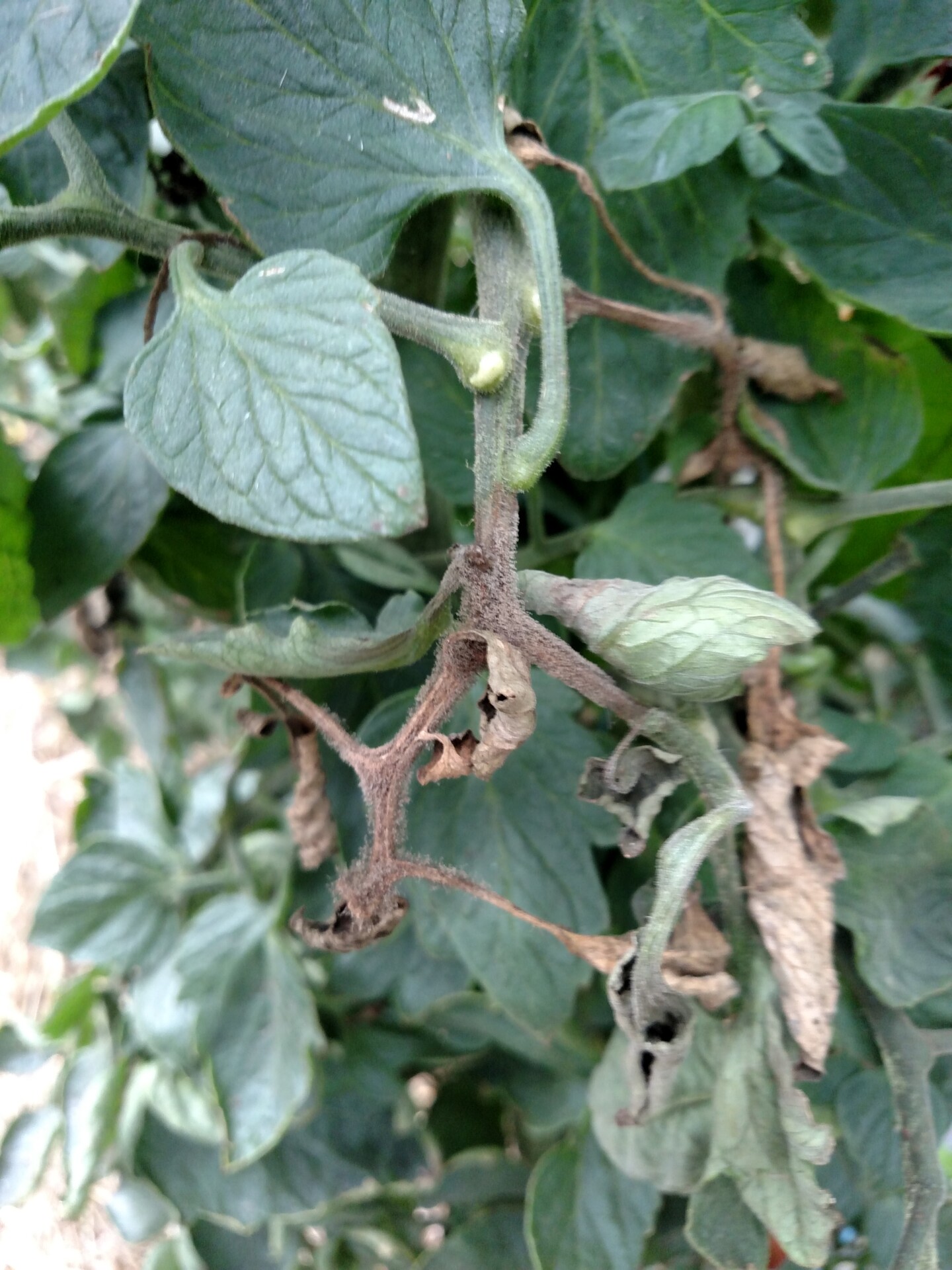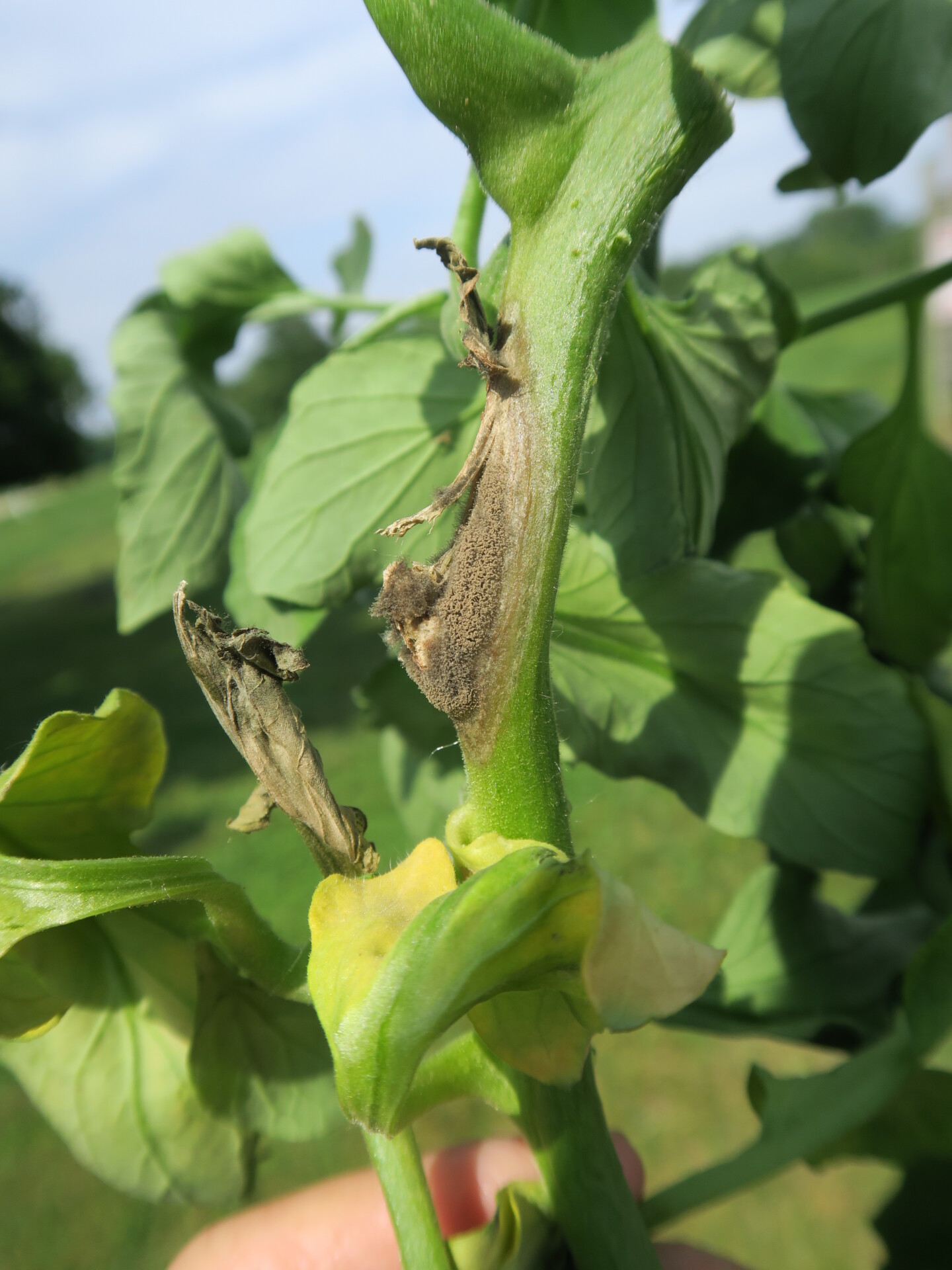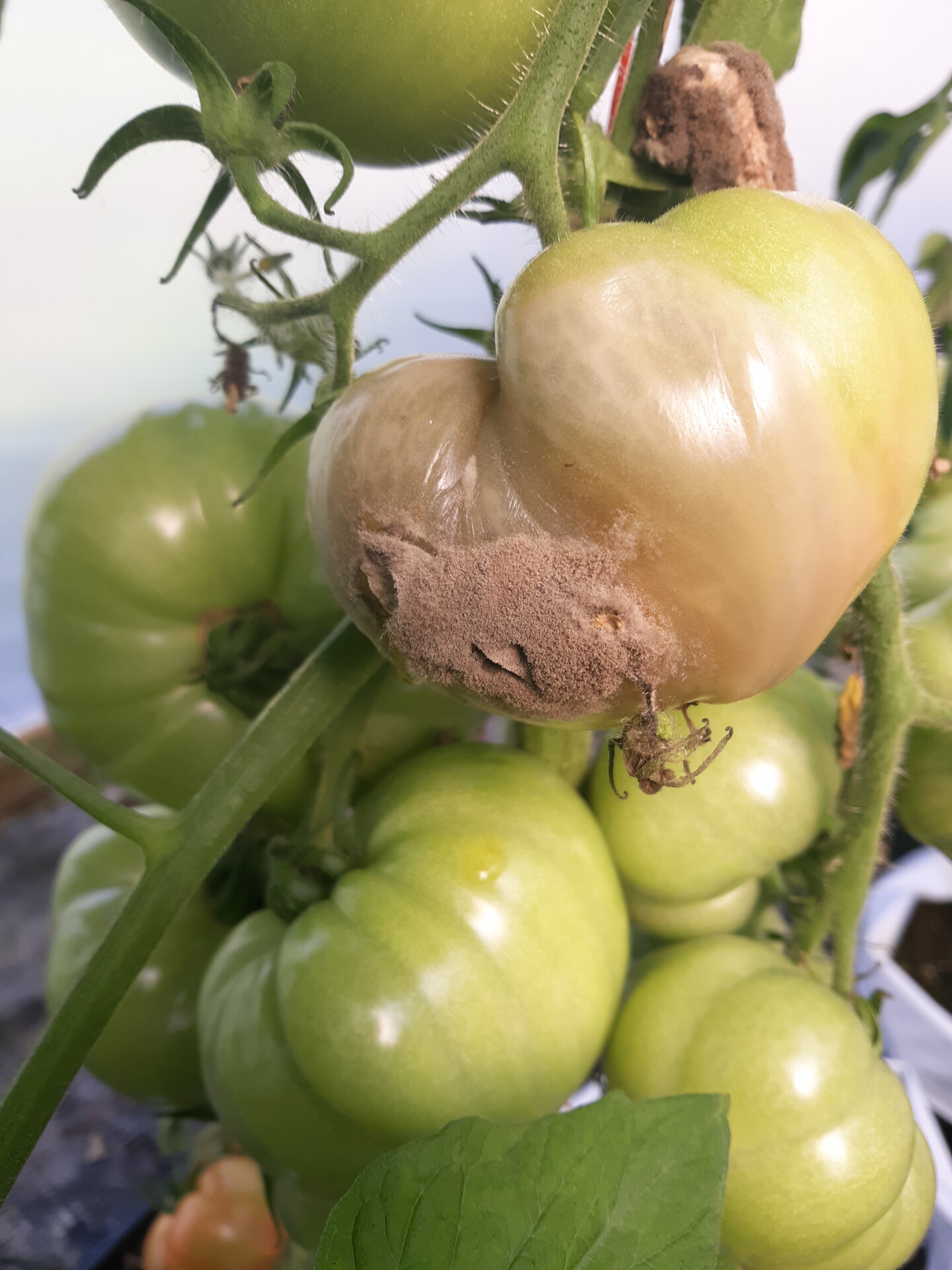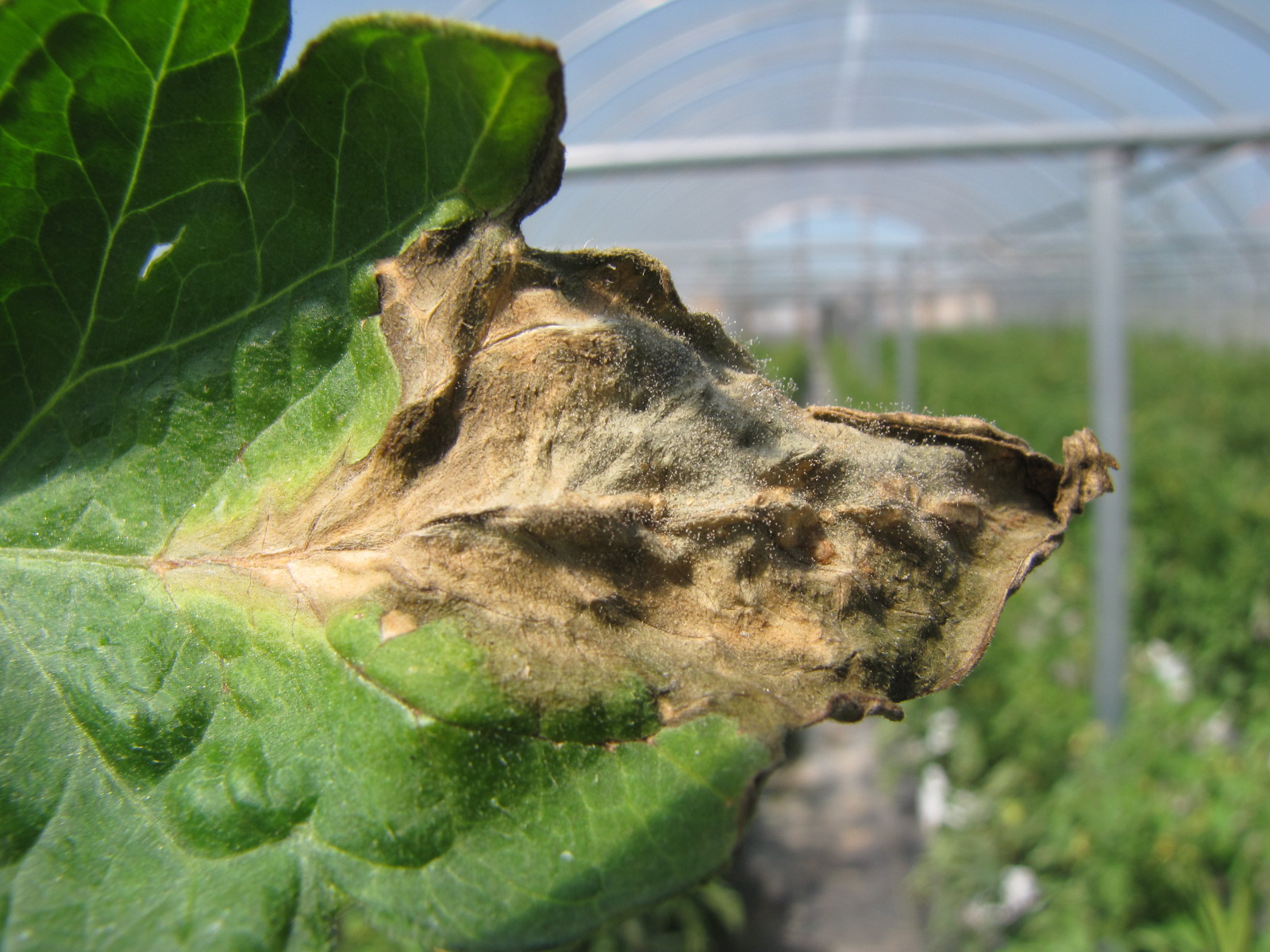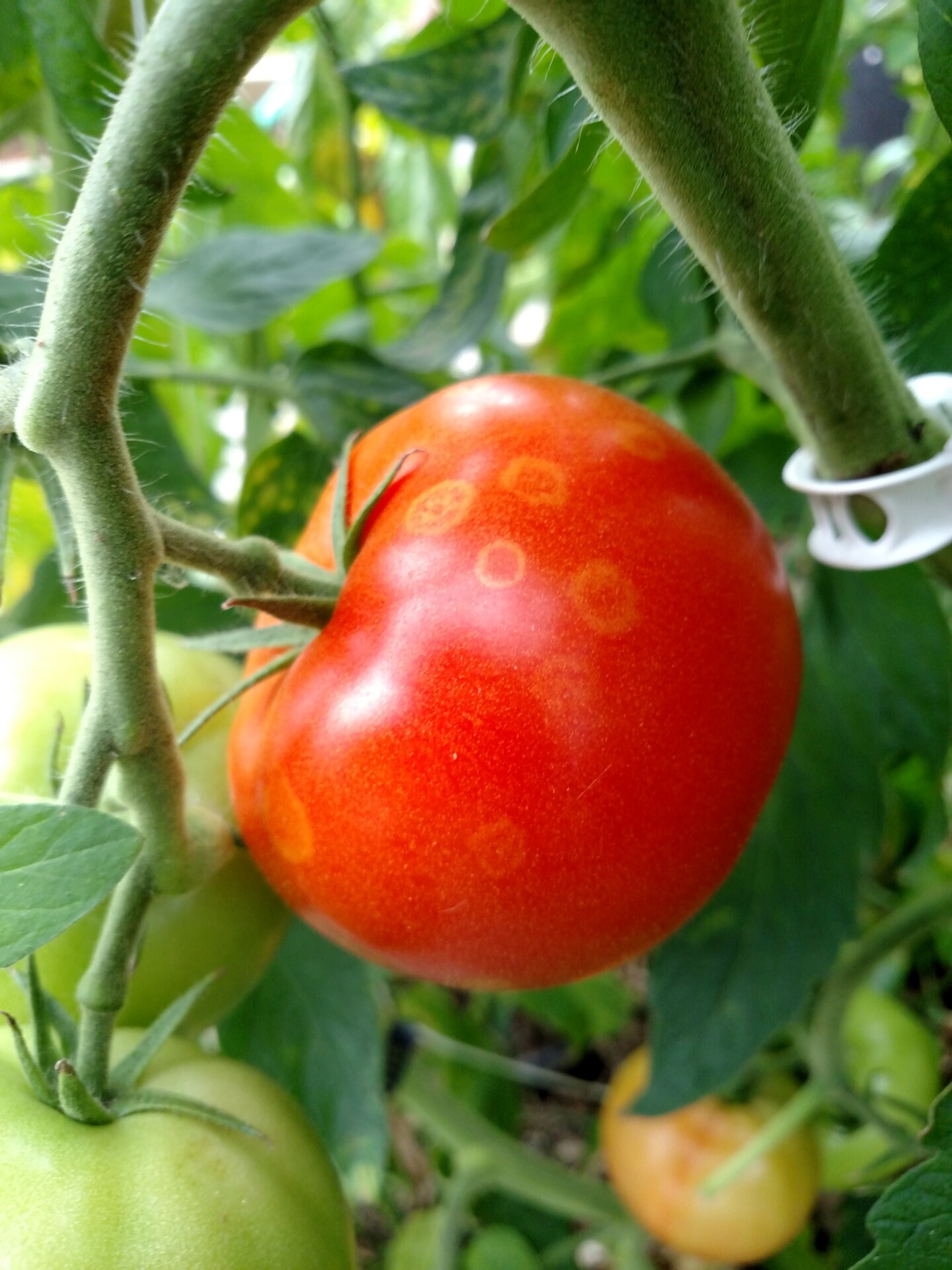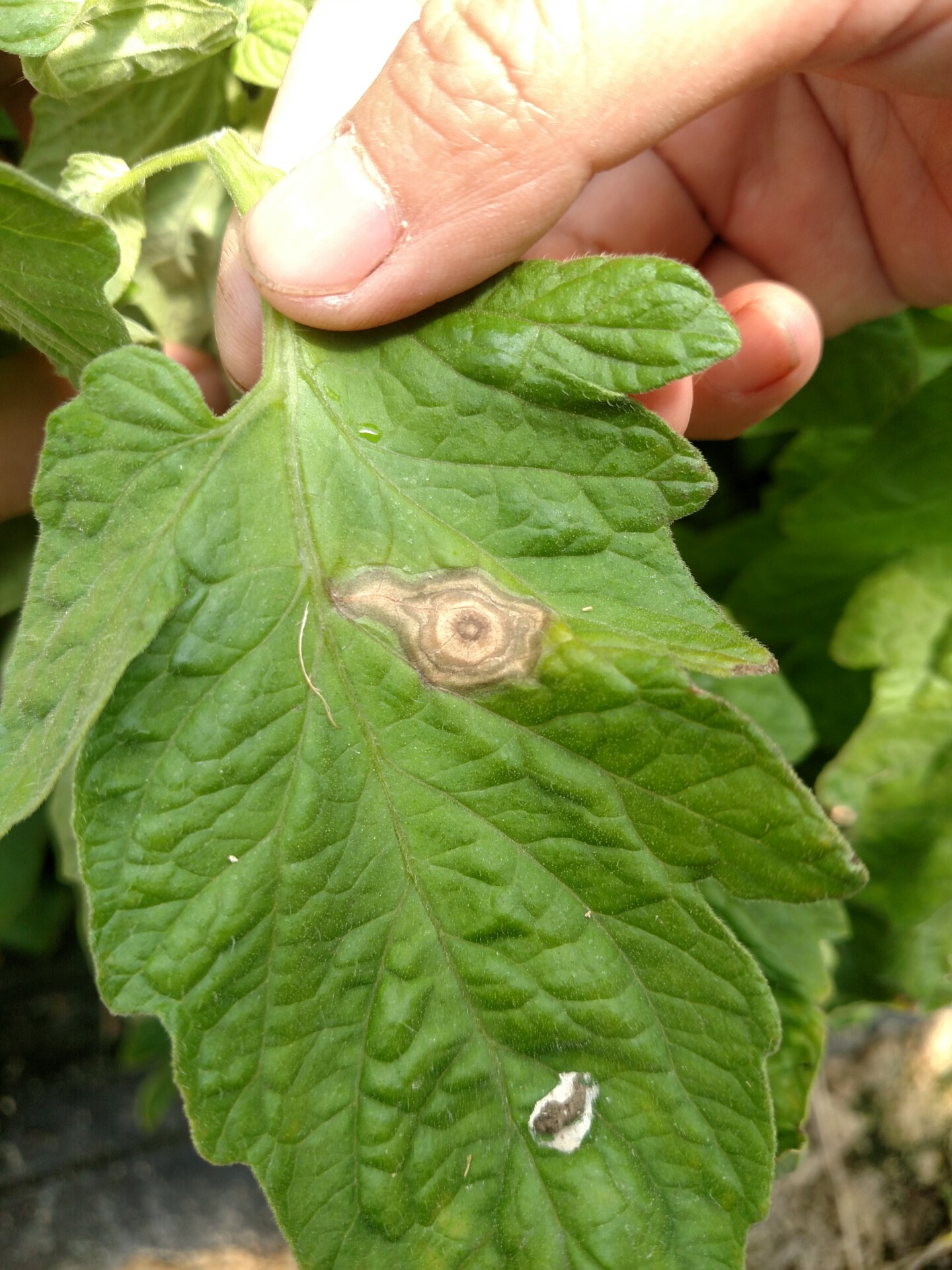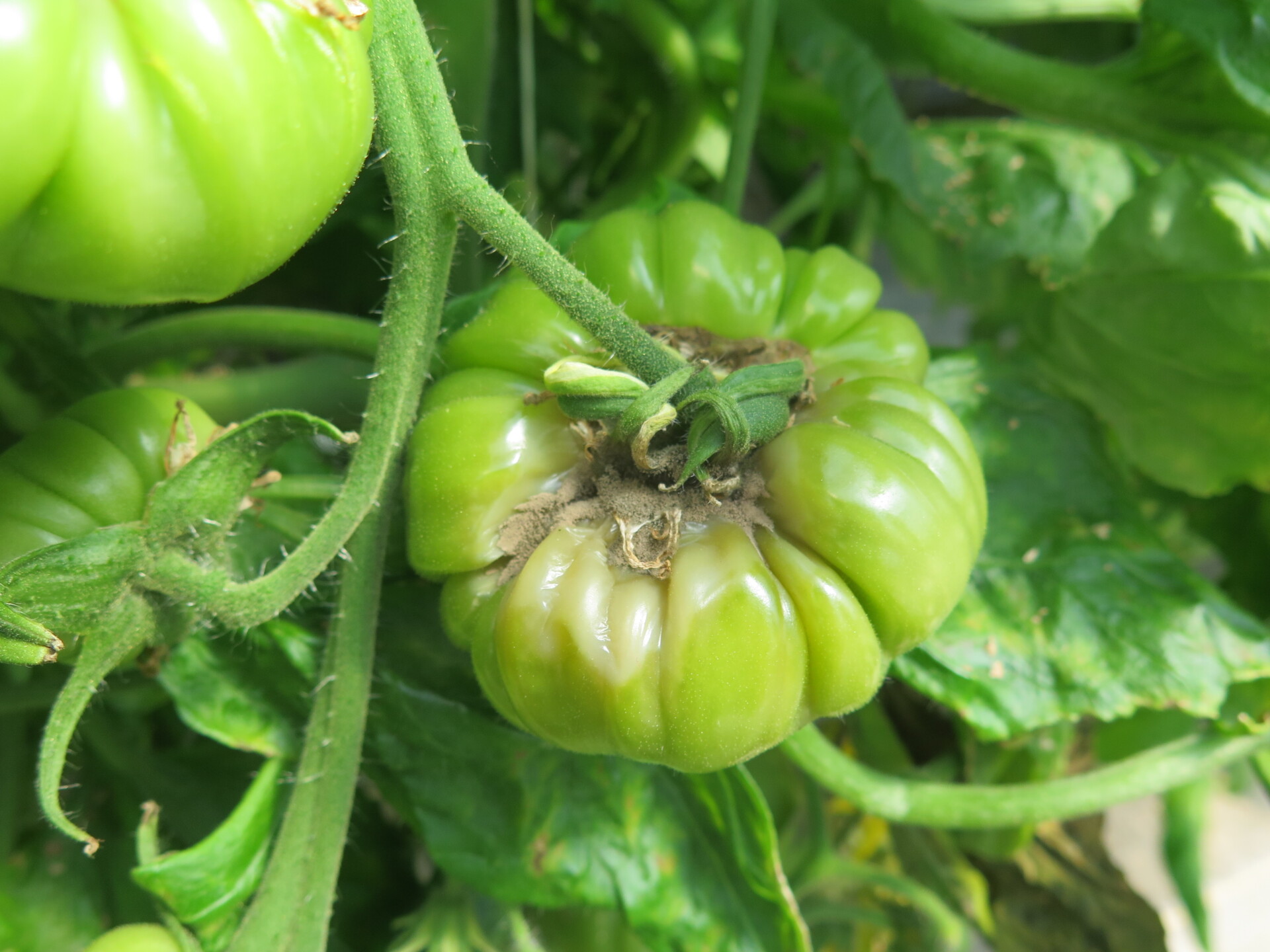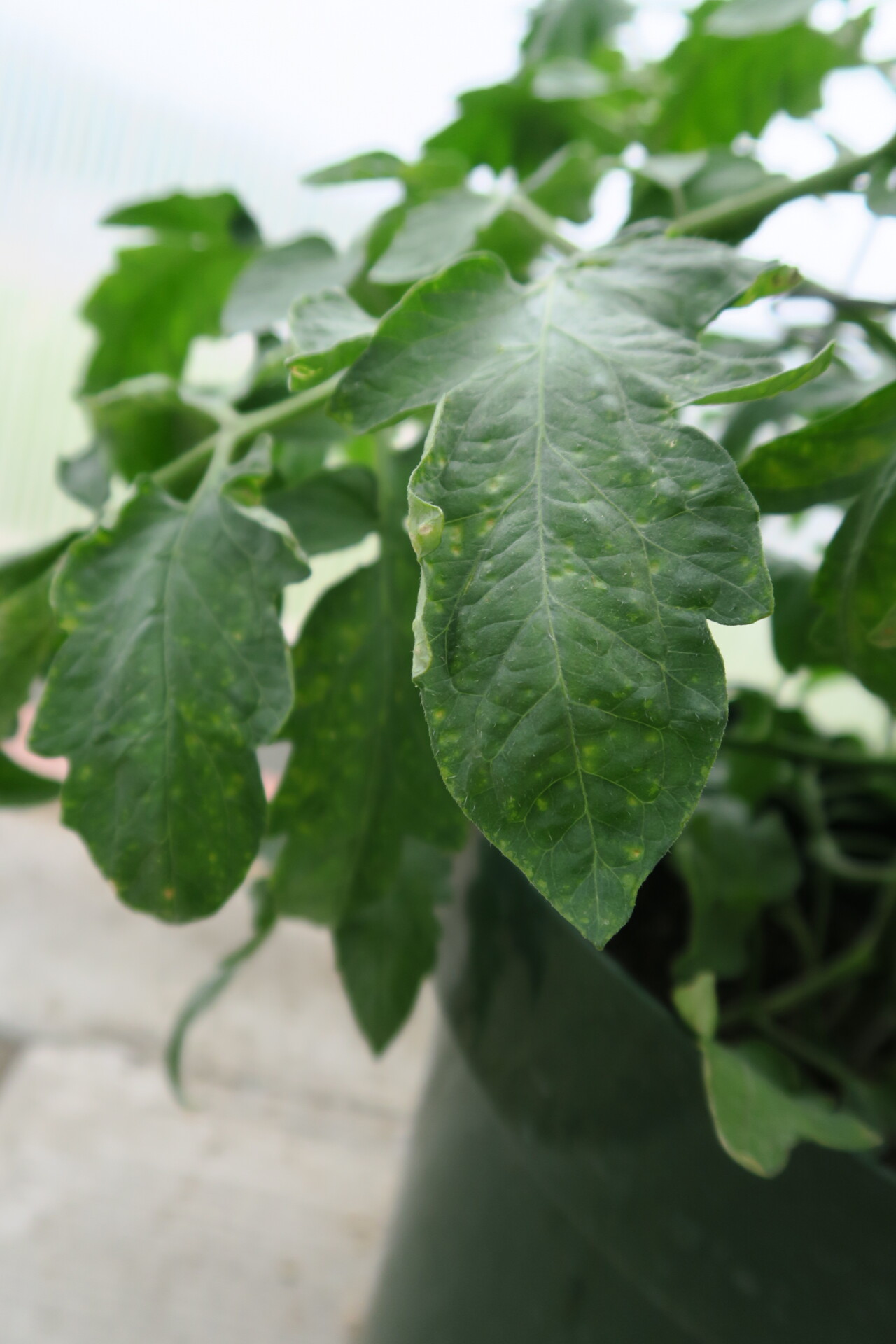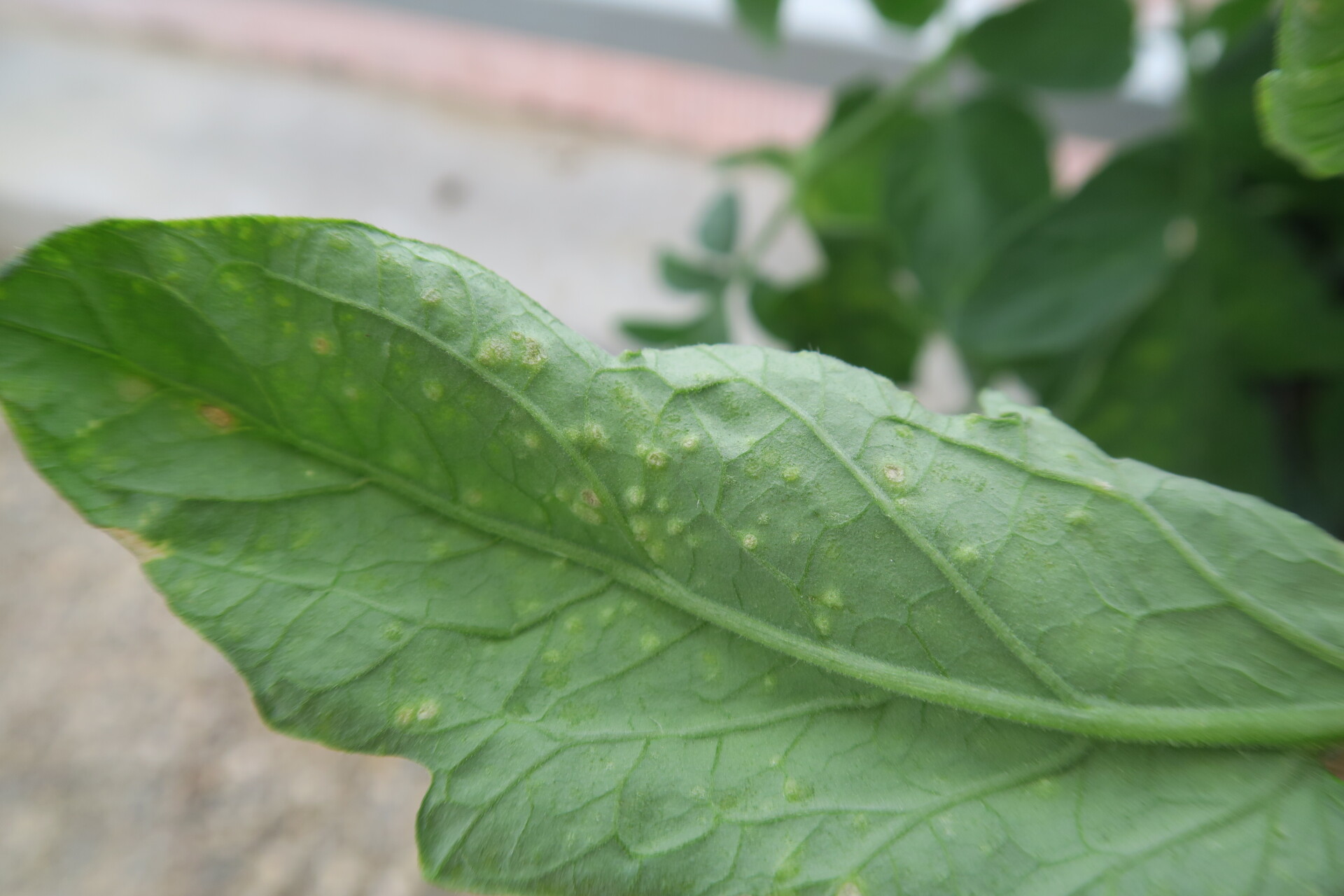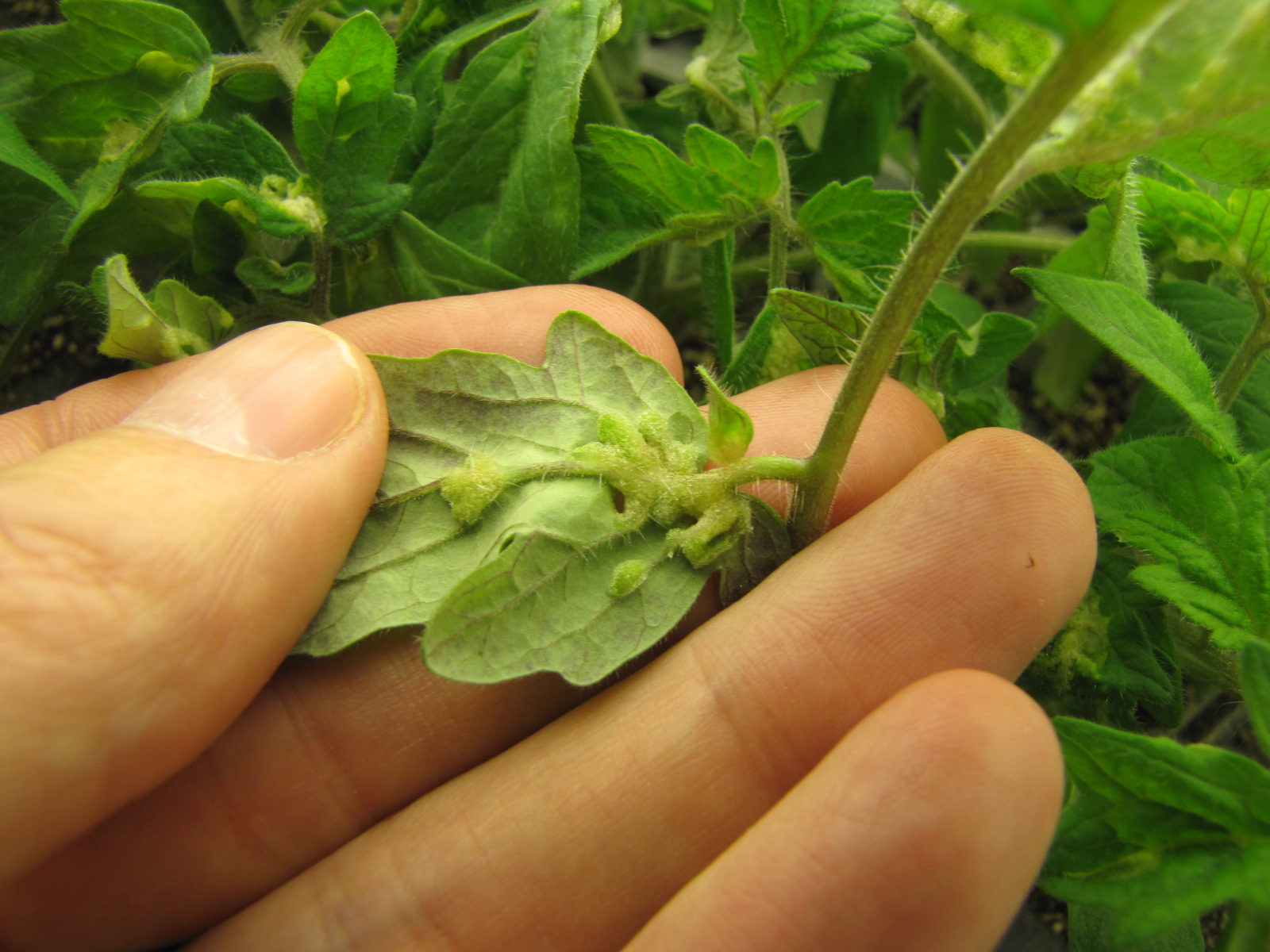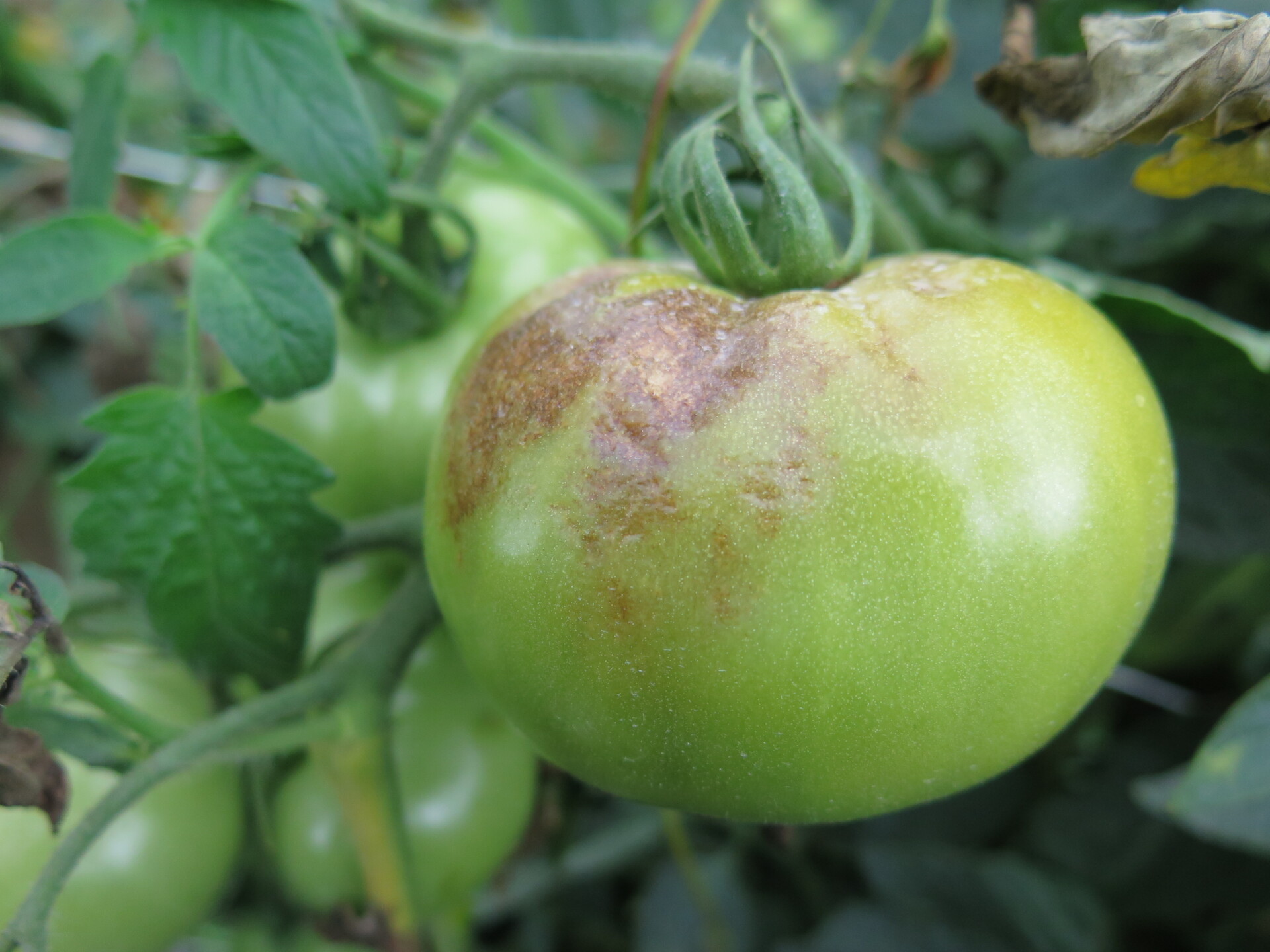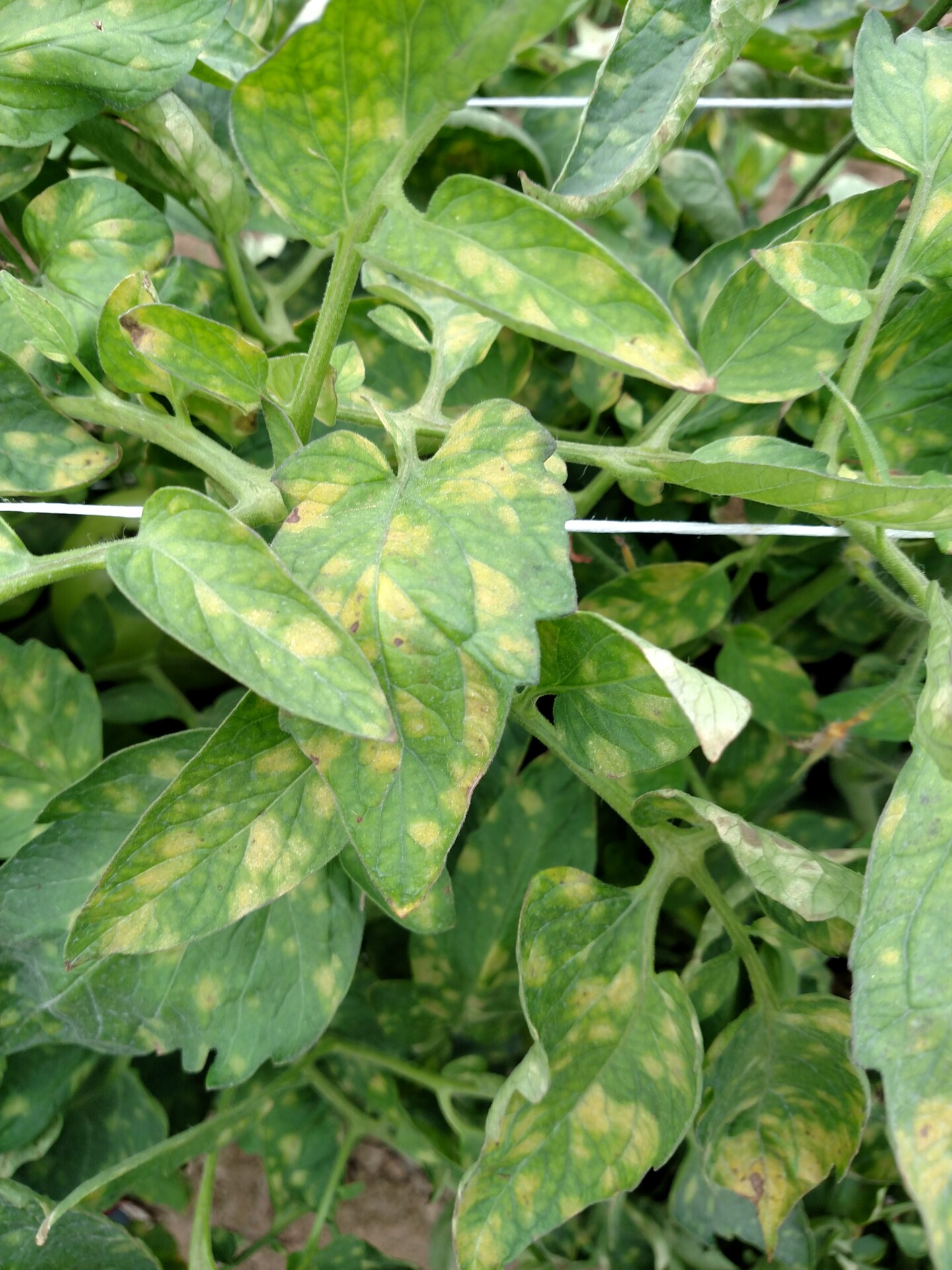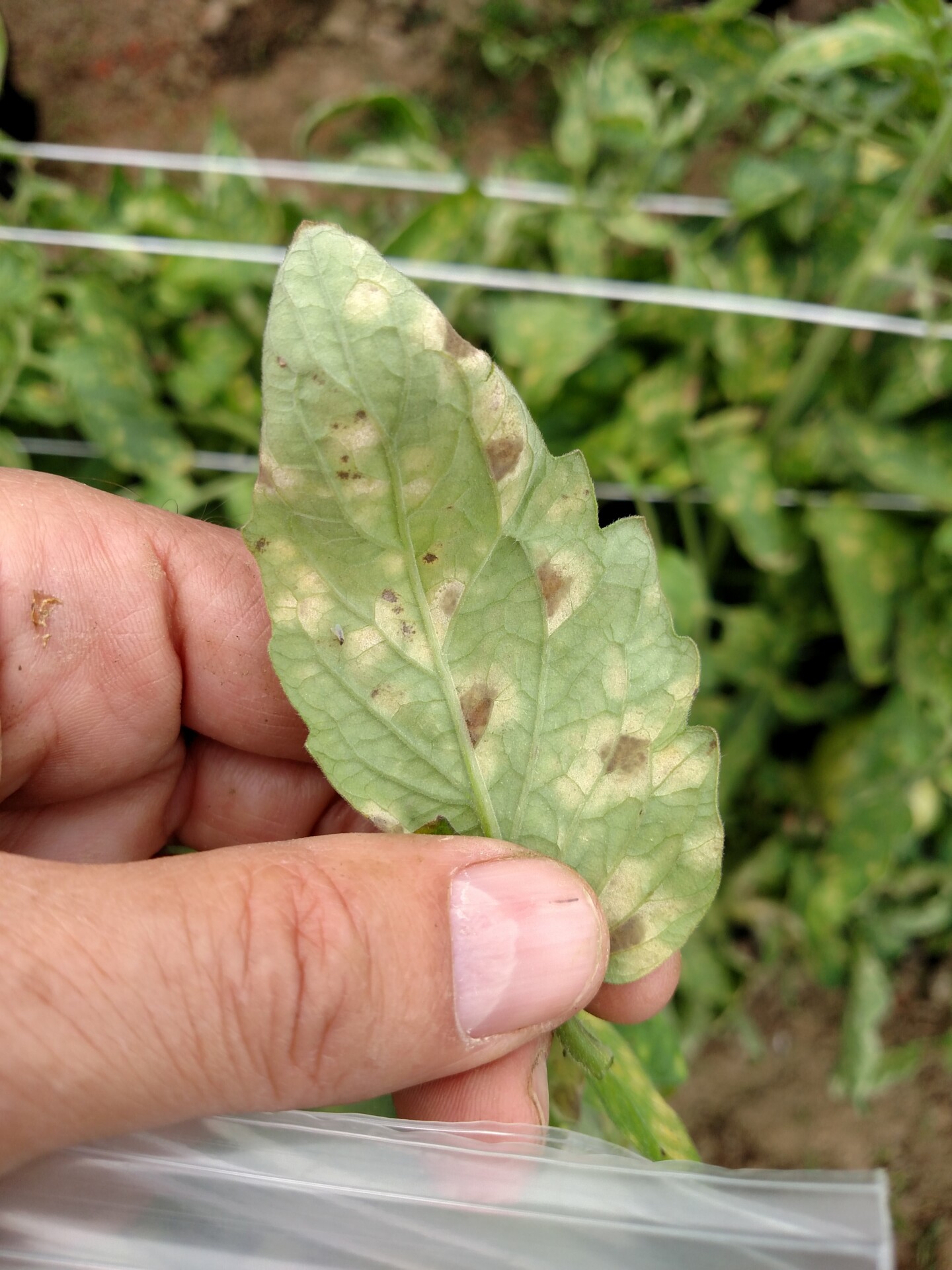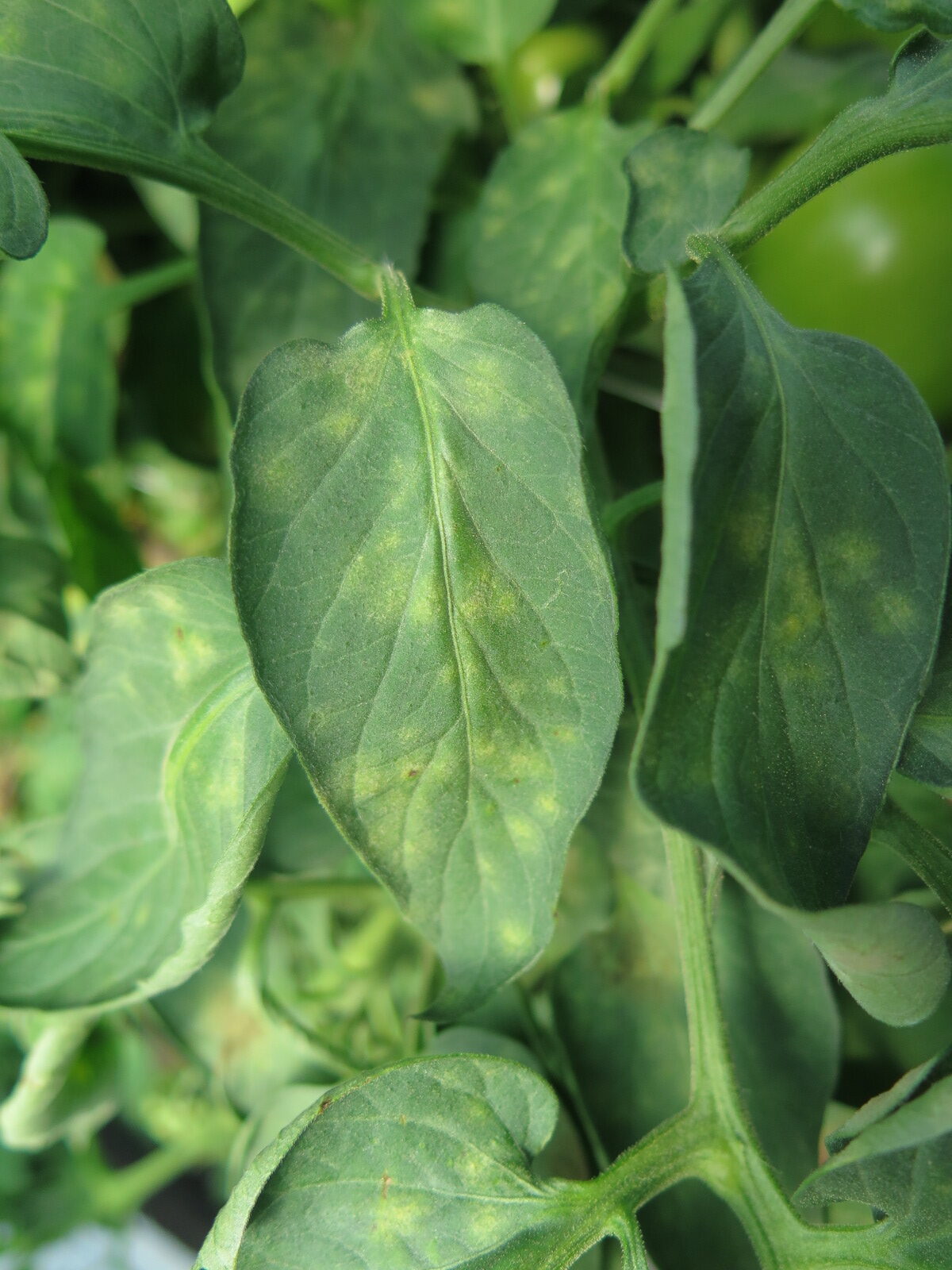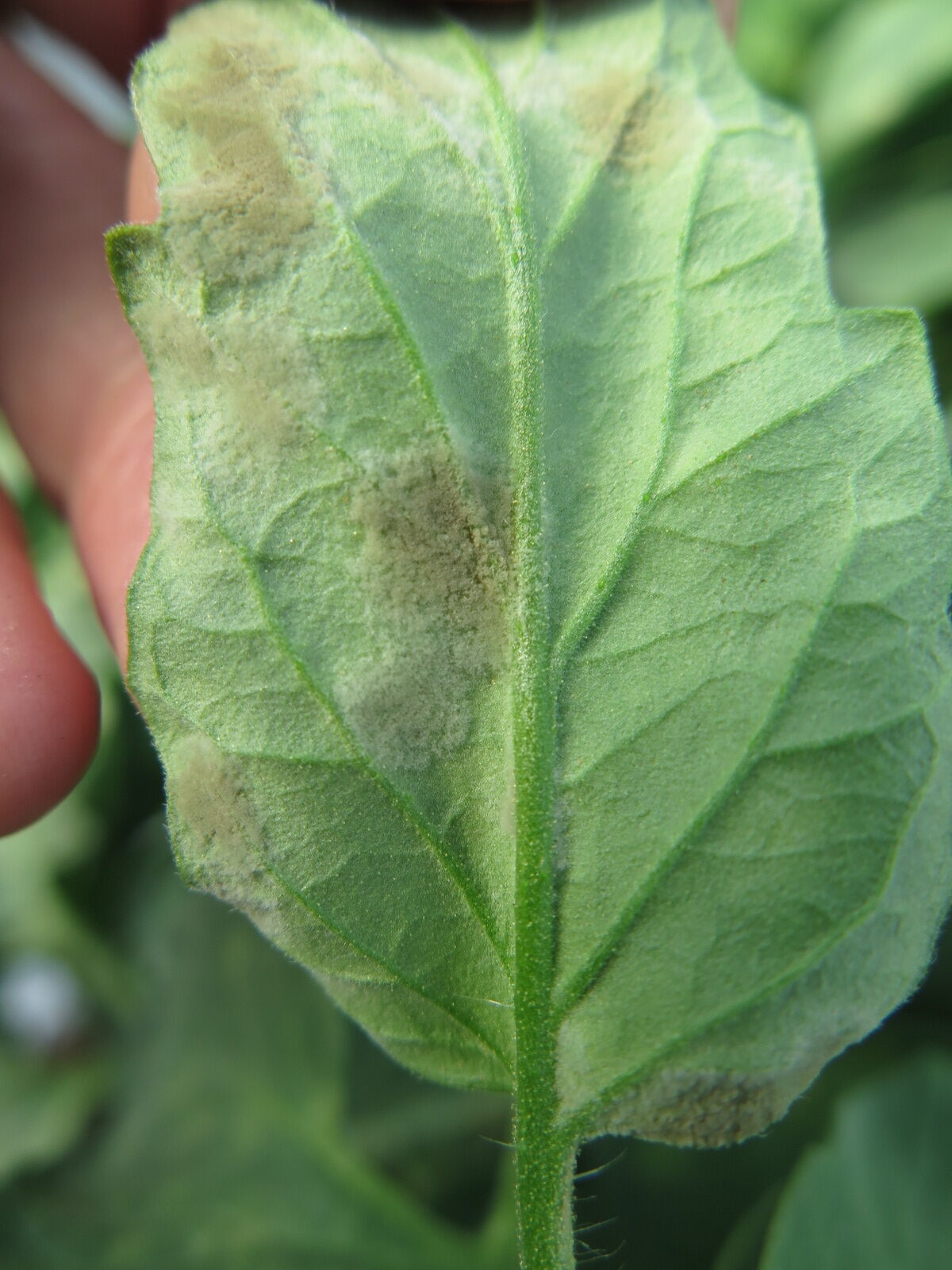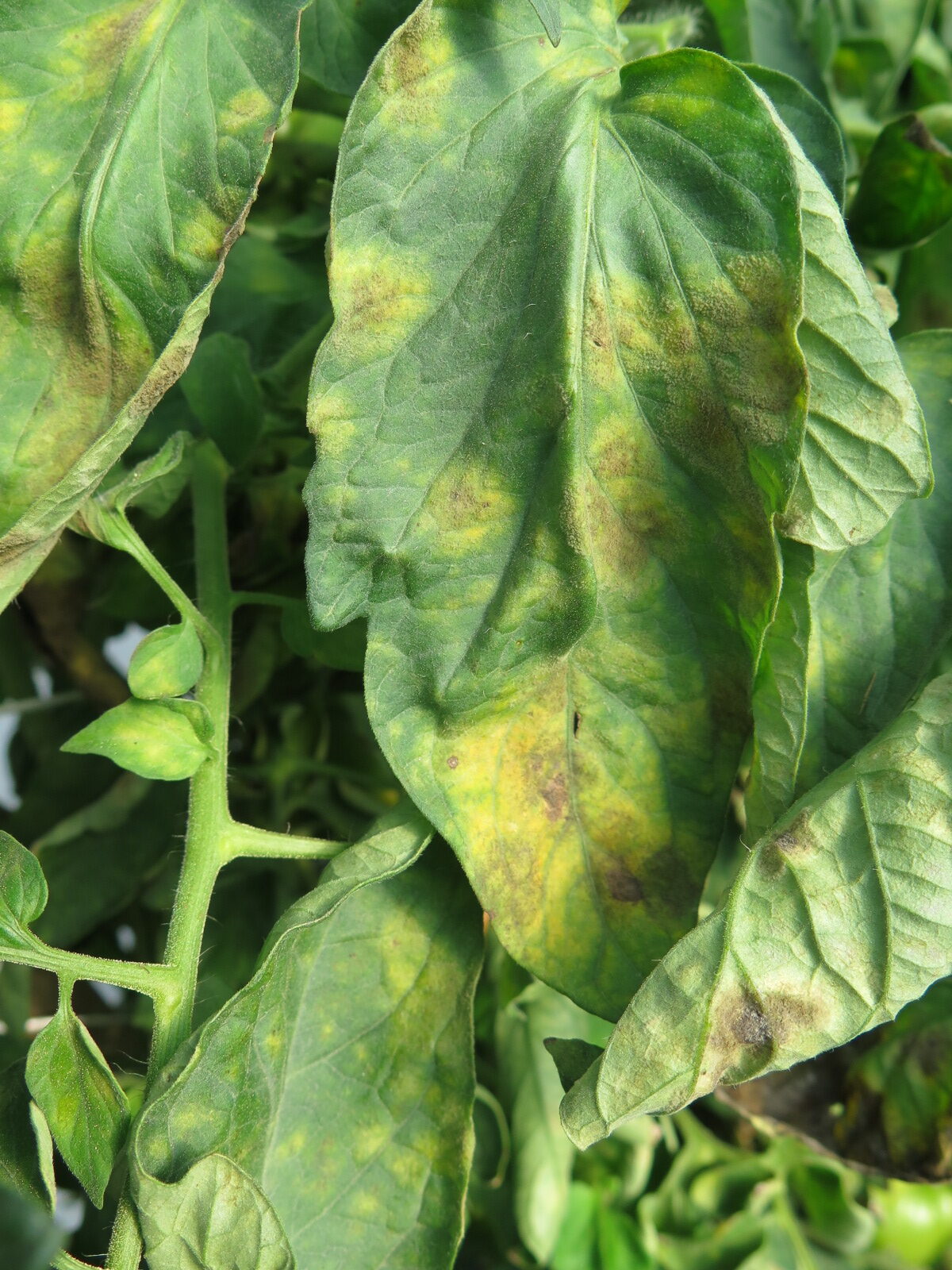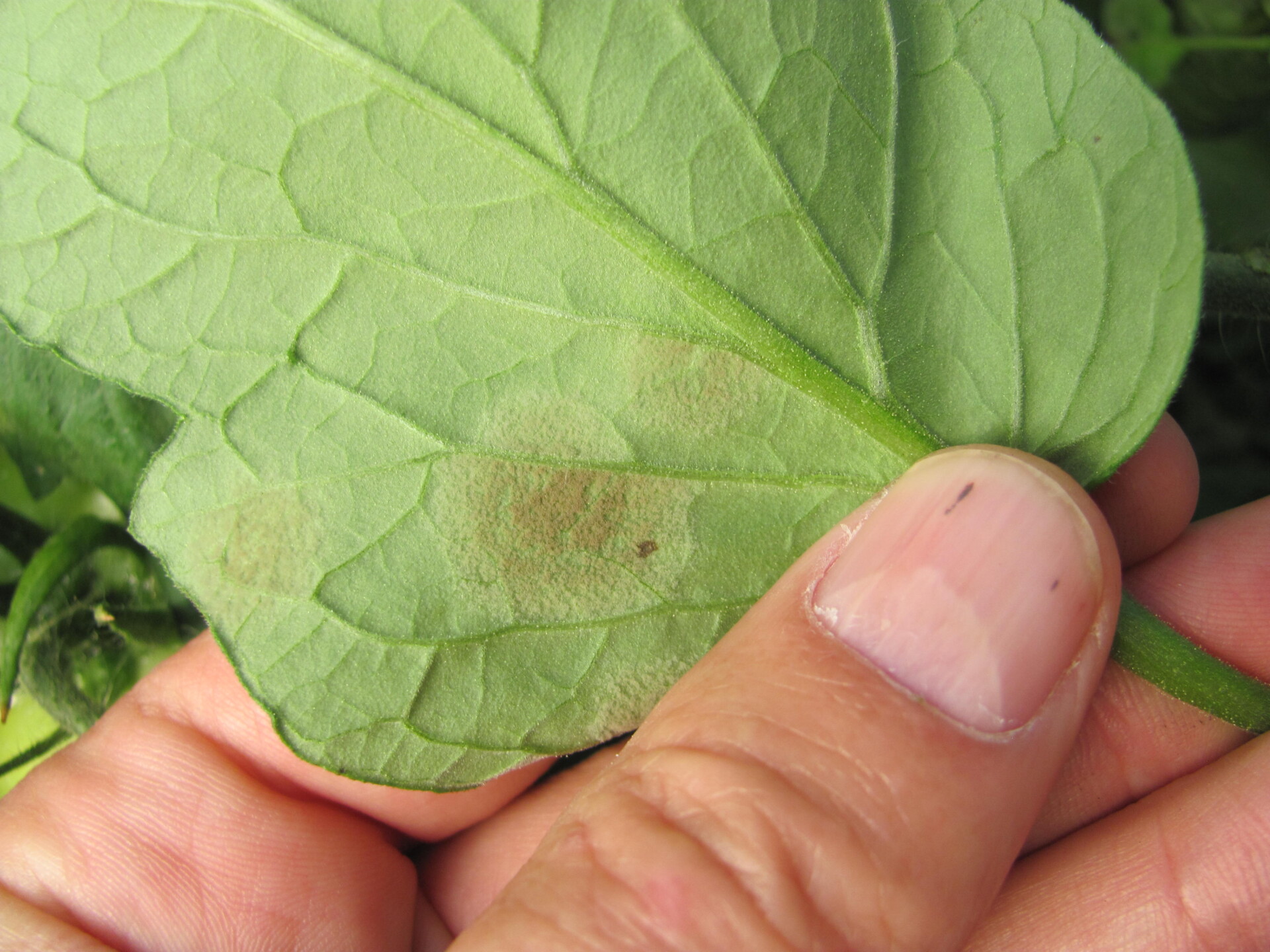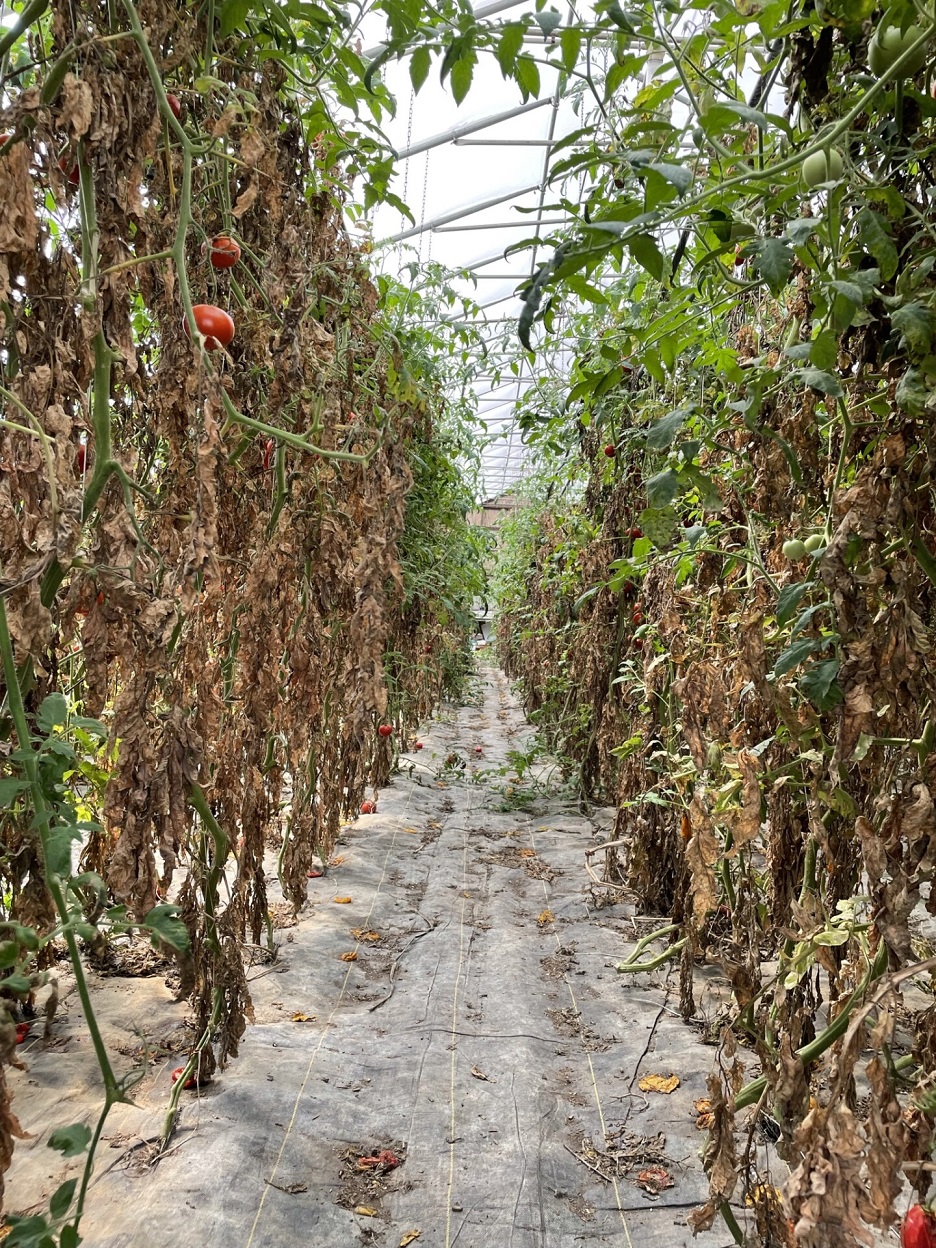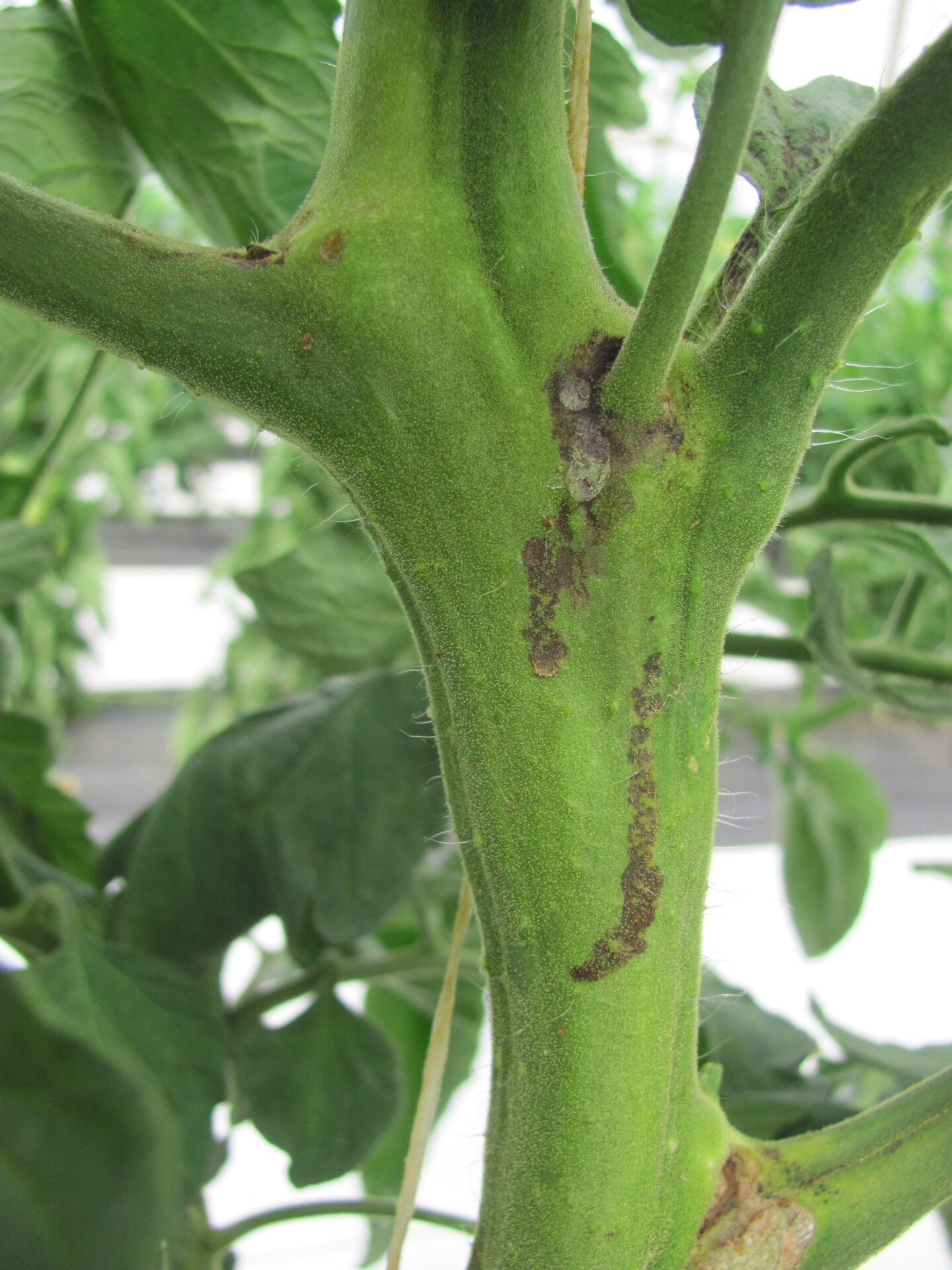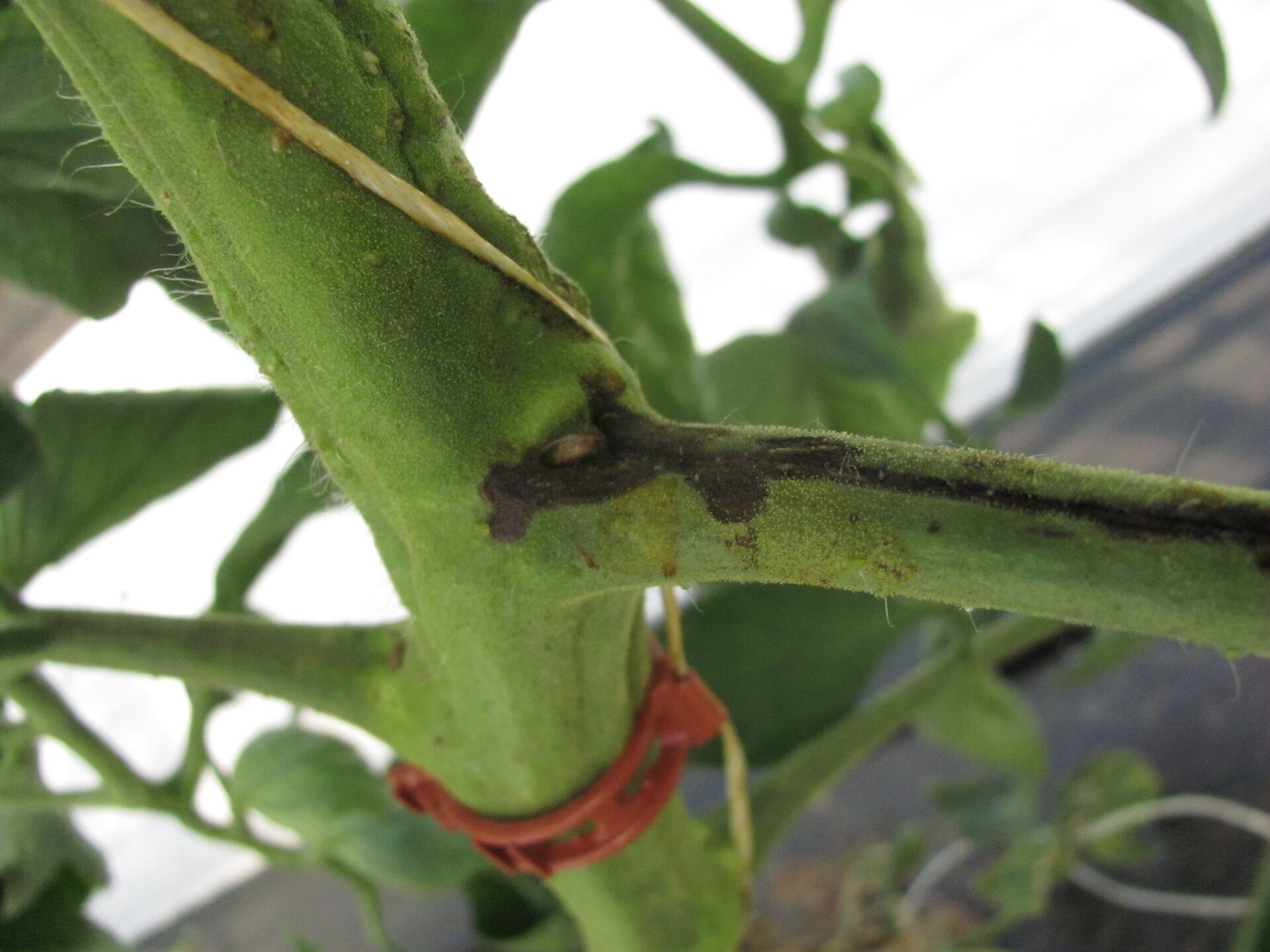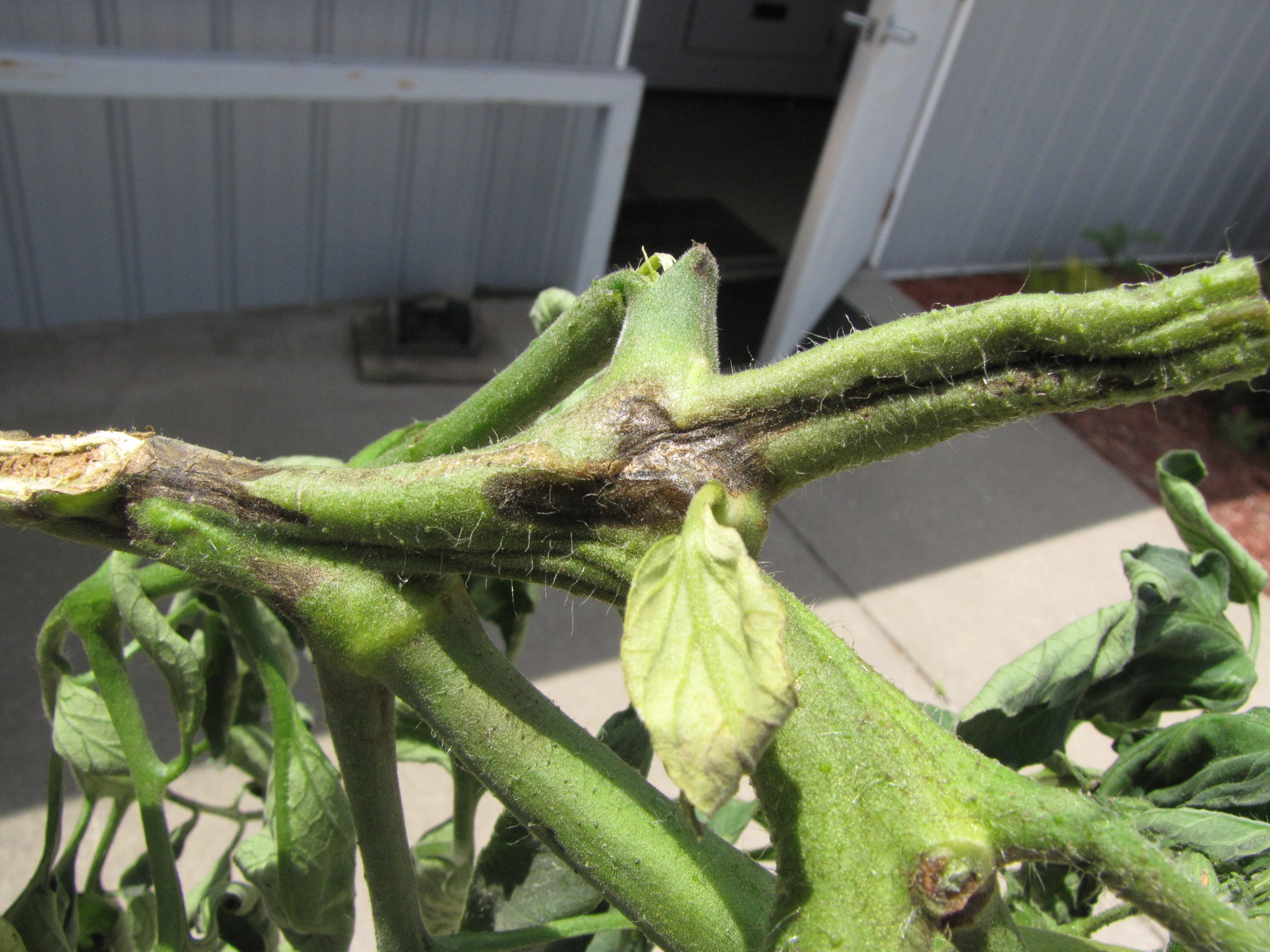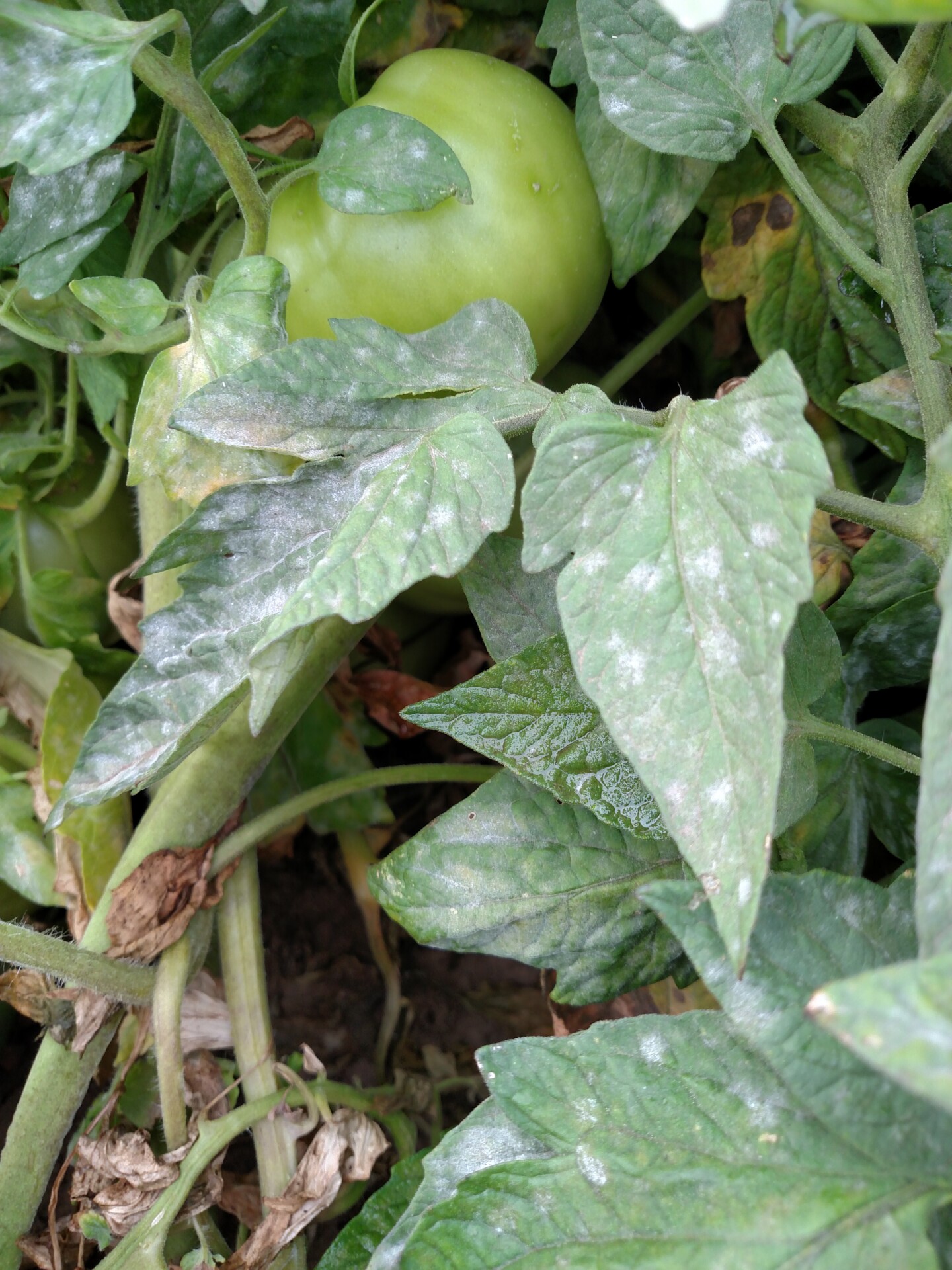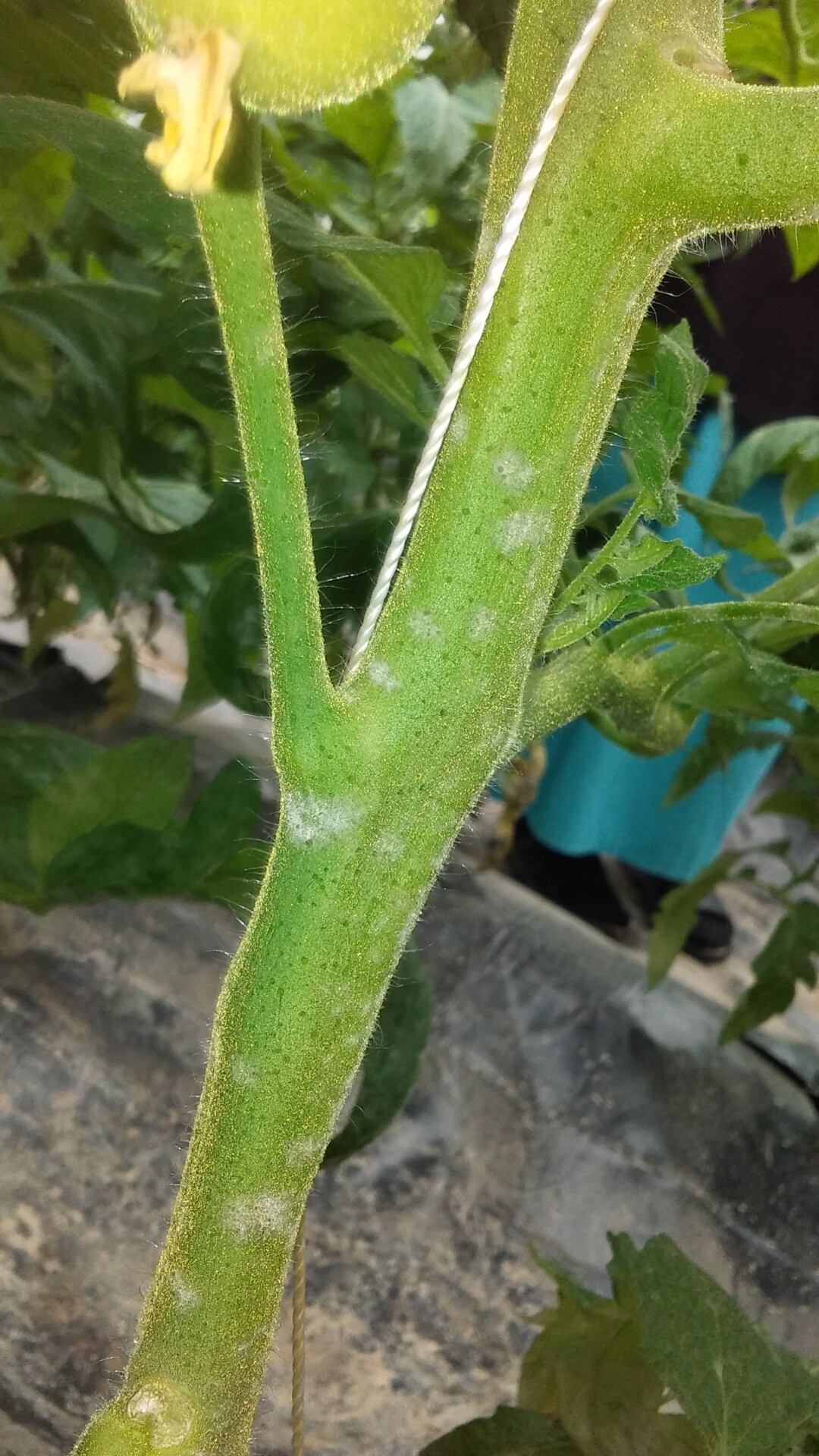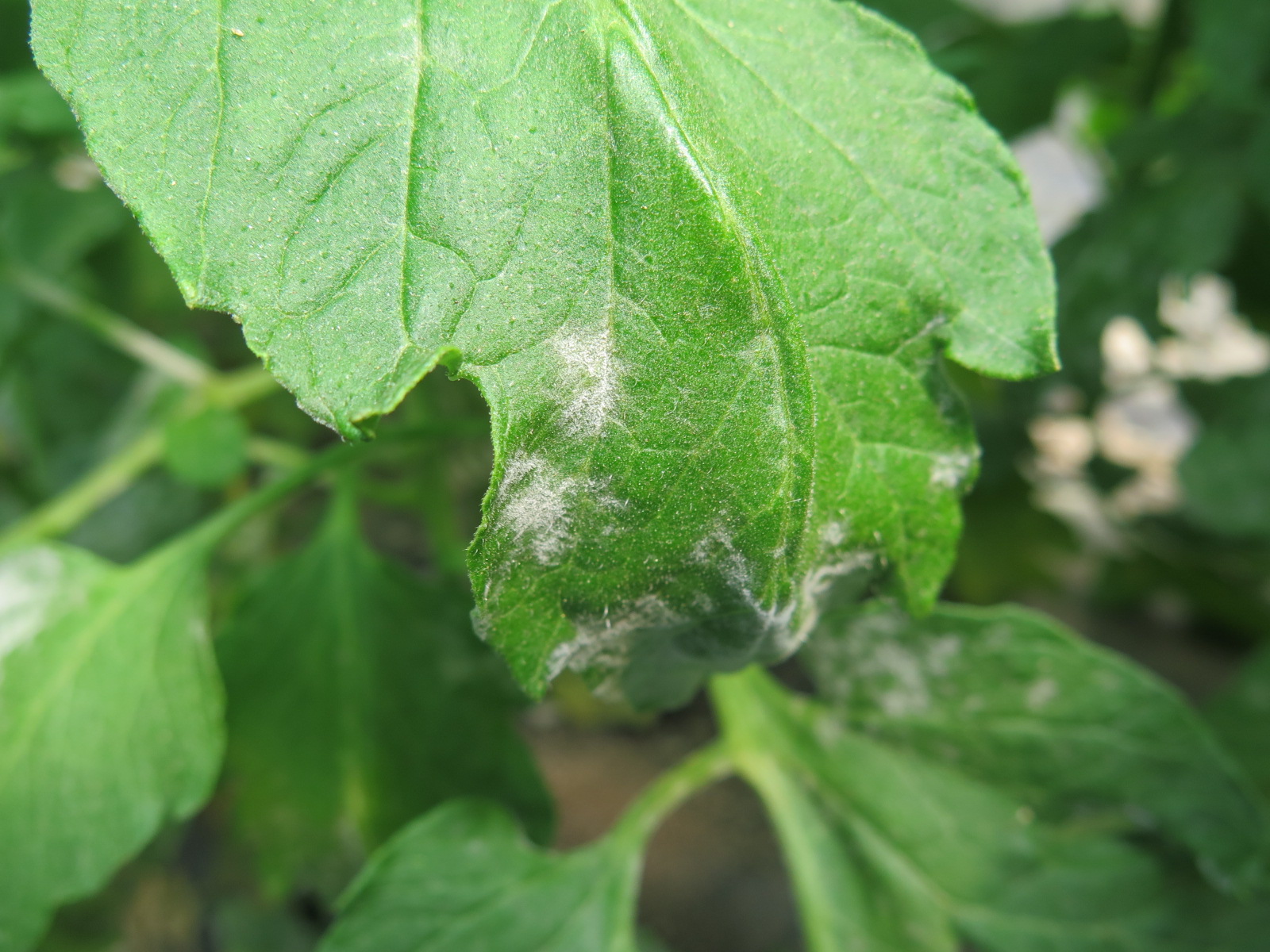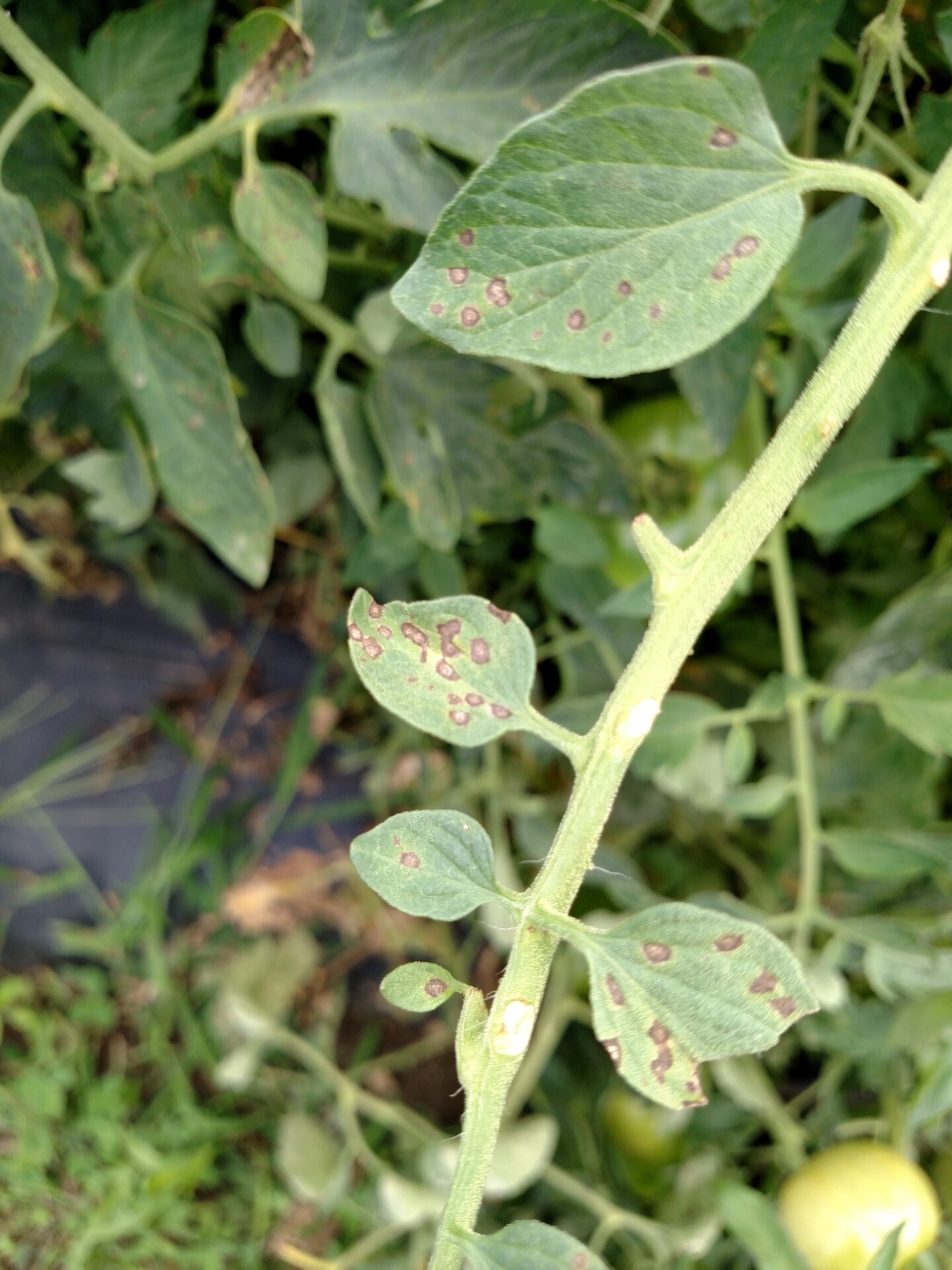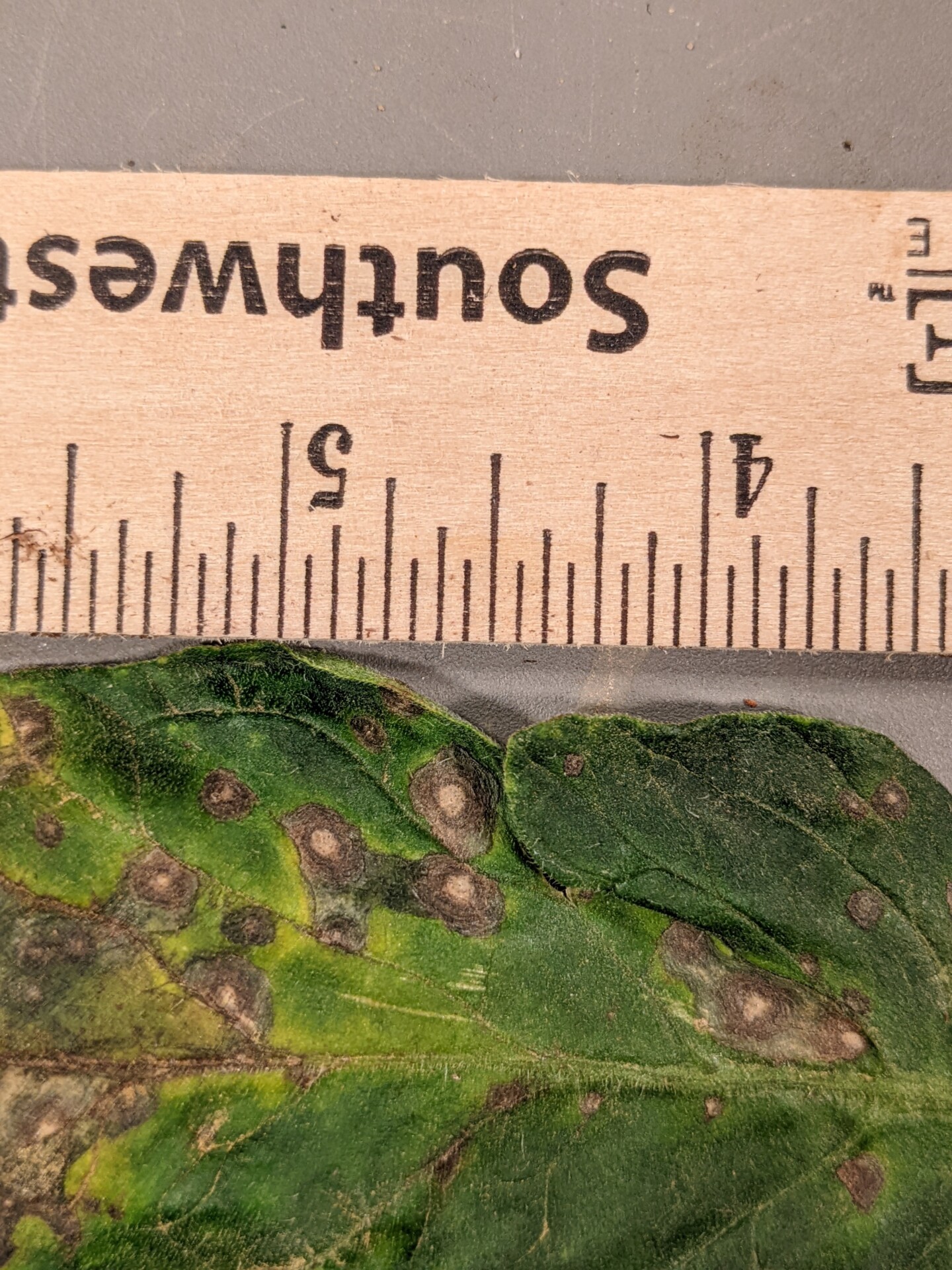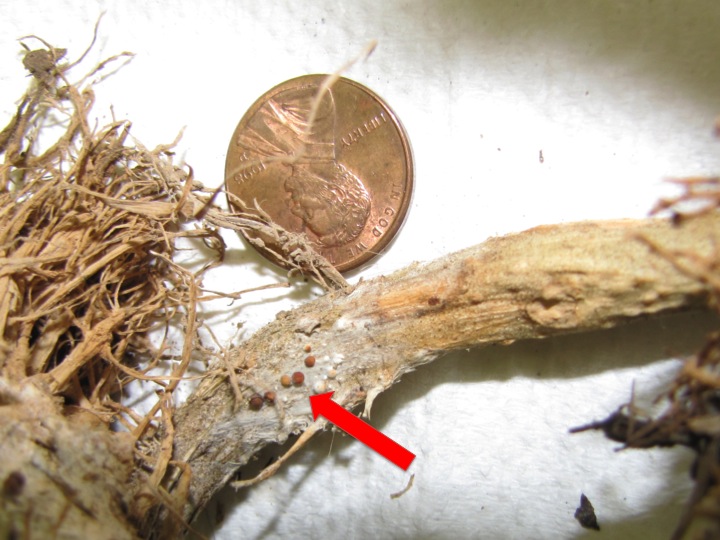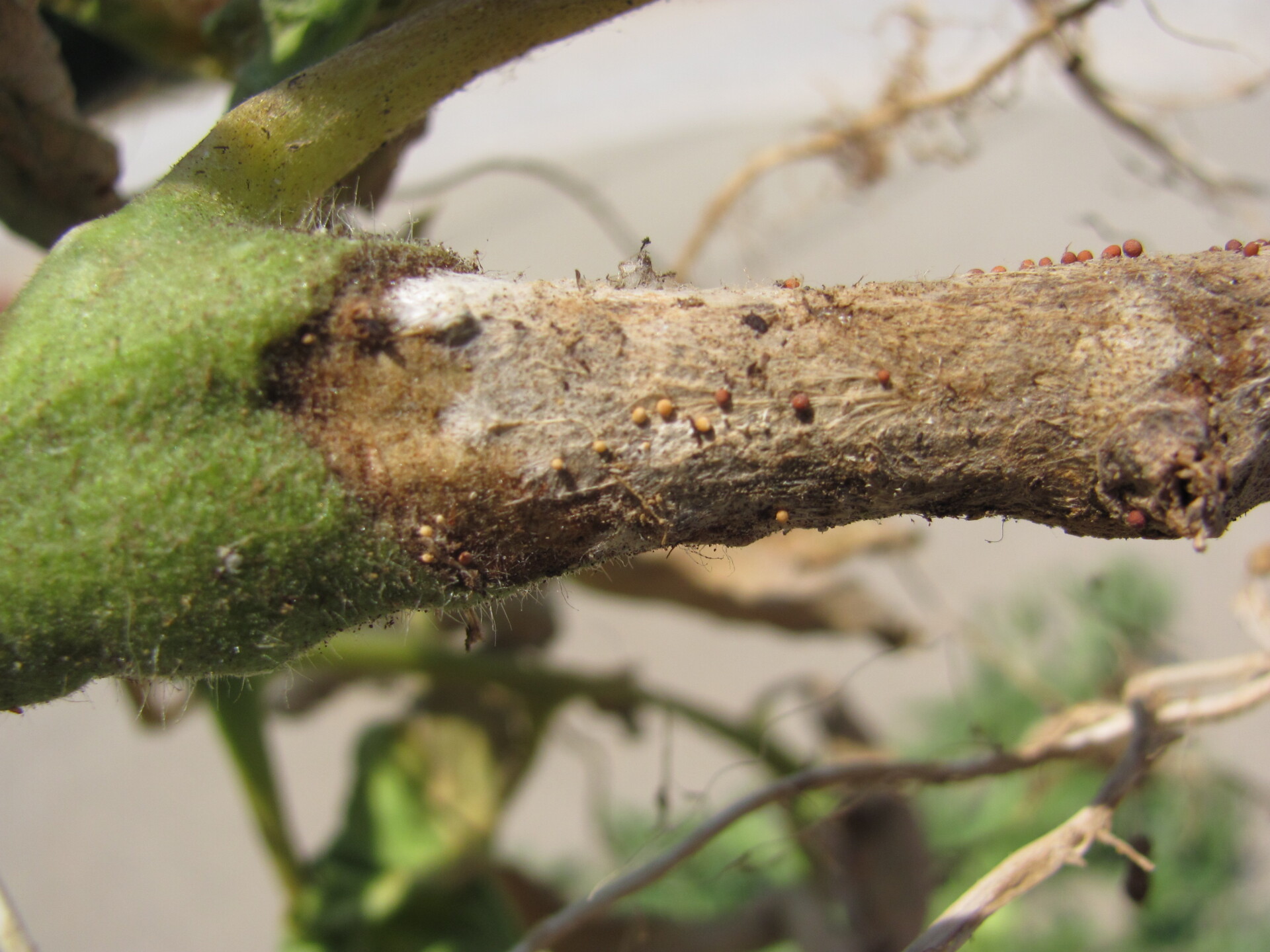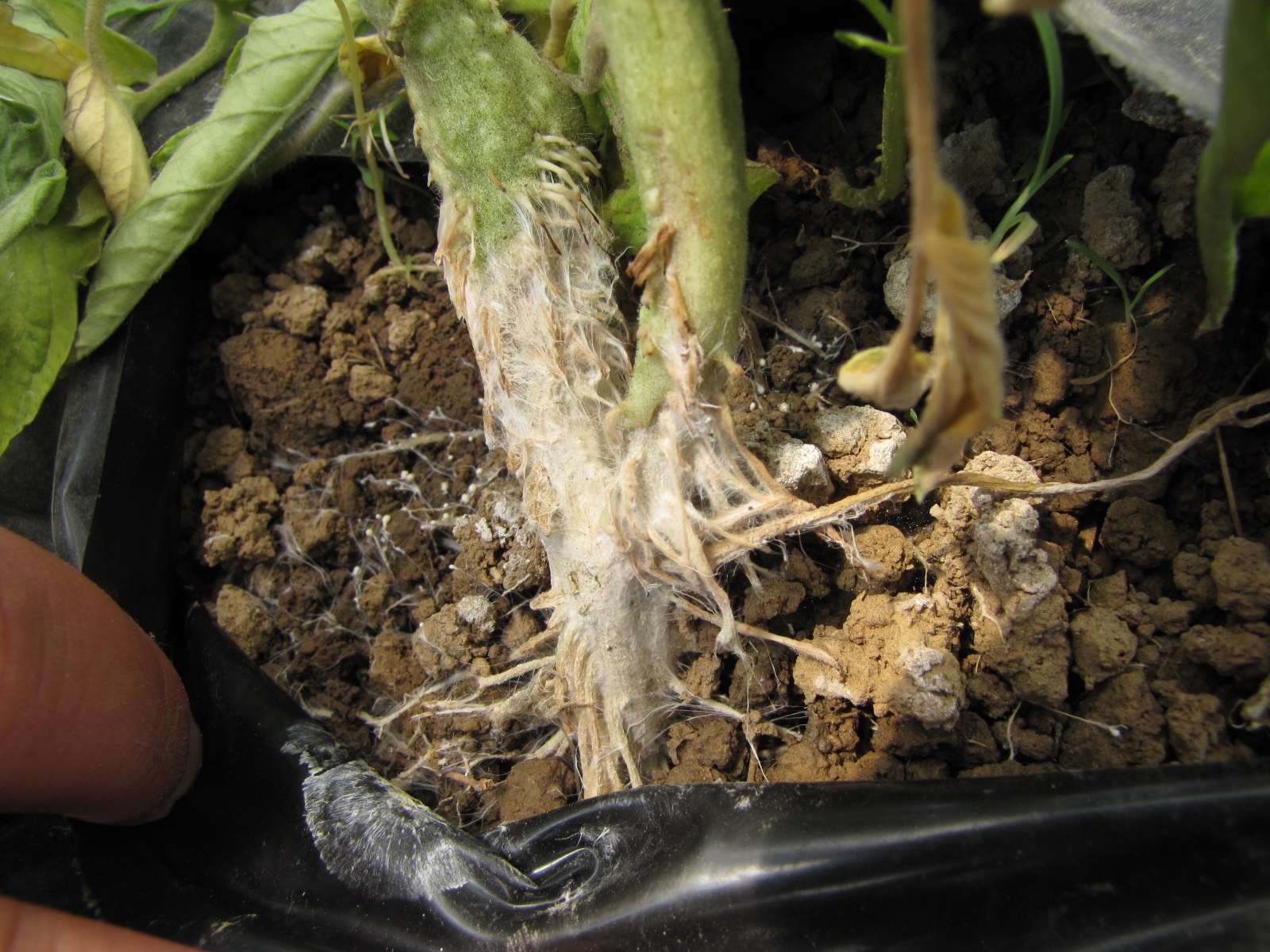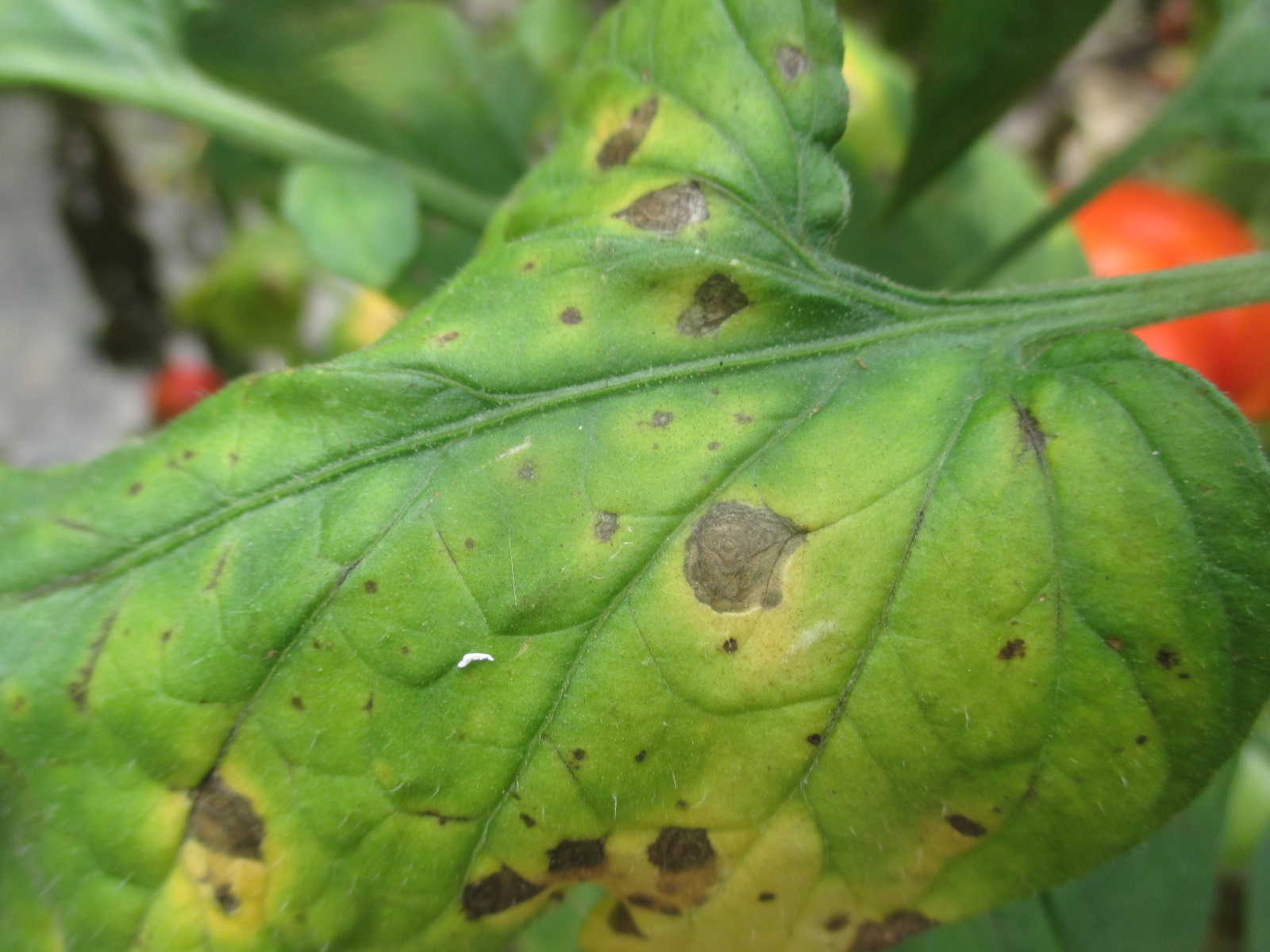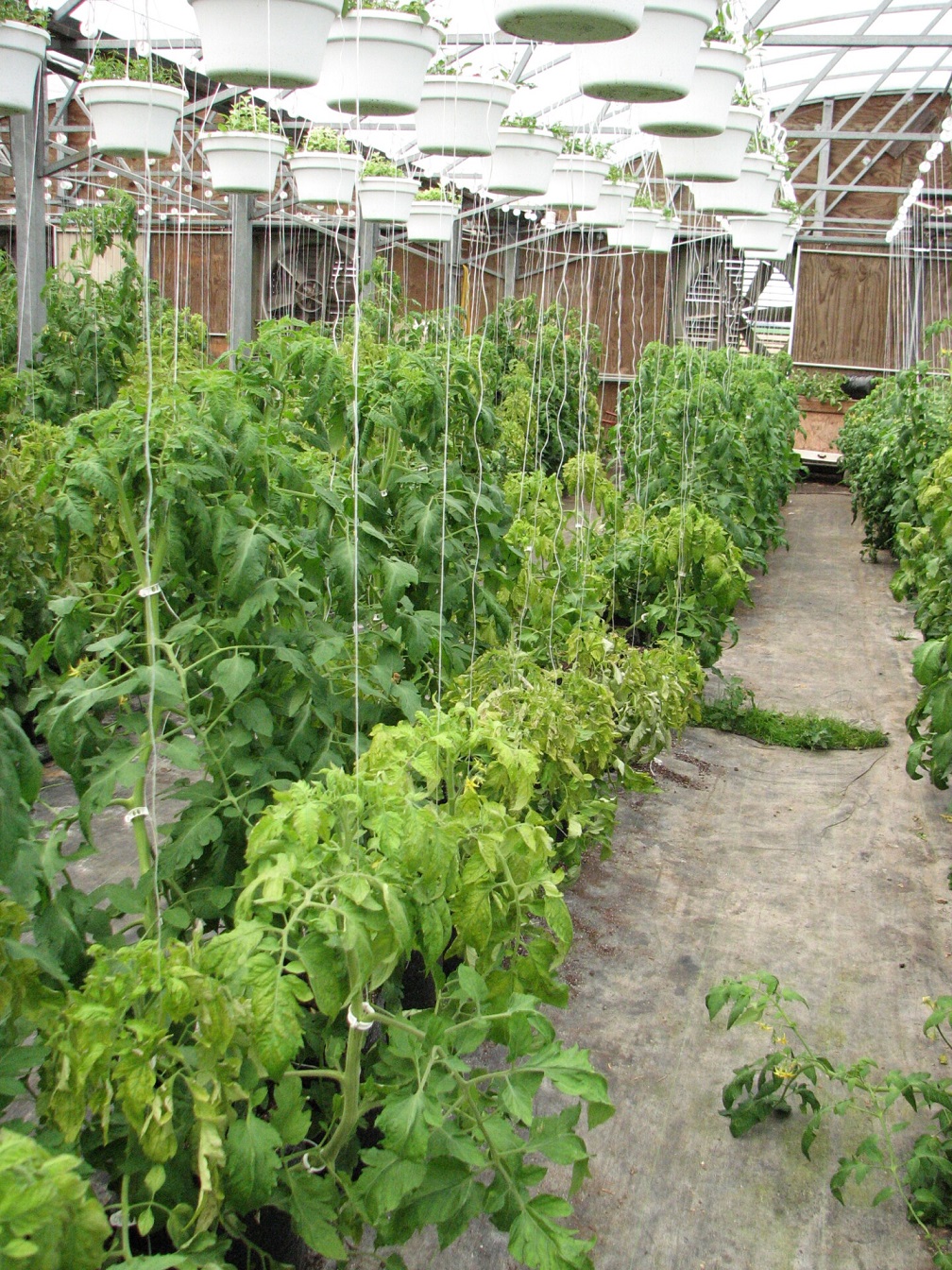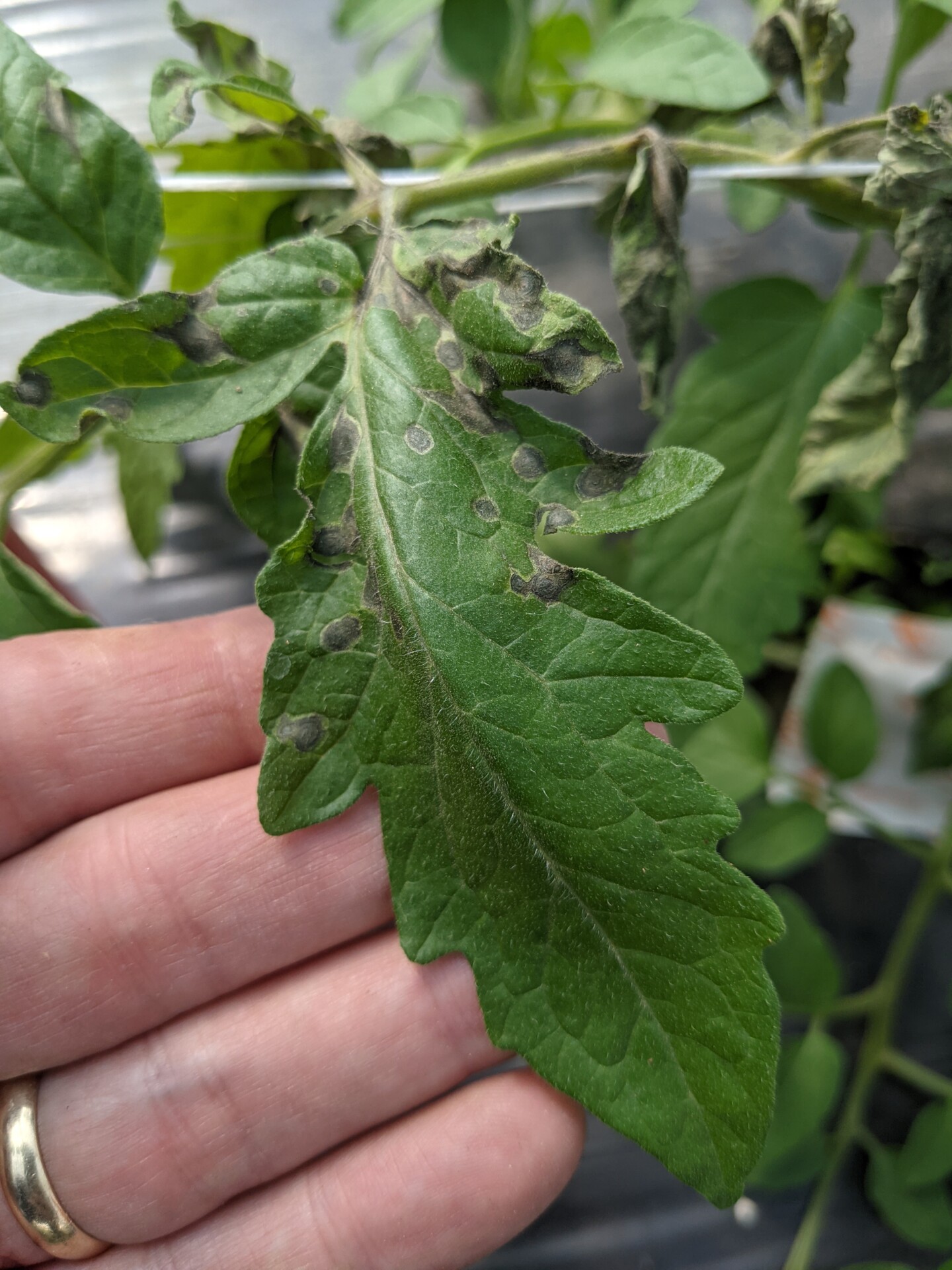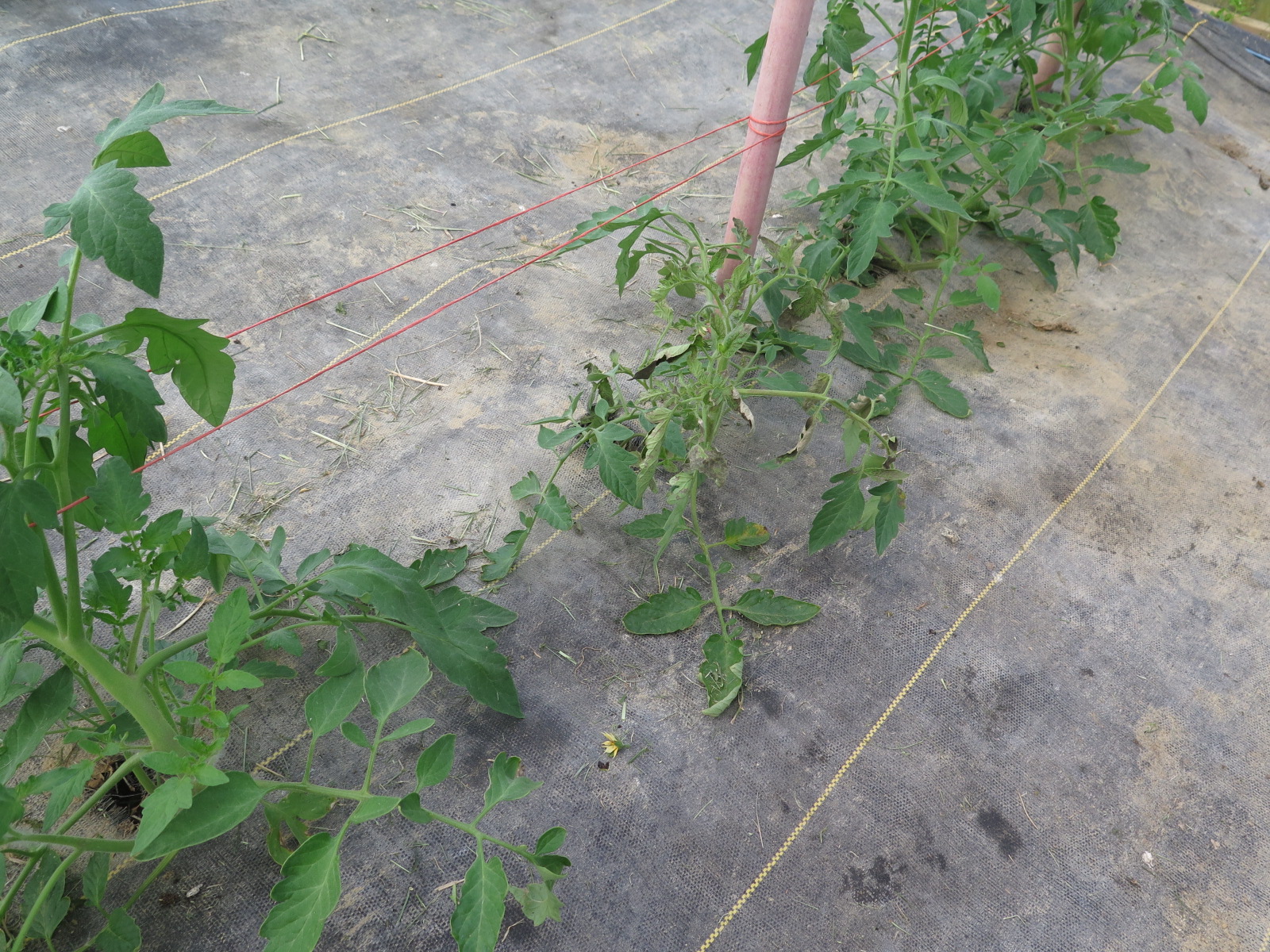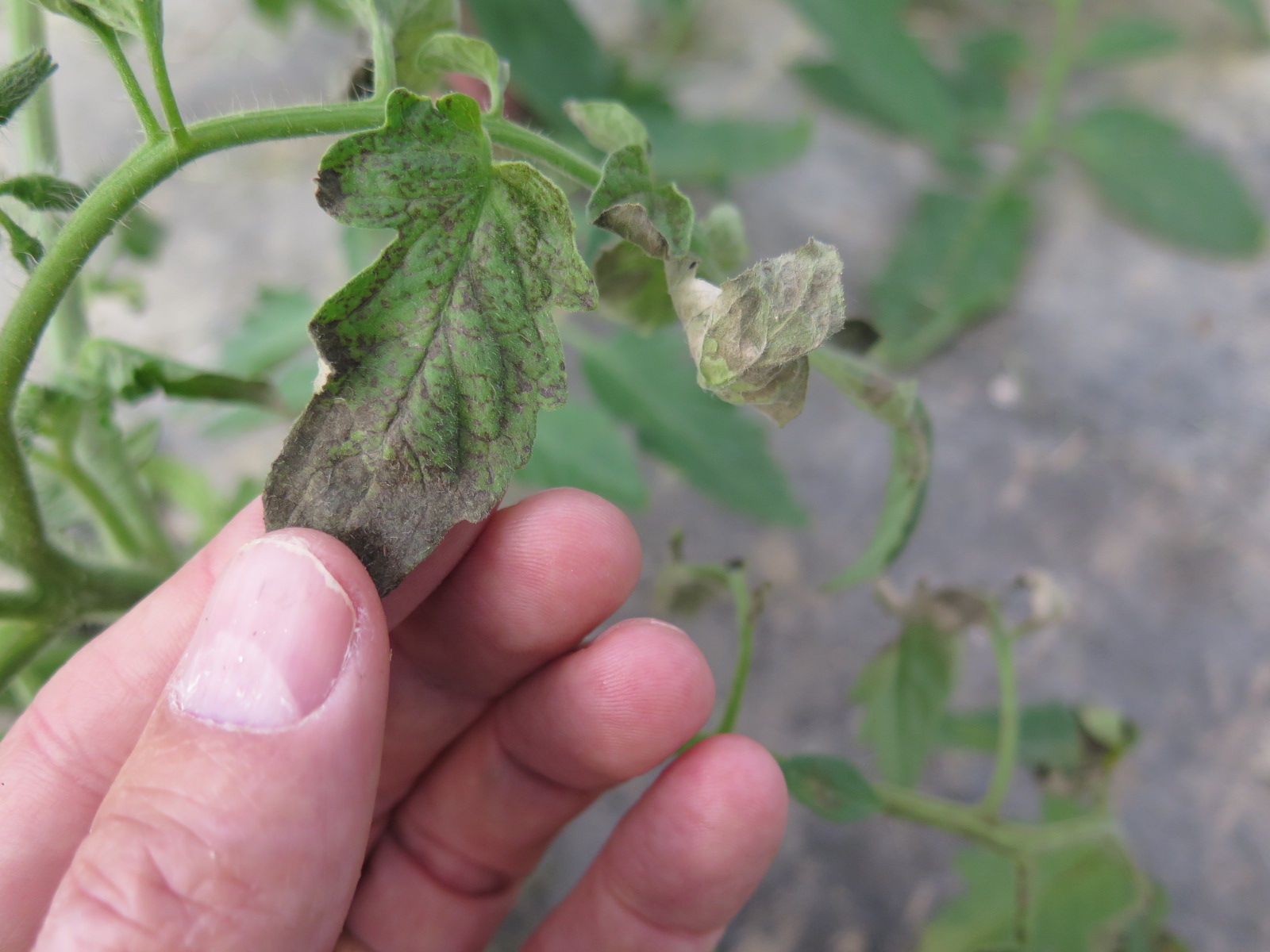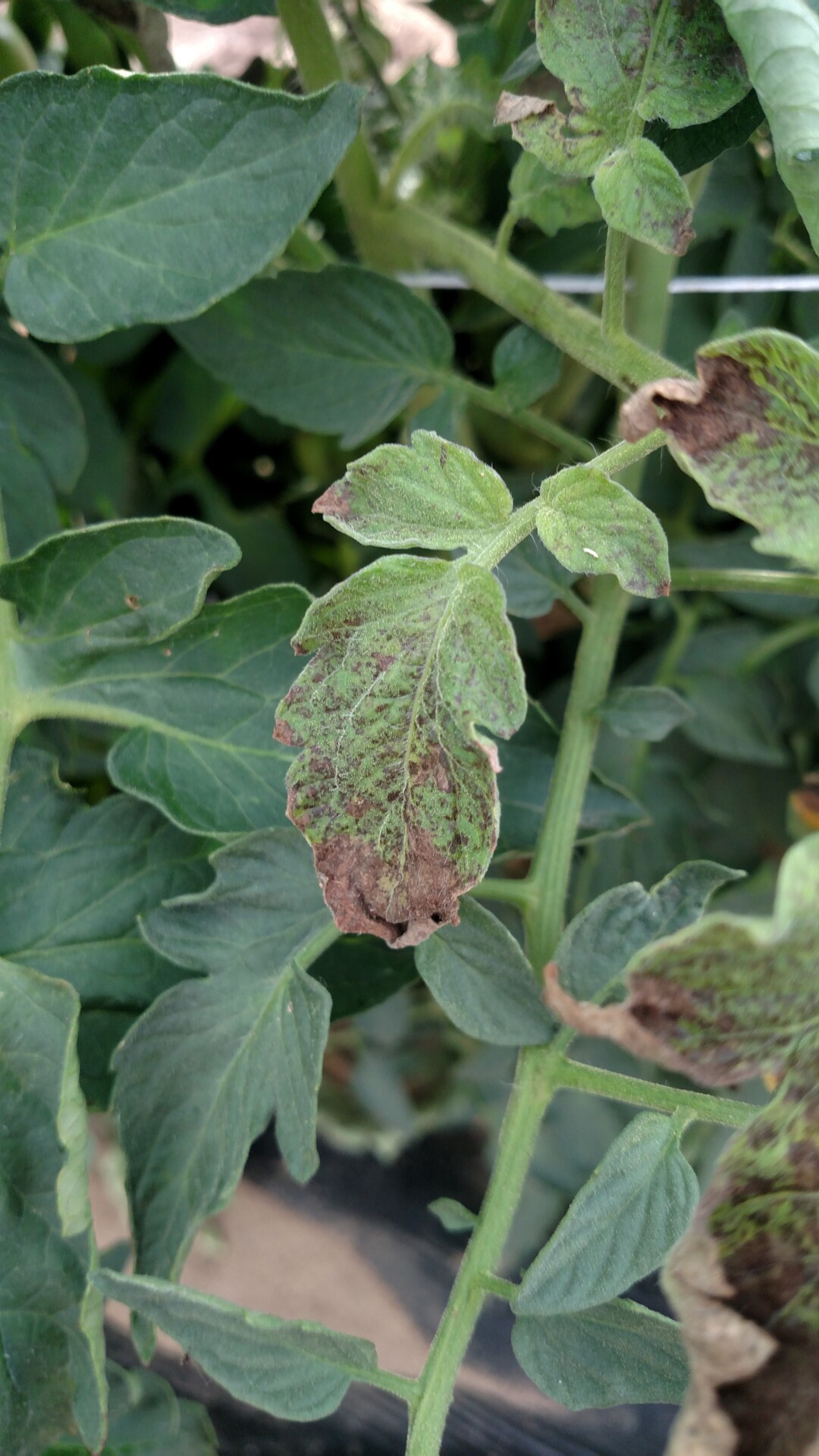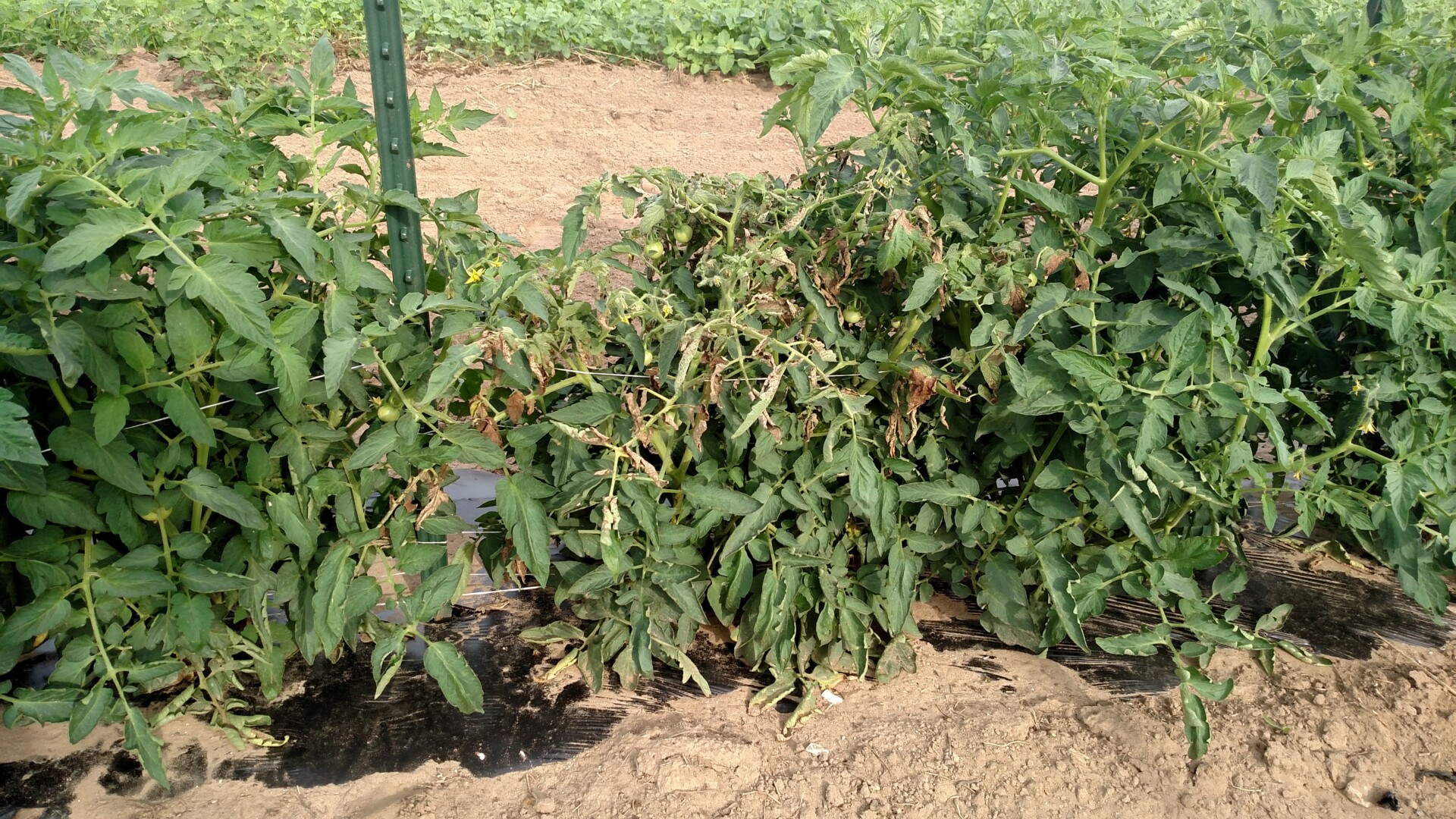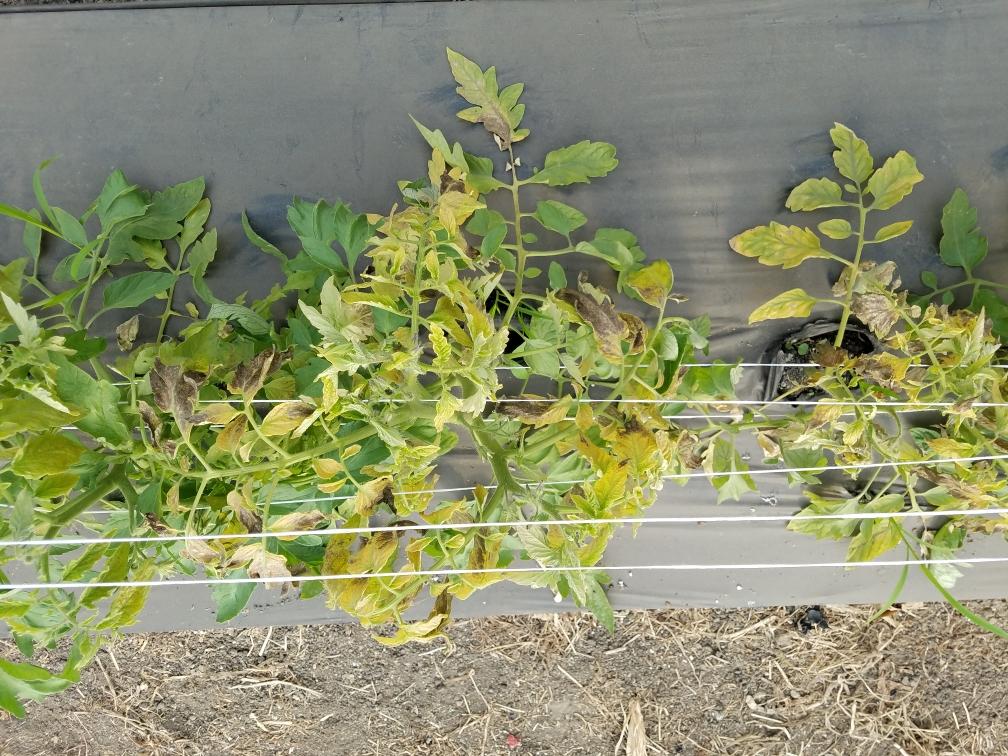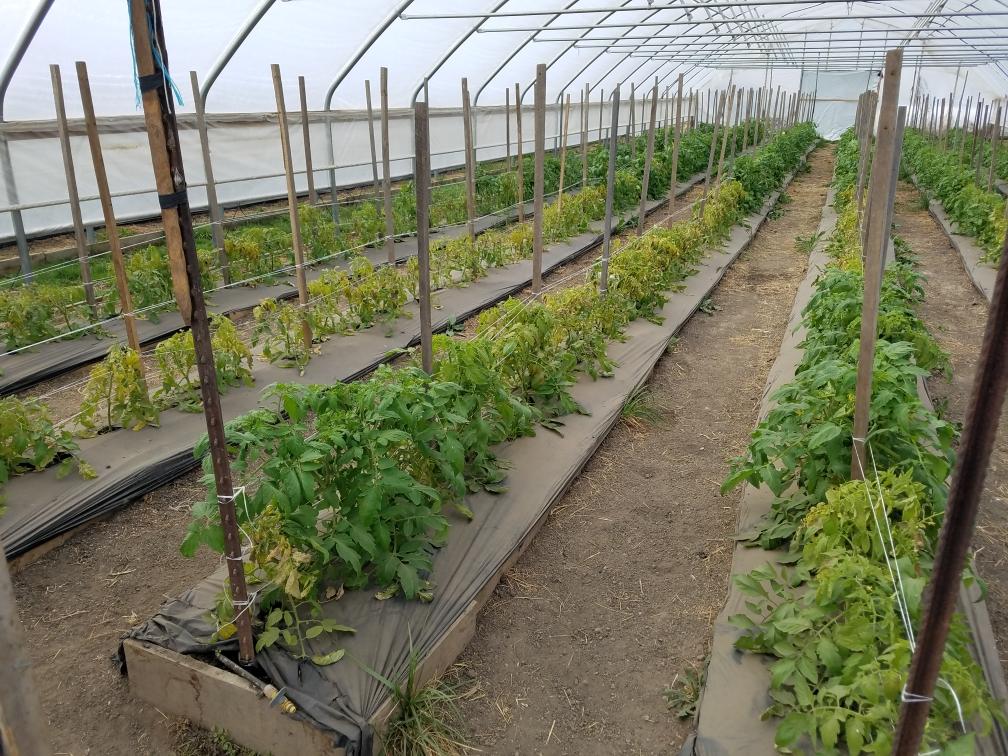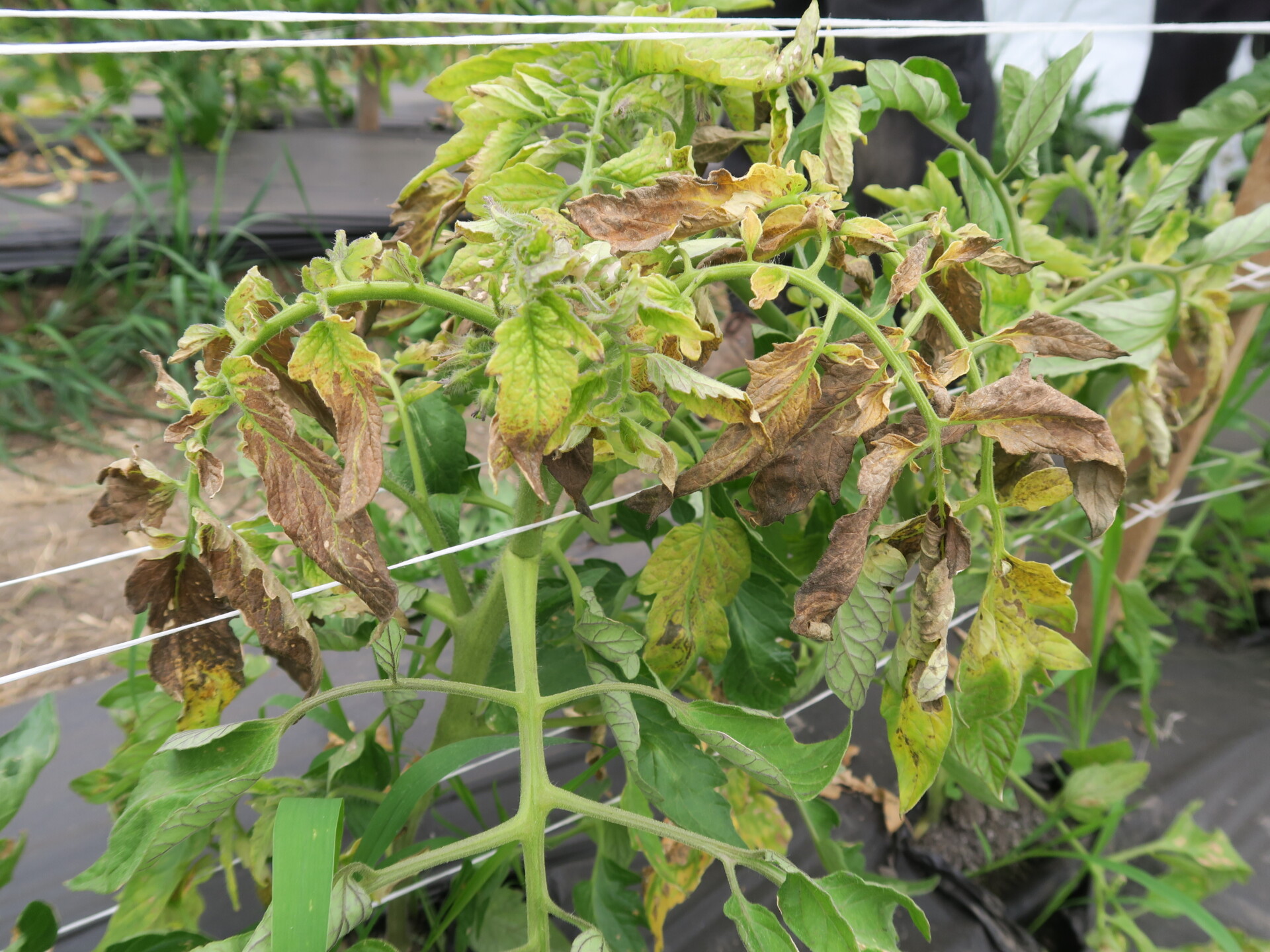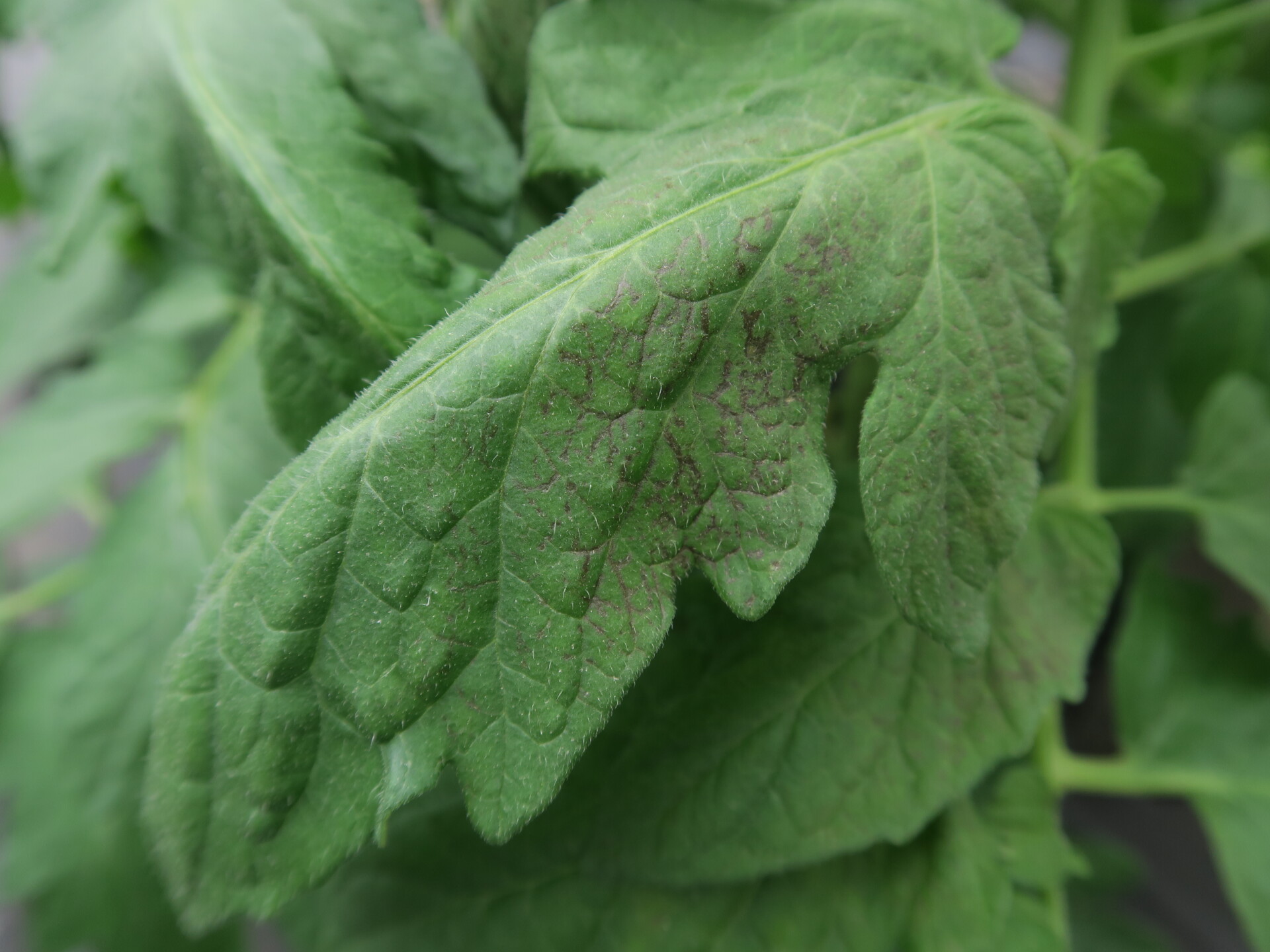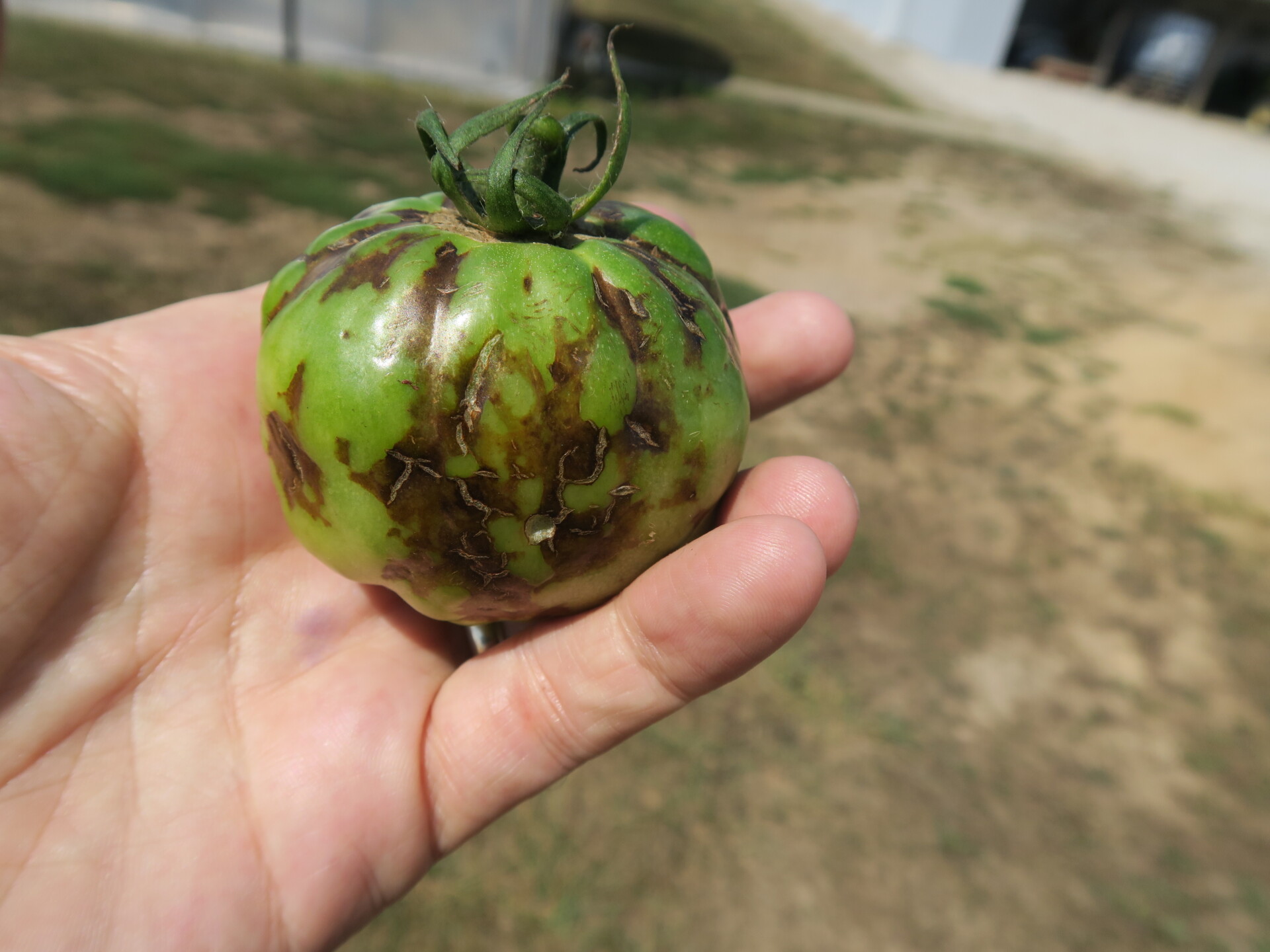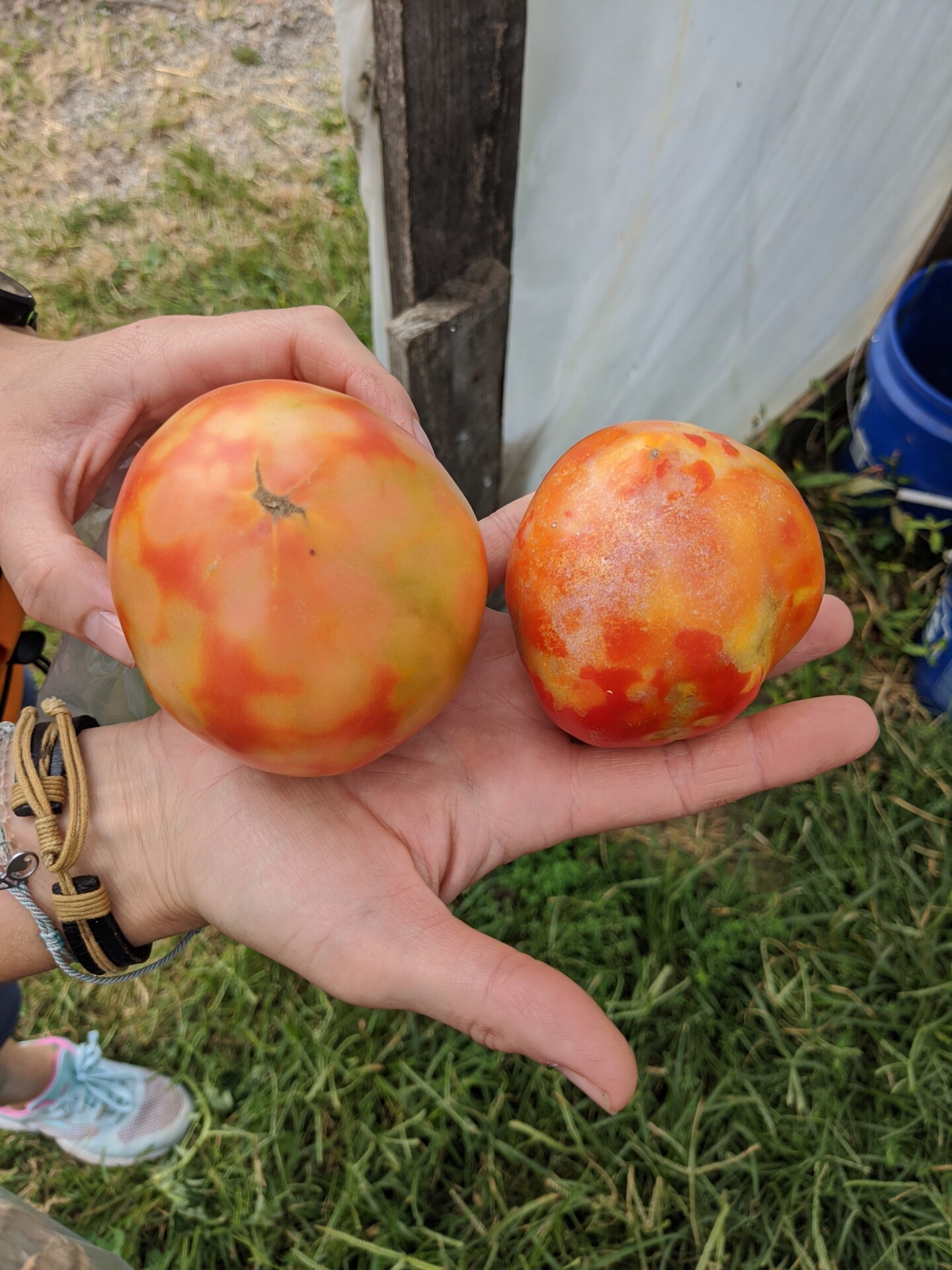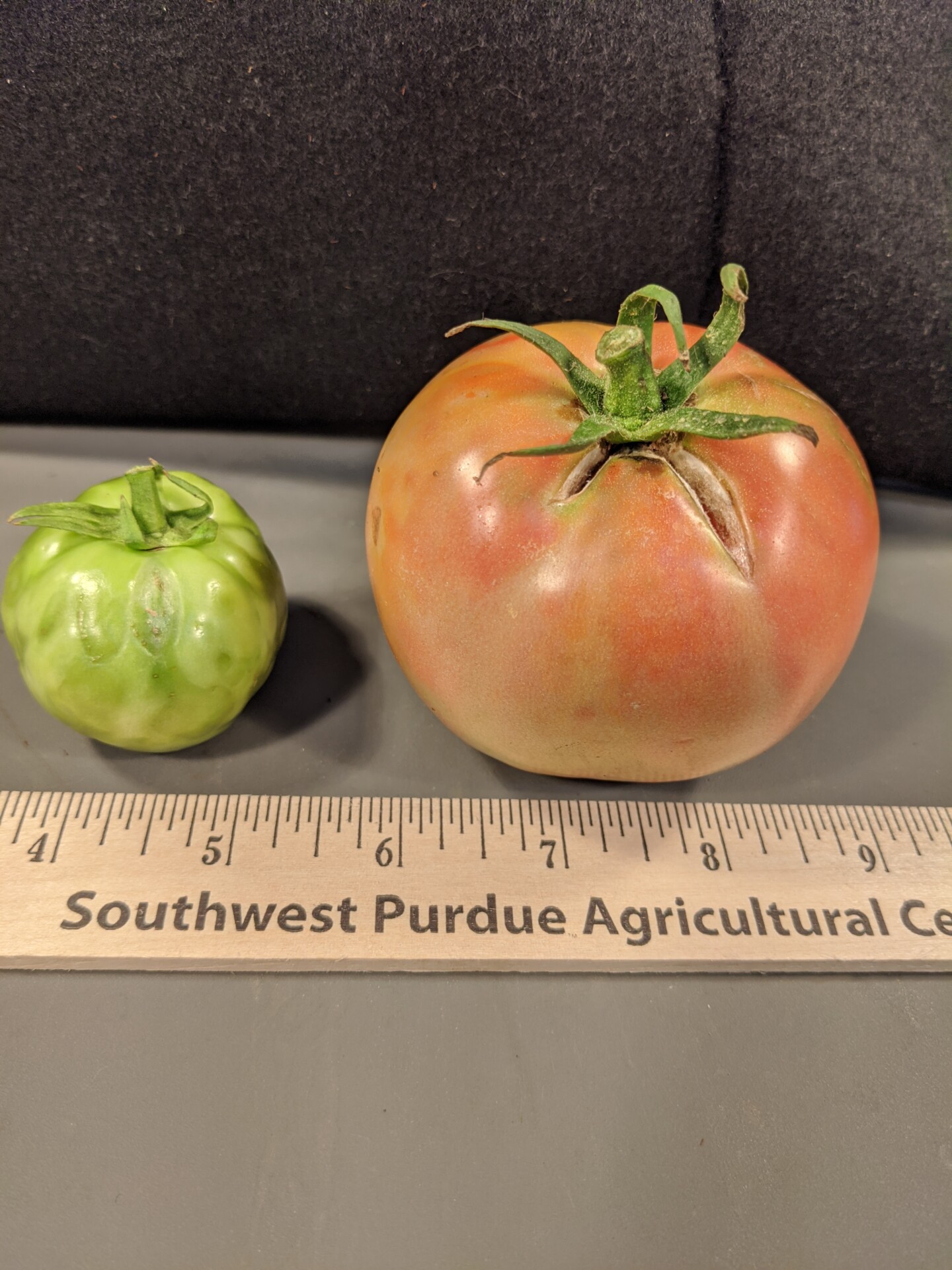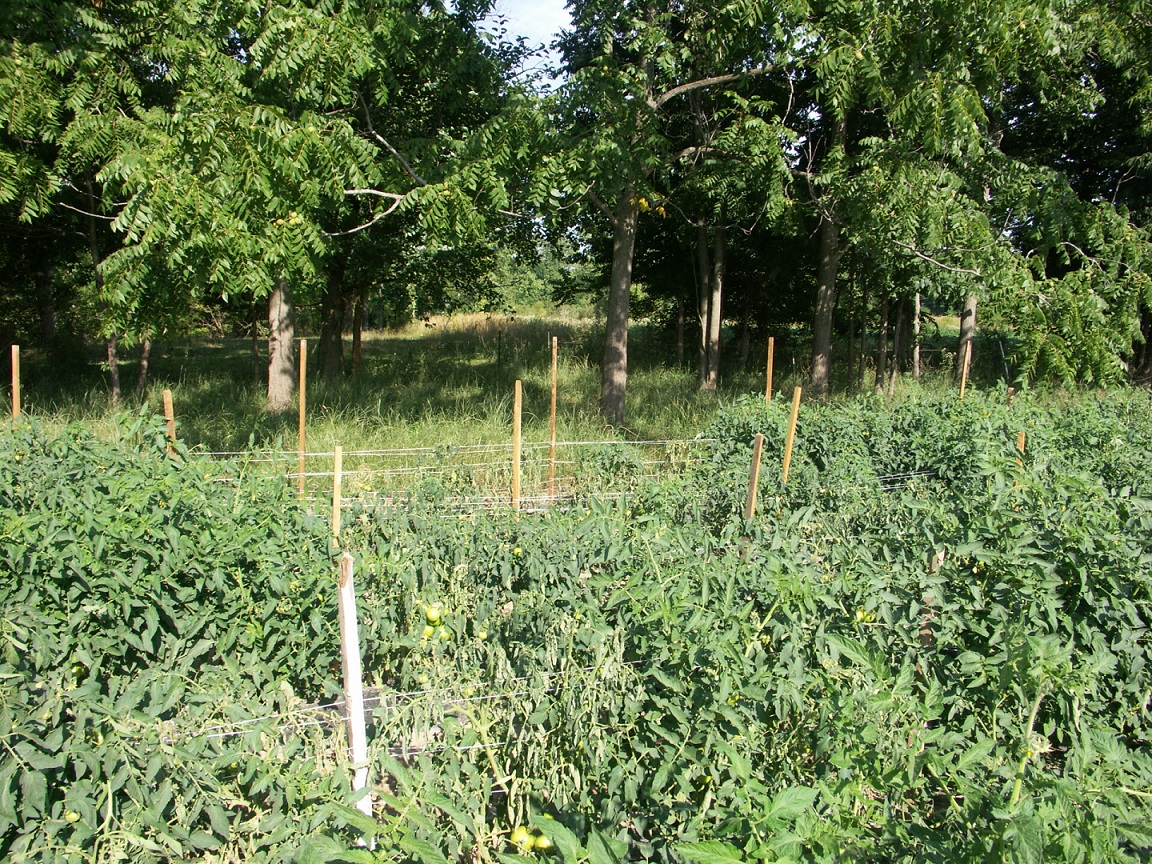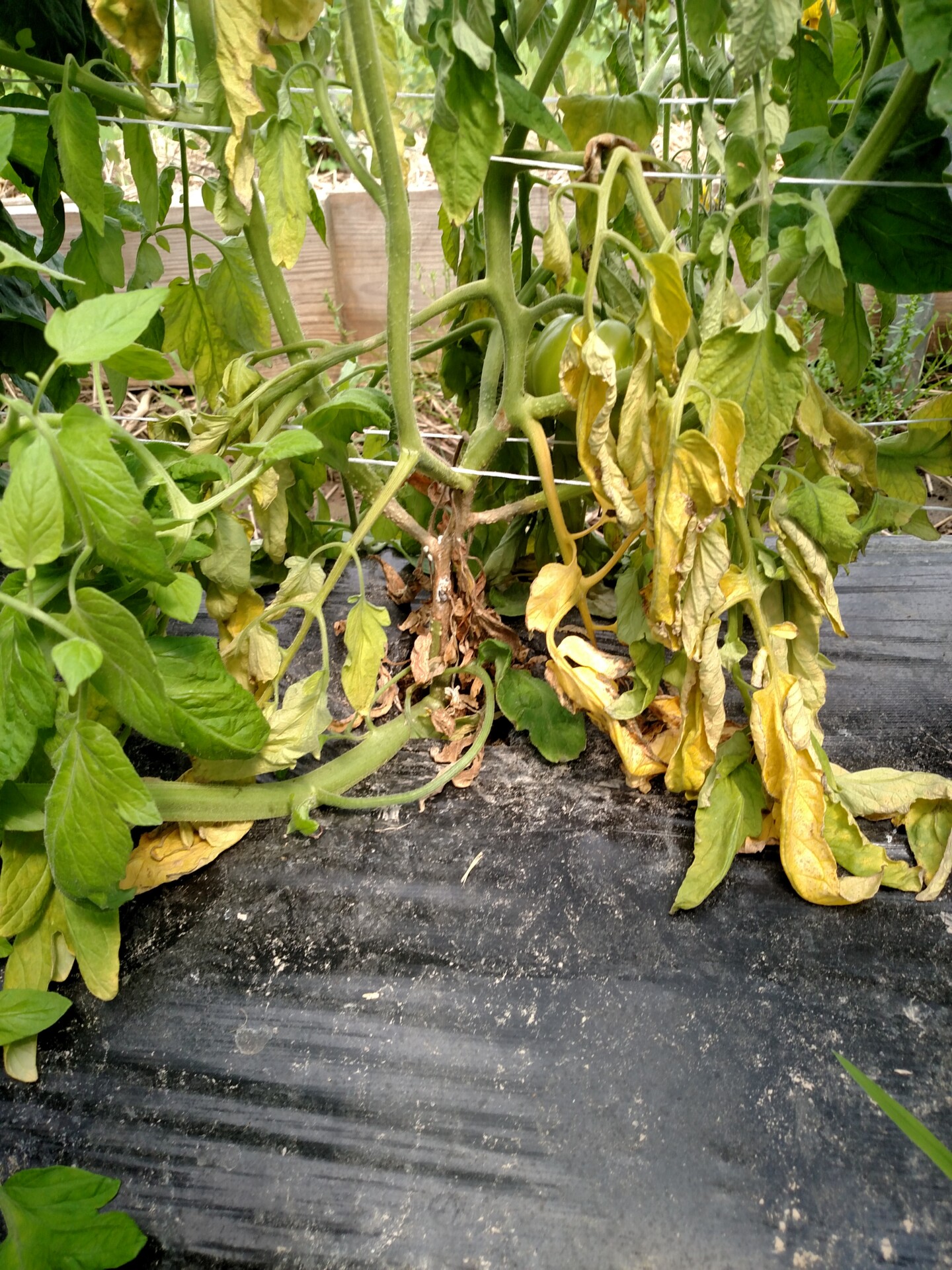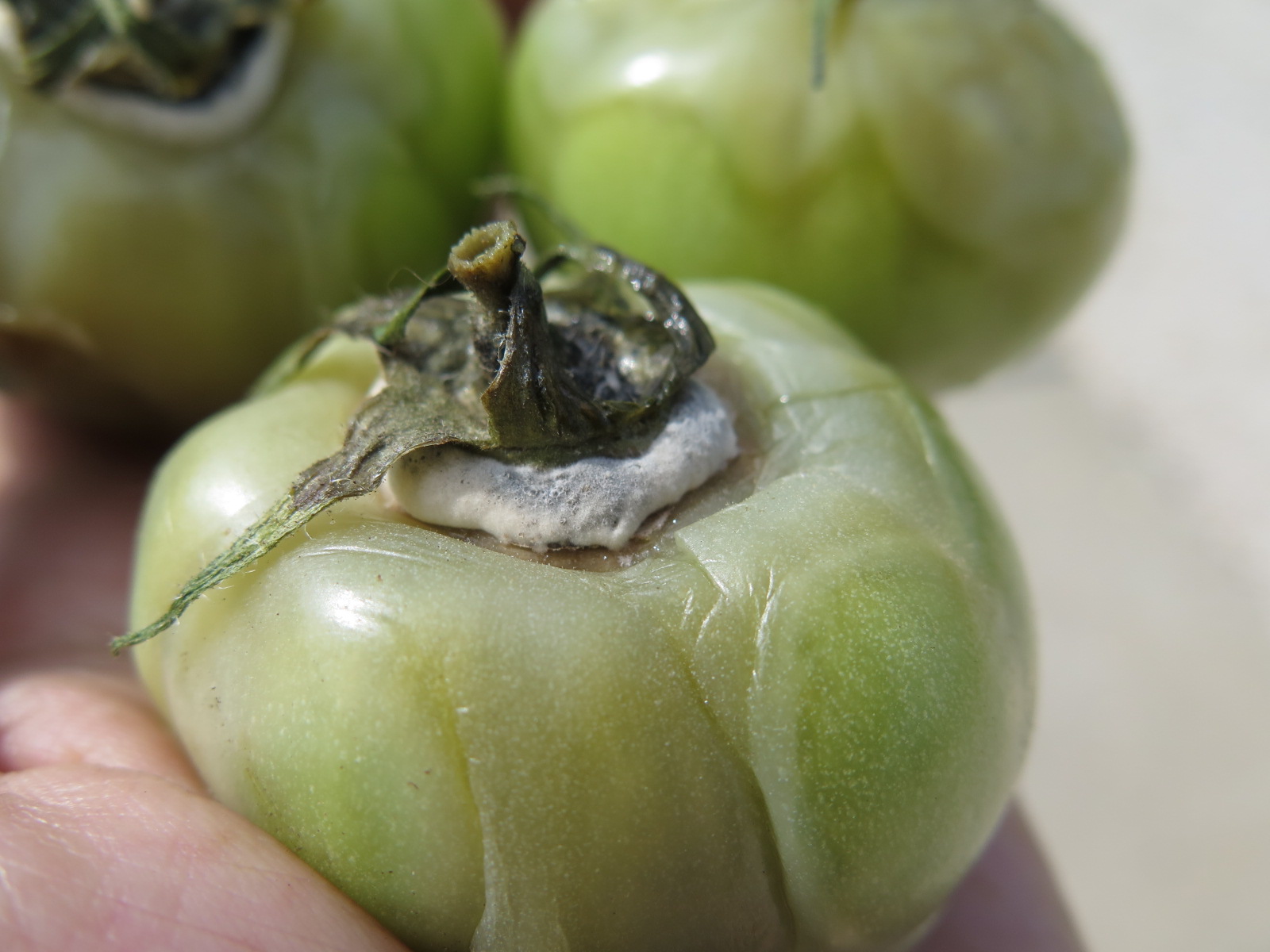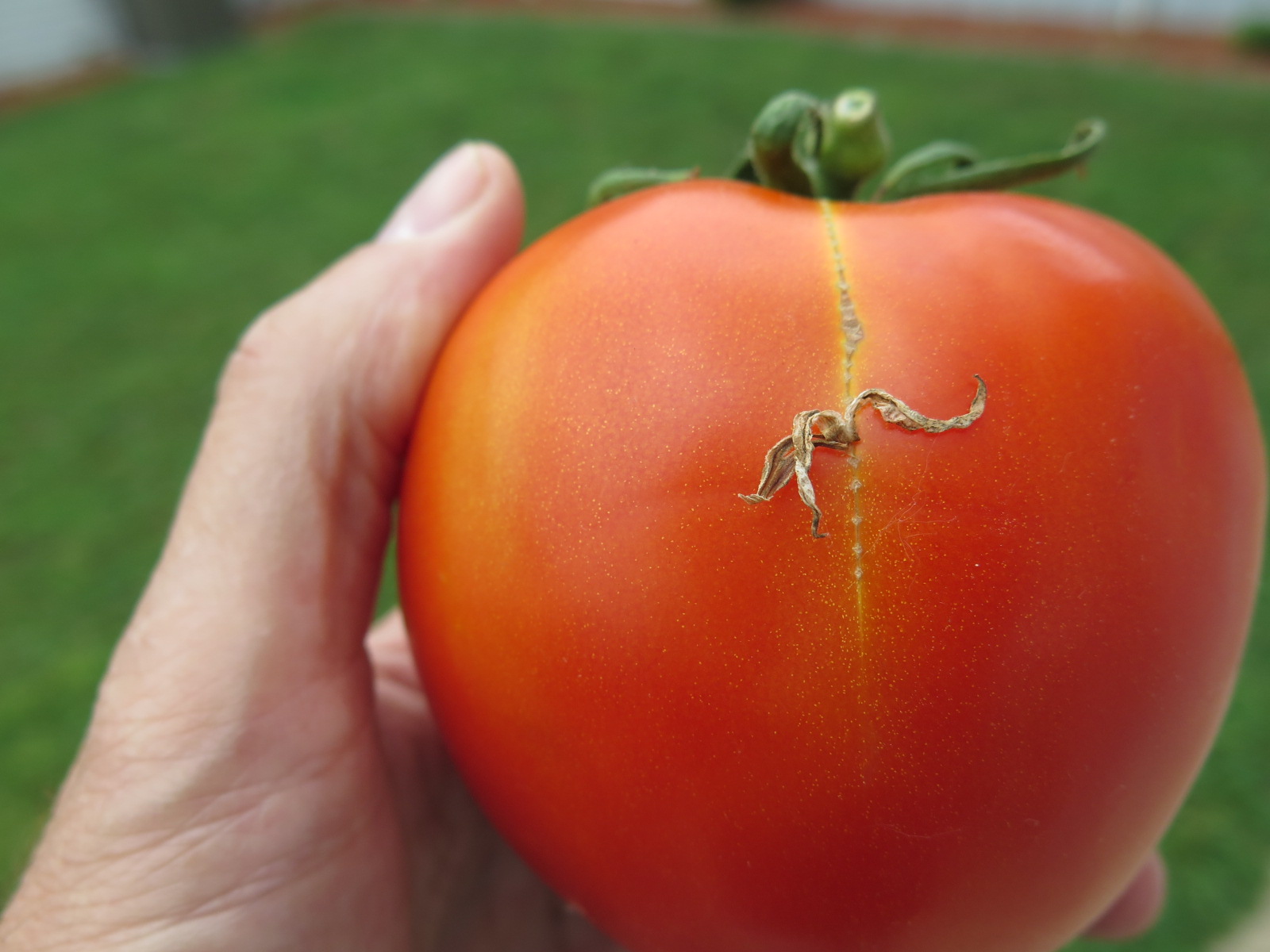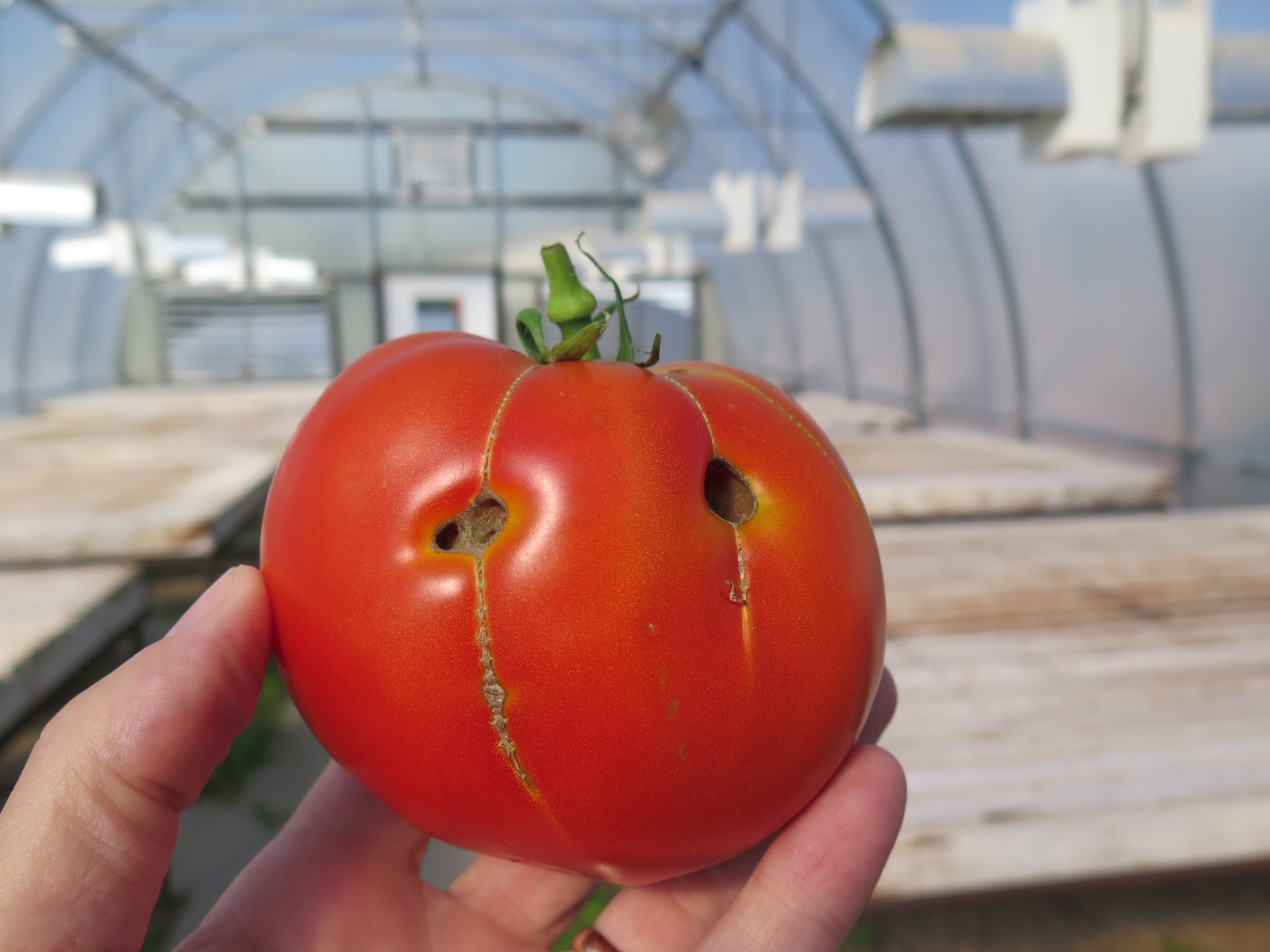tomato diseases
Bacterial canker
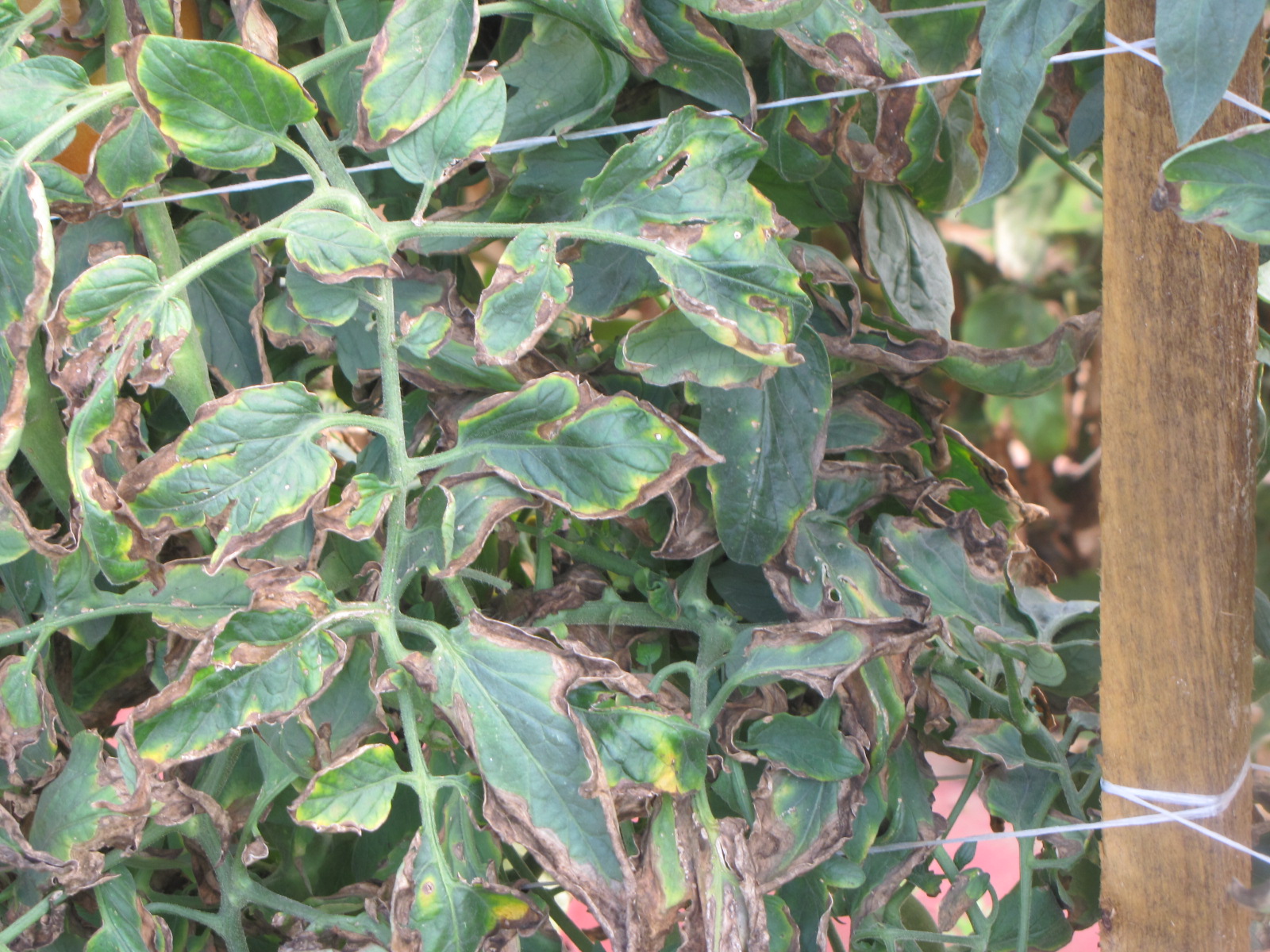 Figure 1. Necrosis and chlorosis on leaf margin, also known and ‘firing’, due to bacterial canker. This is a very common symptom.
Figure 1. Necrosis and chlorosis on leaf margin, also known and ‘firing’, due to bacterial canker. This is a very common symptom. 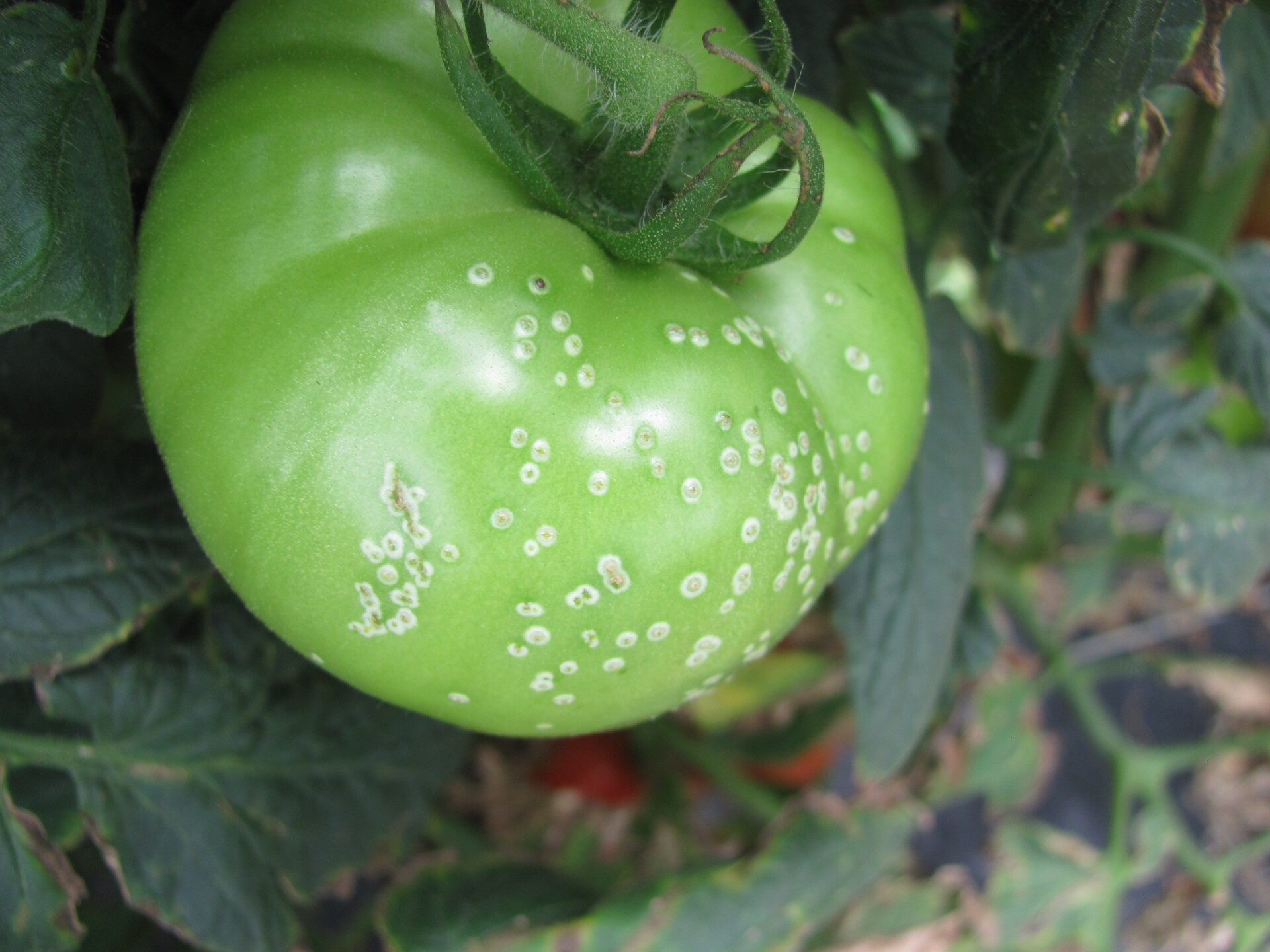 Figure 3. Bird’s eye spot infection on tomato fruit as a result of infection with bacterial canker. This symptom may not necessarily occur.
Figure 3. Bird’s eye spot infection on tomato fruit as a result of infection with bacterial canker. This symptom may not necessarily occur. Bacterial speck
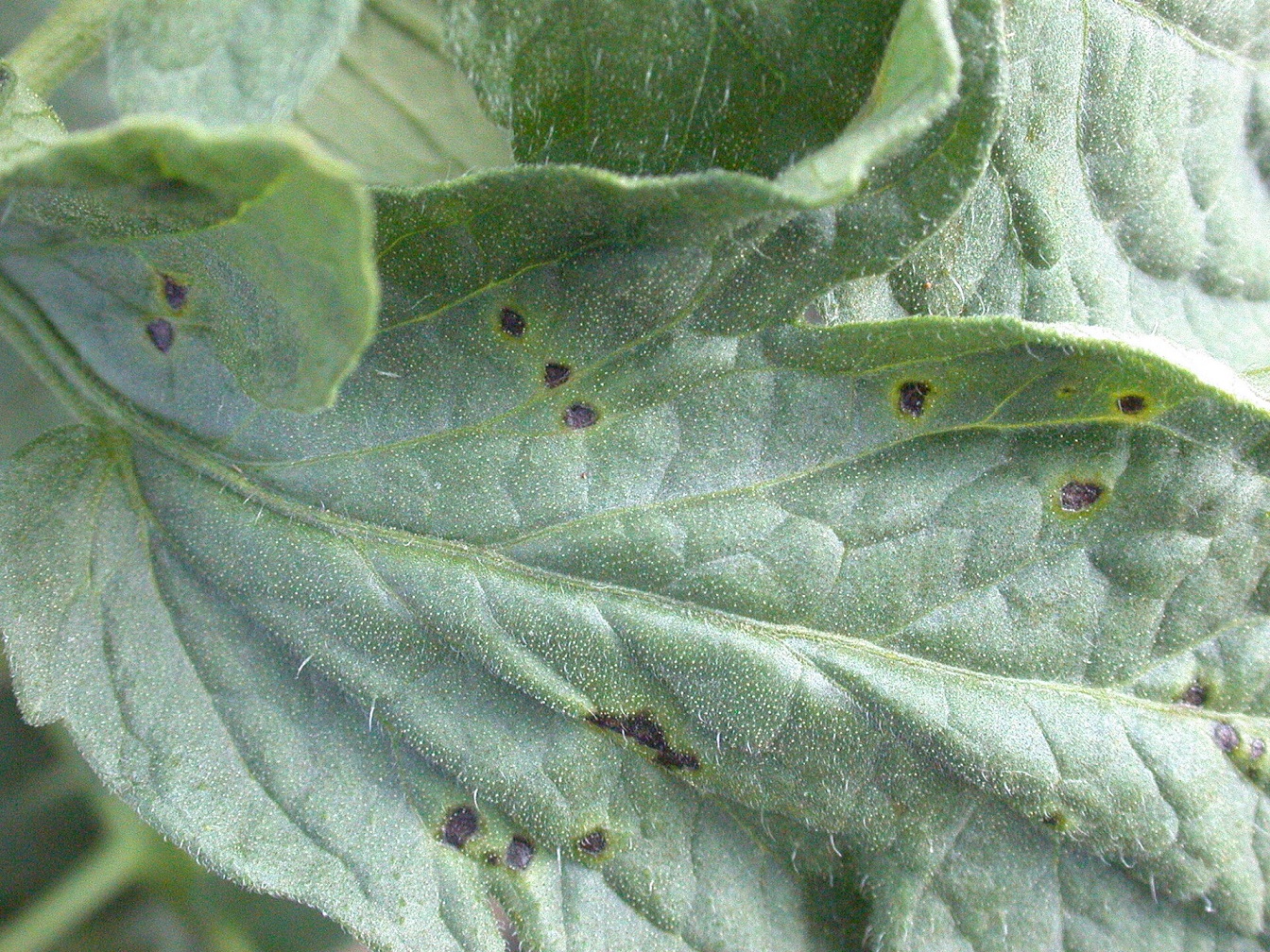 Figure 1. Bacterial speck of tomato. Note that each lesion on the leaf has a small chlorotic halo in contrast to bacterial spot where chlorosis usually does not occur until a large amount of lesions are in one small area.
Figure 1. Bacterial speck of tomato. Note that each lesion on the leaf has a small chlorotic halo in contrast to bacterial spot where chlorosis usually does not occur until a large amount of lesions are in one small area. Bacterial spot
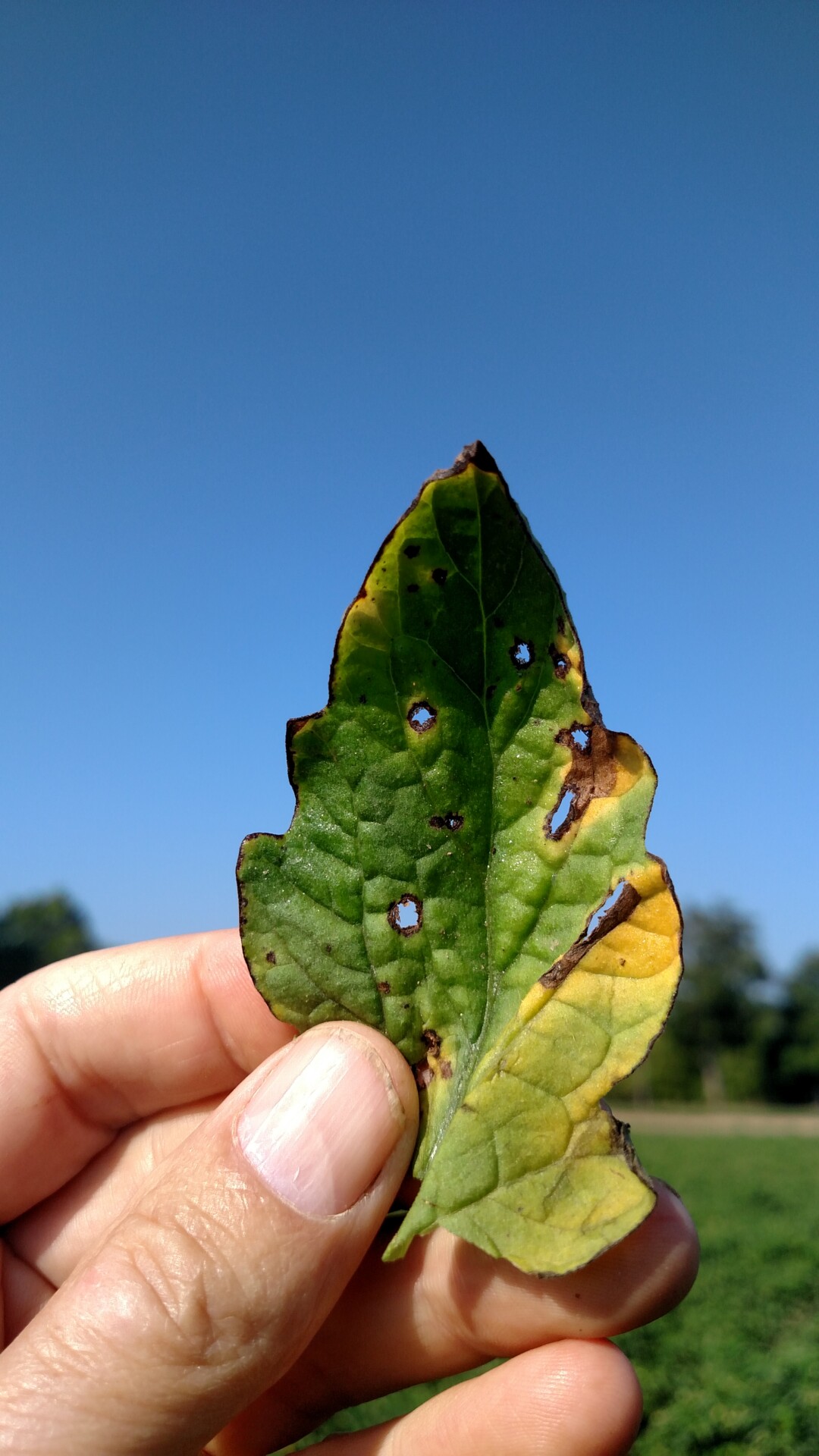 Figure 4. Symptoms caused by Xanthomonas perforans on a tomato leaf. The species name ‘perforans’ comes from the ability of the pathogen to perforate the leaf, although other symptom types are possible.
Figure 4. Symptoms caused by Xanthomonas perforans on a tomato leaf. The species name ‘perforans’ comes from the ability of the pathogen to perforate the leaf, although other symptom types are possible. 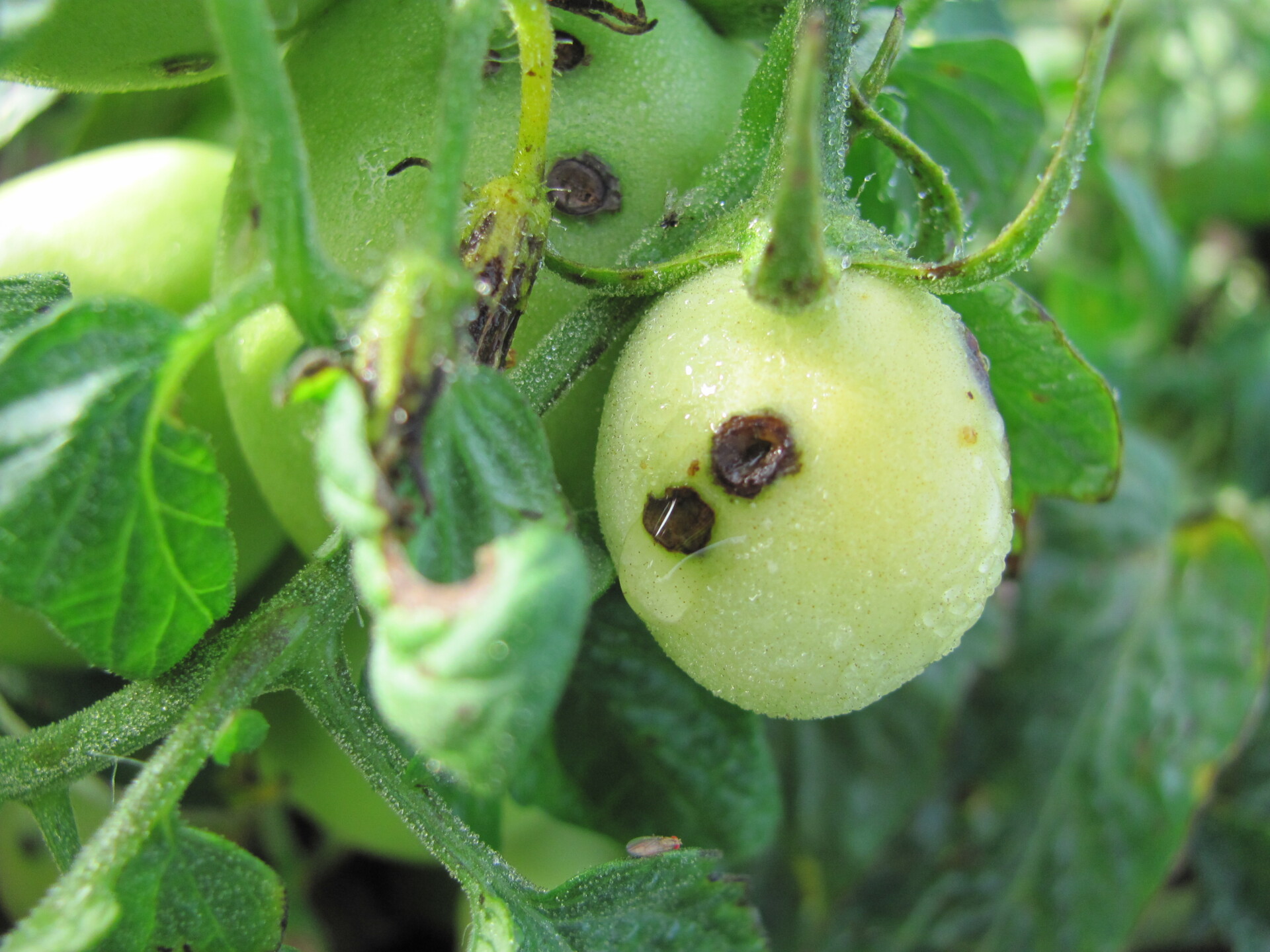 Figure 5. Bacterial spot lesions on fruit that is still wet with dew. Note the symptoms on flower bud.
Figure 5. Bacterial spot lesions on fruit that is still wet with dew. Note the symptoms on flower bud. Cercospora leaf mold
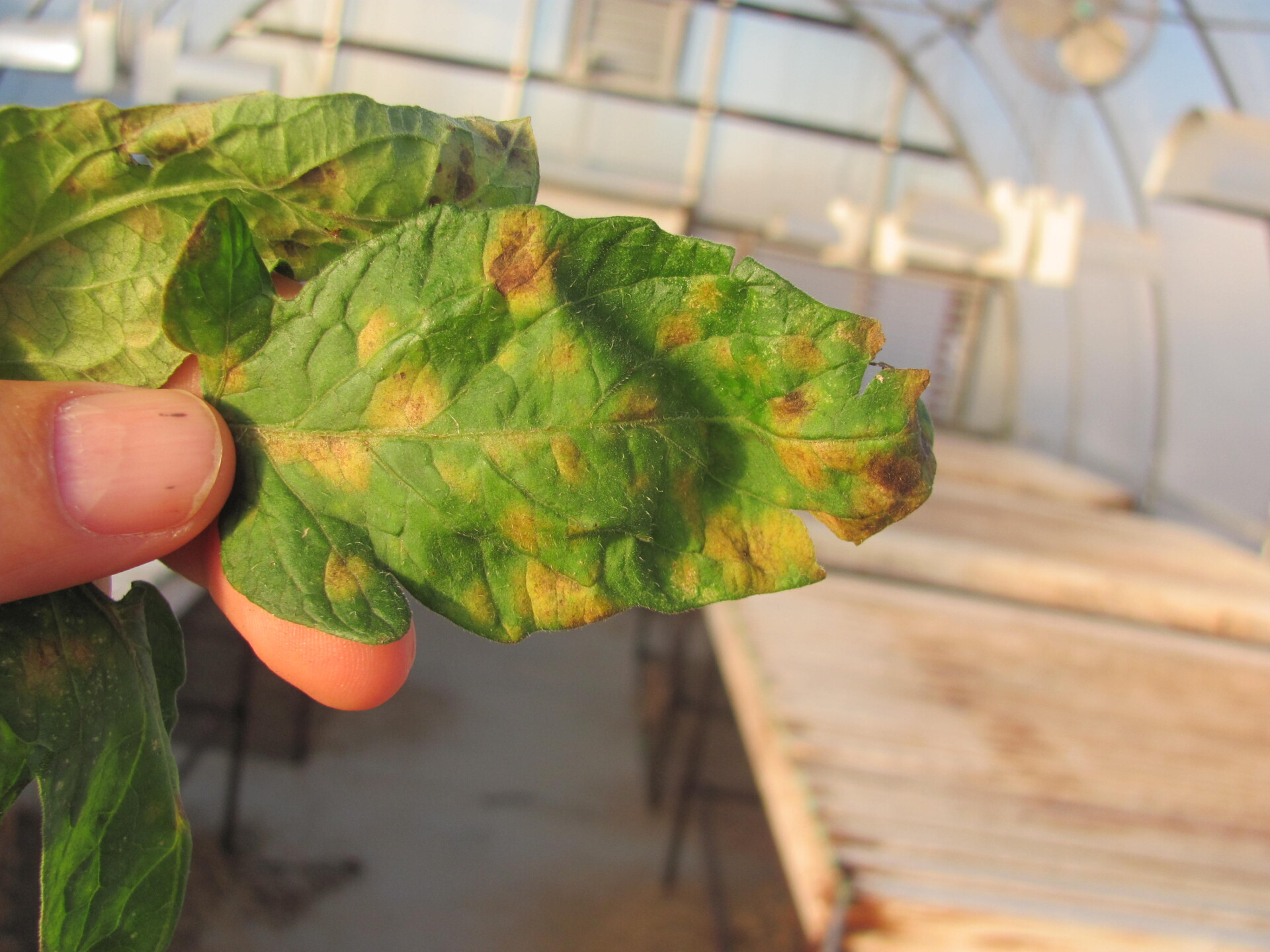 Figure 1. Cercospora leaf mold of tomato. Note relatively large lesions with diffuse chlorotic margins.
Figure 1. Cercospora leaf mold of tomato. Note relatively large lesions with diffuse chlorotic margins. 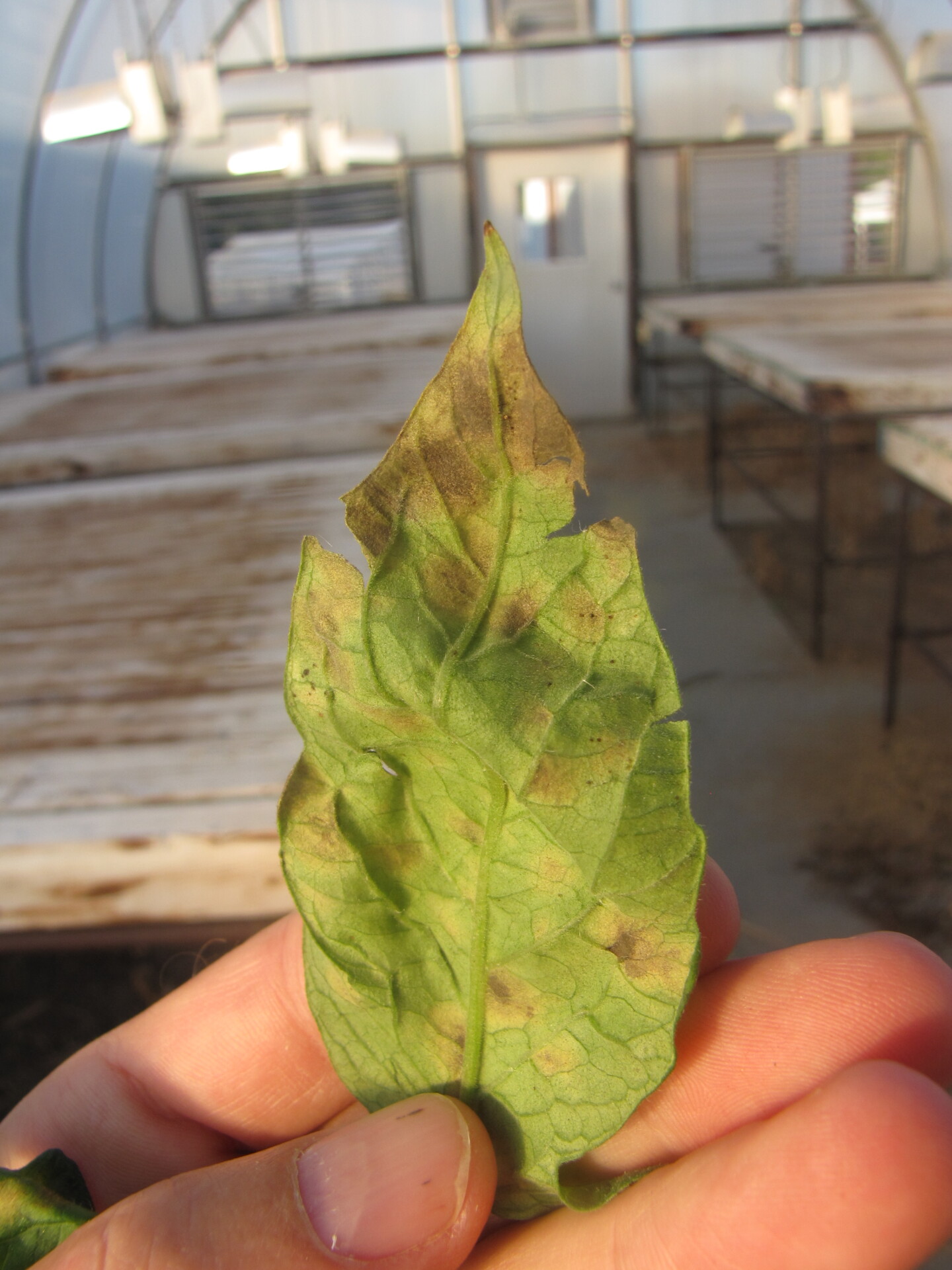 Figure 2. Underside of tomato leaf with Cercospora leaf mold. Note dark sporulation of pathogen and compare with leaf mold of tomato.
Figure 2. Underside of tomato leaf with Cercospora leaf mold. Note dark sporulation of pathogen and compare with leaf mold of tomato. Ethylene phytotoxicity
Fusarium crown & root rot
 Figure 1. The first symptom of Fusarium crown rot one of tomato is likely to notice is a wilted plant.
Figure 1. The first symptom of Fusarium crown rot one of tomato is likely to notice is a wilted plant.  Figure 2. Dark vascular discoloration is typical of crown rot of tomato. Whereas vascular discoloration of crown rot typically extends an inch or two up the stem, discoloration due to Fusarium wilt will extend for several inches. Note also that wilt due to Fusarium wilt tends to be one-sided whereas wilt due to crown rot is likely to be the entire plant.
Figure 2. Dark vascular discoloration is typical of crown rot of tomato. Whereas vascular discoloration of crown rot typically extends an inch or two up the stem, discoloration due to Fusarium wilt will extend for several inches. Note also that wilt due to Fusarium wilt tends to be one-sided whereas wilt due to crown rot is likely to be the entire plant. Gray mold
 Figure 3. Gray mold lesions on leaves are often light brown or gray, often on the edge of the leaf and may show a ring-structure. Note sporulation of fungus observed in the crack of the lesion.
Figure 3. Gray mold lesions on leaves are often light brown or gray, often on the edge of the leaf and may show a ring-structure. Note sporulation of fungus observed in the crack of the lesion. 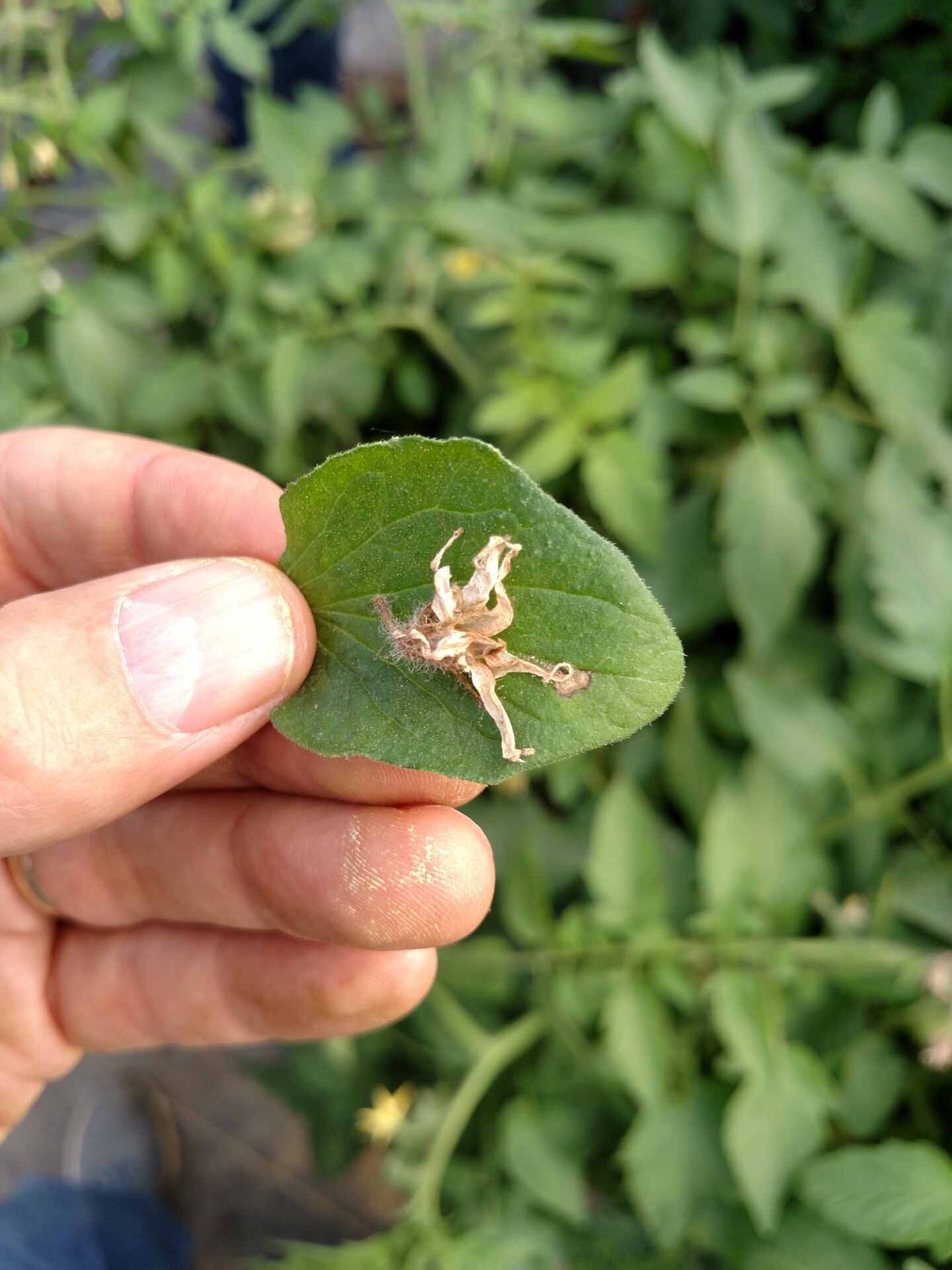 Figure 9. Tomato flower blossom with gray mold sporulation appears to have fallen on leaf where a new lesion has started.
Figure 9. Tomato flower blossom with gray mold sporulation appears to have fallen on leaf where a new lesion has started. Late blight
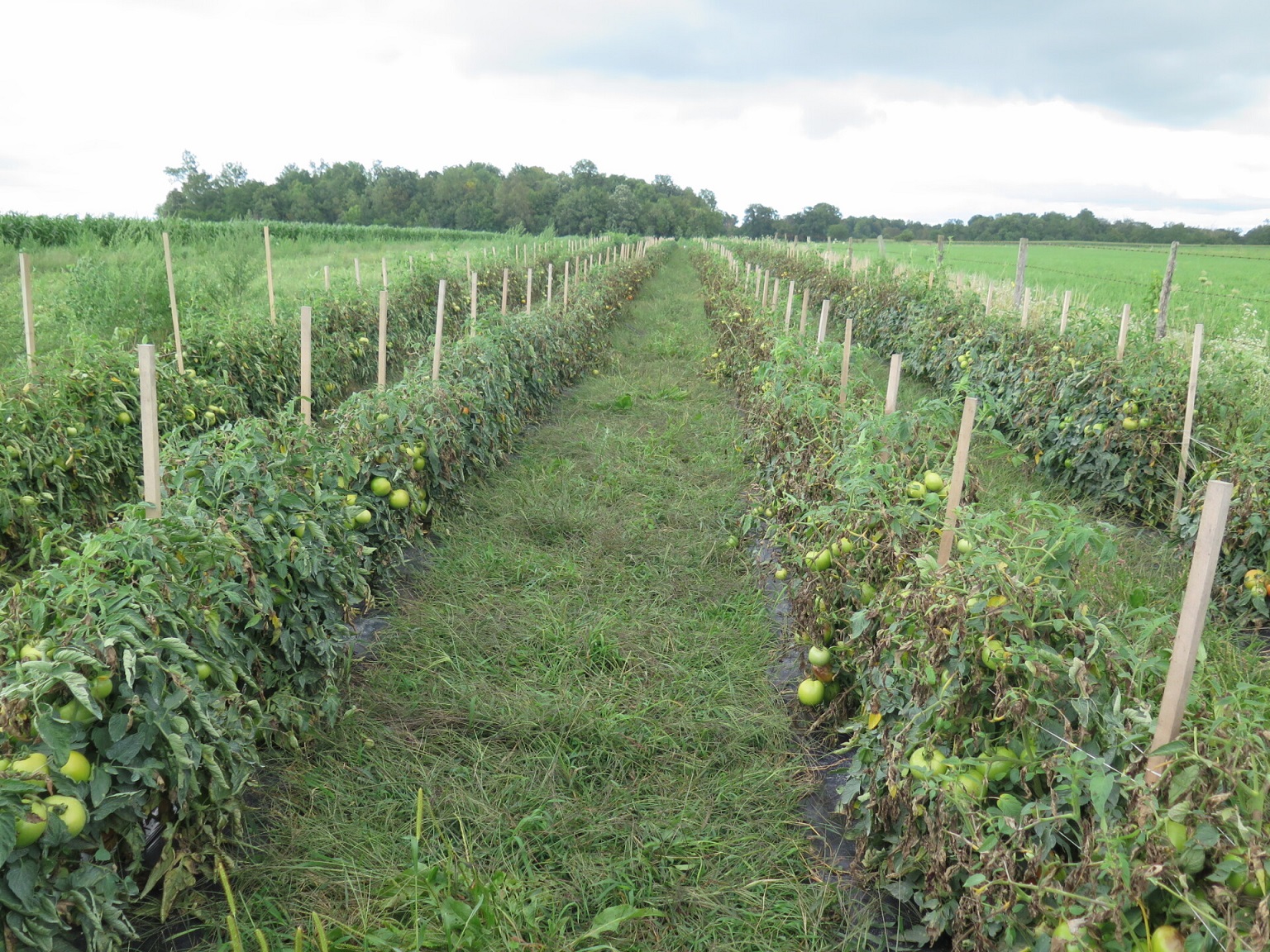 Figure 1. Although late blight is not common in Indiana, when it occurs, it can spread rapidly in a field such as this one.
Figure 1. Although late blight is not common in Indiana, when it occurs, it can spread rapidly in a field such as this one.  Figure 4. The white cast on this tomato leaf with late blight indicates sporulation of the causal organism.
Figure 4. The white cast on this tomato leaf with late blight indicates sporulation of the causal organism. Leaf mold
 Figure 3. Underside of tomato leaf with leaf mold showing sporulation of causal fungus just starting.
Figure 3. Underside of tomato leaf with leaf mold showing sporulation of causal fungus just starting. 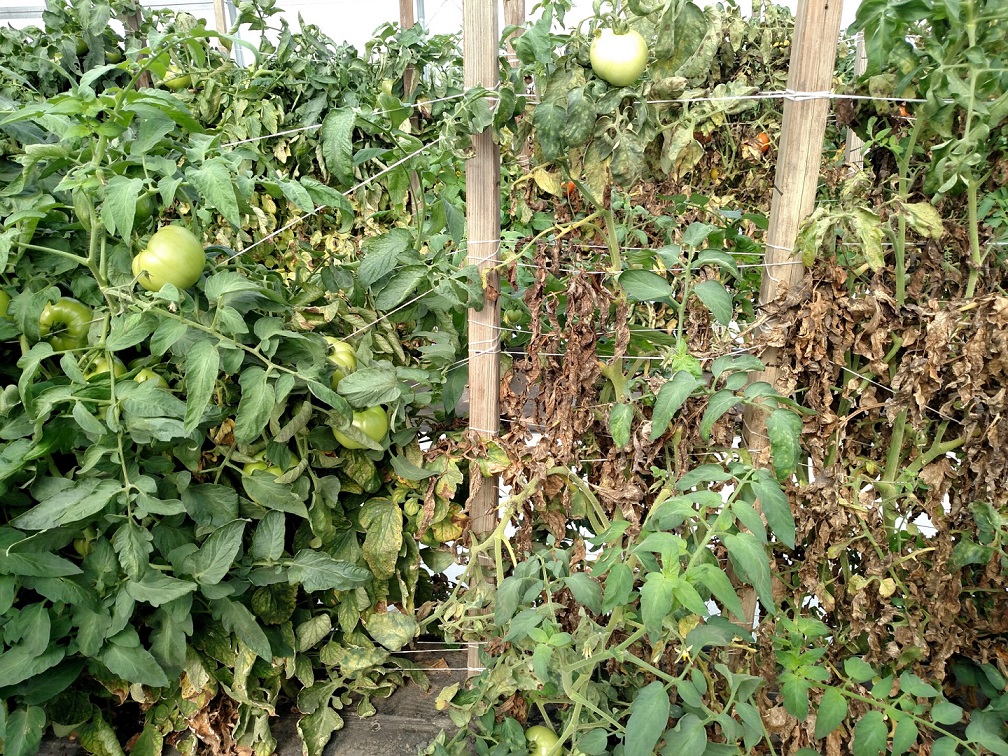 Figure 7. Leaf mold of tomato. The variety on the left is partially resistant, while the variety on the right is susceptible.
Figure 7. Leaf mold of tomato. The variety on the left is partially resistant, while the variety on the right is susceptible. Leaf roll
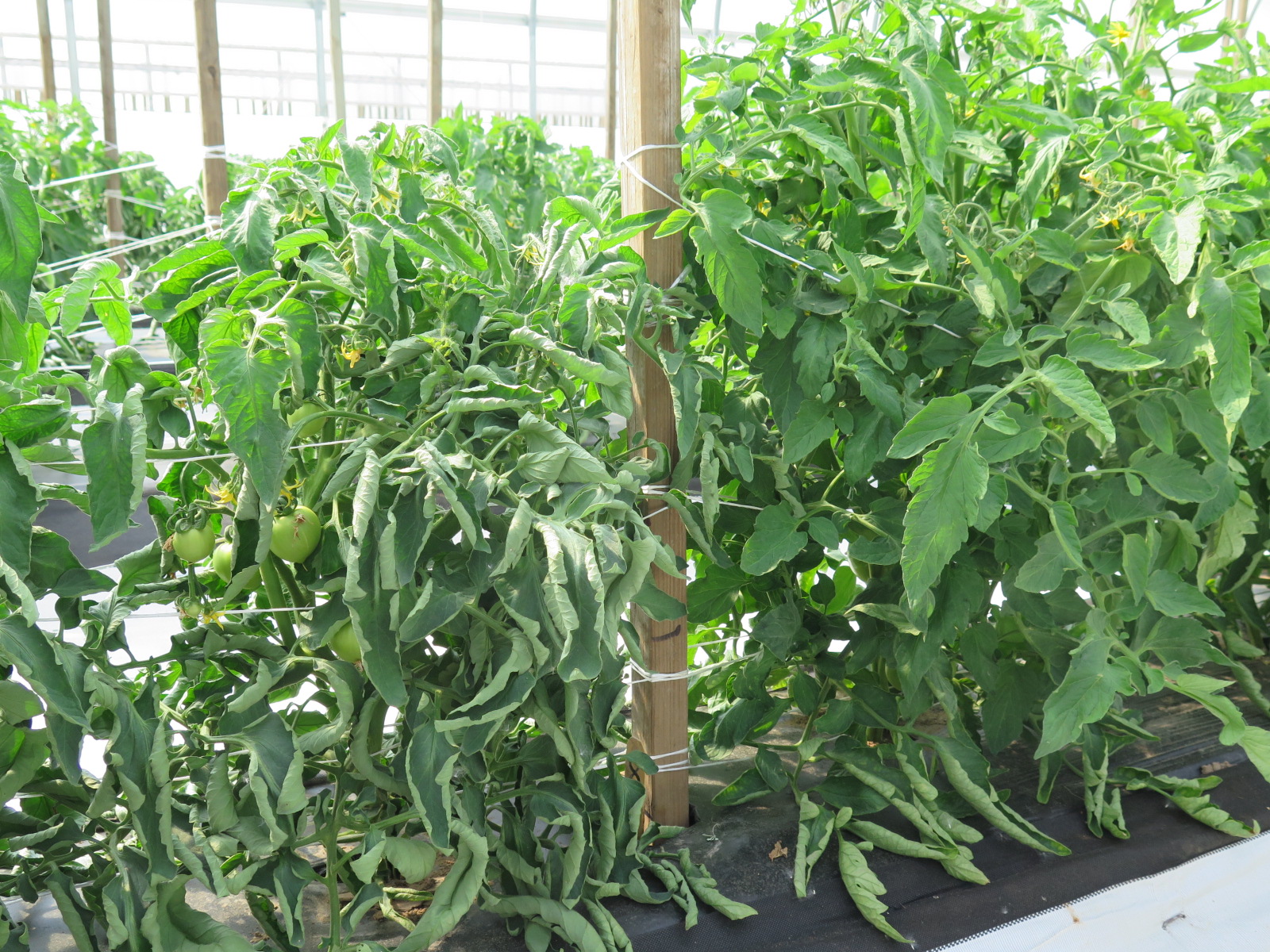 Figure 1. Although leaf roll of tomato leaves can sometimes indicate stress, leaf roll can also be genetic. The leaf roll on the plant to the left is due to variety and does not indicate a problem with the plant. The plant to the right, in contrast, is a different variety and does not exhibit leaf roll.
Figure 1. Although leaf roll of tomato leaves can sometimes indicate stress, leaf roll can also be genetic. The leaf roll on the plant to the left is due to variety and does not indicate a problem with the plant. The plant to the right, in contrast, is a different variety and does not exhibit leaf roll. Powdery mildew
Septoria leaf spot
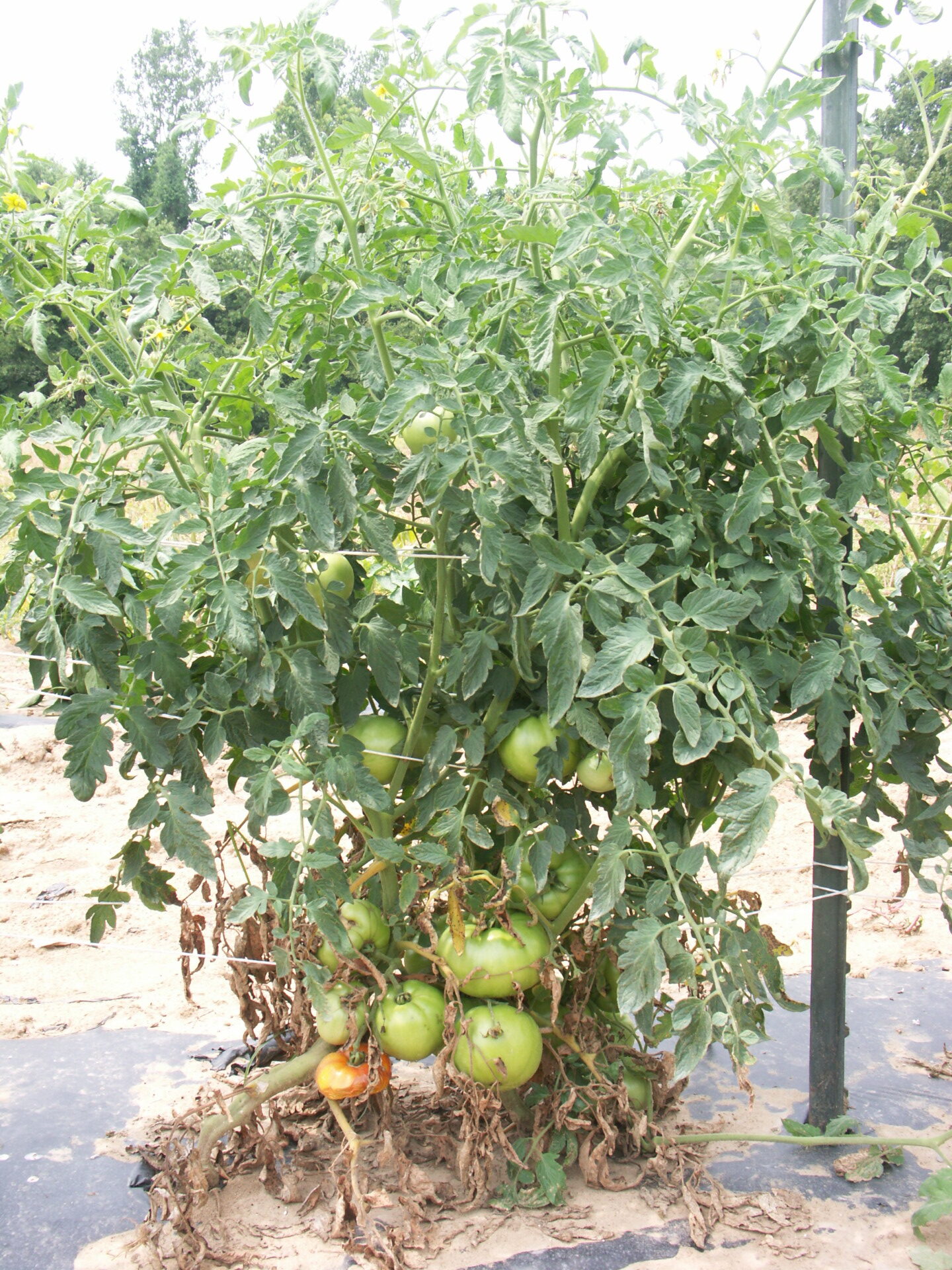 Figure 1. Septoria leaf spot of tomato is more severe on older leaves. Thus, older leaves are often the first to show symptoms.
Figure 1. Septoria leaf spot of tomato is more severe on older leaves. Thus, older leaves are often the first to show symptoms.  Figure 4. Septoria leaf spot of tomato. Note gray center of lesion and gray margin. Dark, fungal bodies may visible in the lesion center with 10X hand lens.
Figure 4. Septoria leaf spot of tomato. Note gray center of lesion and gray margin. Dark, fungal bodies may visible in the lesion center with 10X hand lens. 
